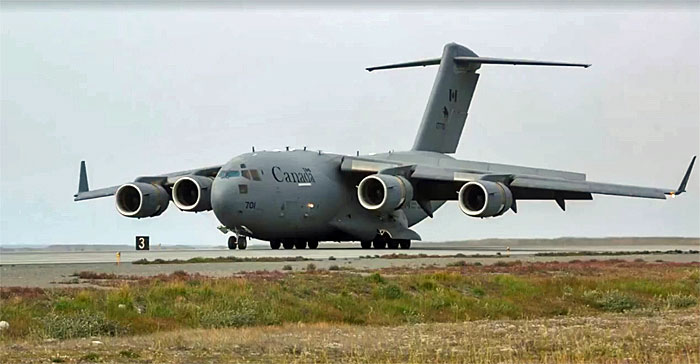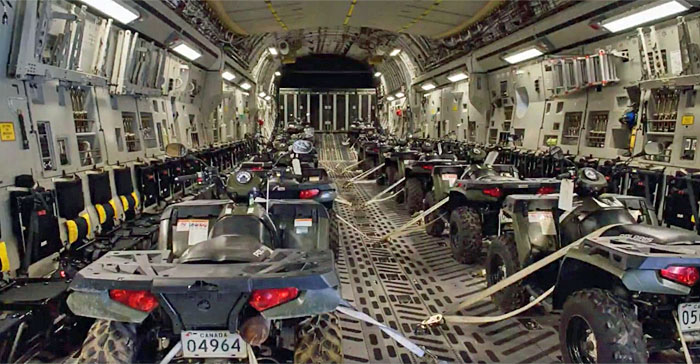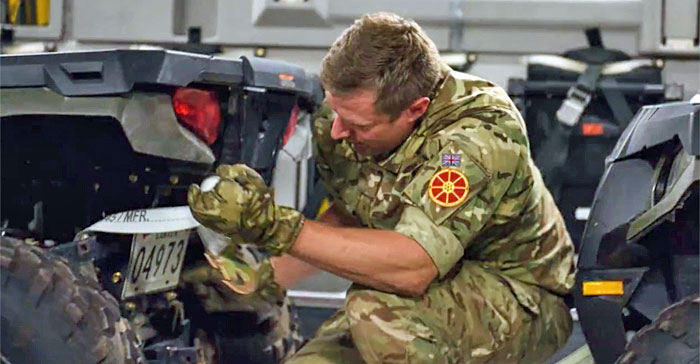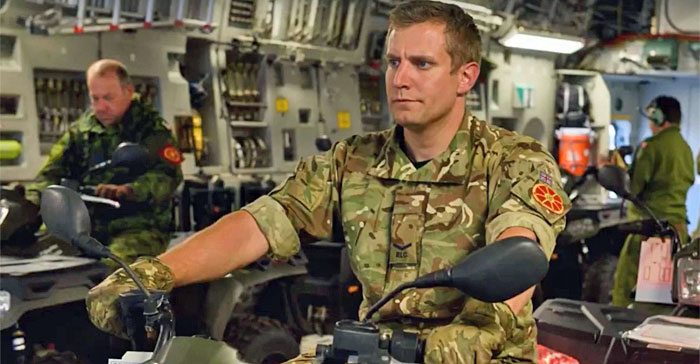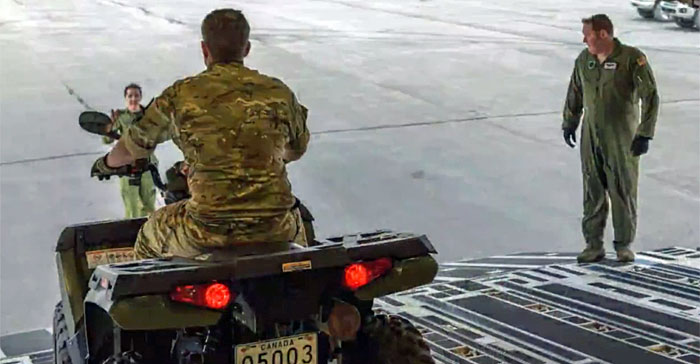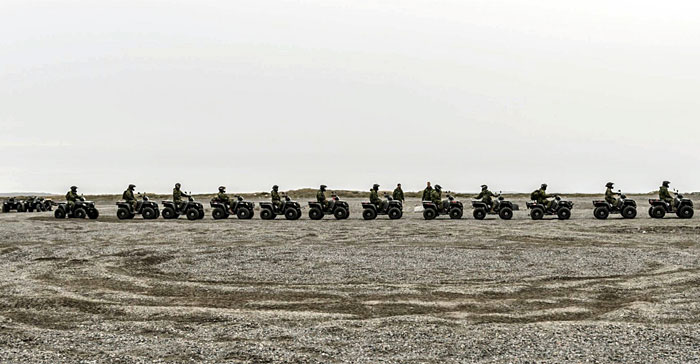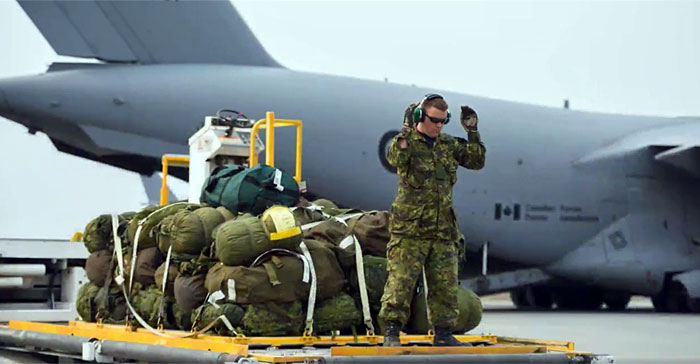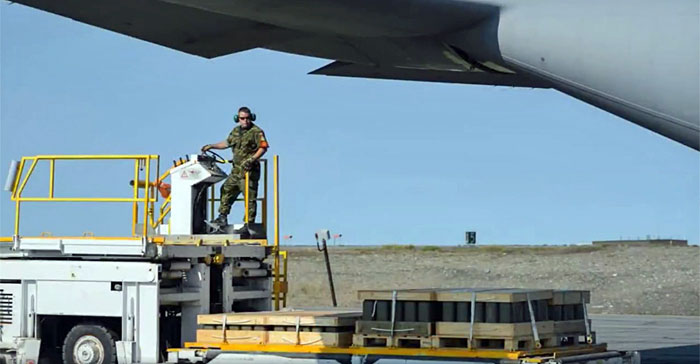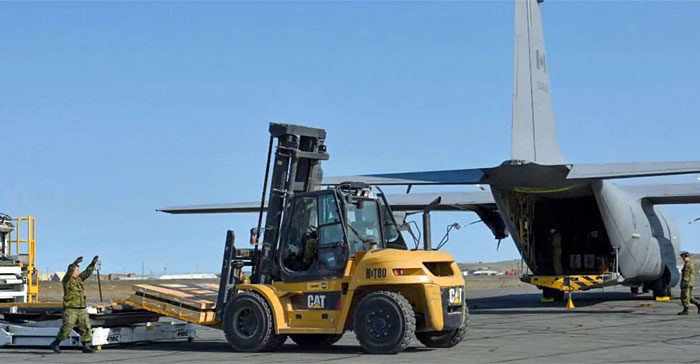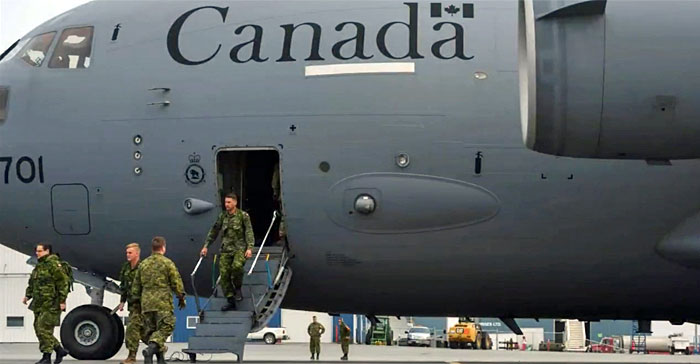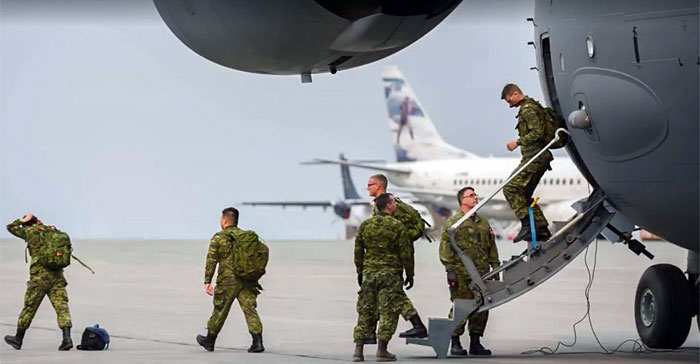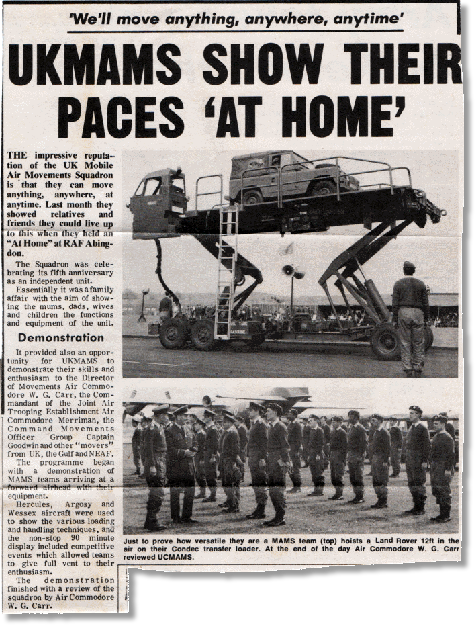

Fleet of ex-Royal Air Force TriStar aircraft to be sold

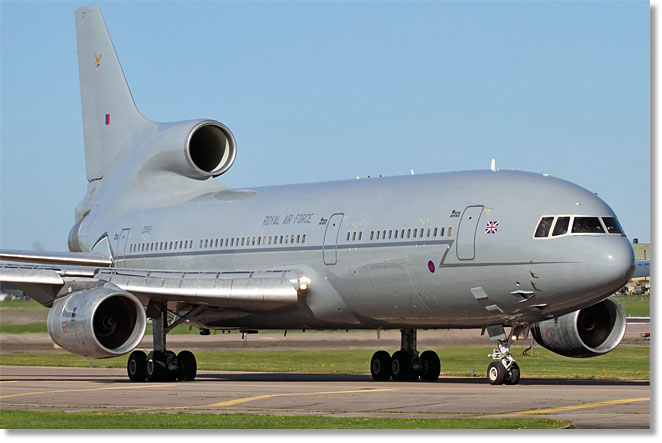
Tempus Applied Solutions (TAS) has entered a definitive agreement to purchase six Ex-Royal Air Force (RAF) Lockheed L-1011 TriStar aircraft.
The aircraft were decommissioned in 2014 after serving the RAF and NATO for 30 years. The L-1011s still have many years of service life remaining. Of the six aircraft, four are specifically configured for air-to-air refuelling (AAR) operations and the remaining for passenger and cargo operations only.
TAS CEO Scott Terry said, "We are very encouraged to have found a potential solution for the shortage of AAR services that currently exist within the US Navy and Marine Corps tactical aviation and many NATO/allied airforces.
"We are very encouraged to have found a potential solution for the shortage of AAR services that currently exist within the US Navy and Marine Corps tactical aviation and many NATO/allied airforces. We will perform the necessary inspections and evaluations over the next several weeks in order that the transaction can close as soon as possible."
The aircraft were decommissioned in 2014 after serving the RAF and NATO for 30 years. The L-1011s still have many years of service life remaining. Of the six aircraft, four are specifically configured for air-to-air refuelling (AAR) operations and the remaining for passenger and cargo operations only.
TAS CEO Scott Terry said, "We are very encouraged to have found a potential solution for the shortage of AAR services that currently exist within the US Navy and Marine Corps tactical aviation and many NATO/allied airforces.
"We are very encouraged to have found a potential solution for the shortage of AAR services that currently exist within the US Navy and Marine Corps tactical aviation and many NATO/allied airforces. We will perform the necessary inspections and evaluations over the next several weeks in order that the transaction can close as soon as possible."
Completion of the acquisition is subject to satisfactory inspection of the aircraft and associated log books and support equipment. Following acceptance and the completion of required maintenance, the US-registered aircraft will be transported from the UK to one of the company’s operations base in the continental US.
Three of the AAR configured aircraft will be marketed for contractor owned/operated AAR operations with a focus on the US Navy, NATO, and other allied airforces while the other aircraft will be used as spare parts.
airforce-technology.com
Three of the AAR configured aircraft will be marketed for contractor owned/operated AAR operations with a focus on the US Navy, NATO, and other allied airforces while the other aircraft will be used as spare parts.
airforce-technology.com

From: David Powell, Princes Risborough
Subject: Re: Memories of Aden
Hi Tony,
Thank you and contributors for another excellent newsletter. My personal memories of RAF Khormaksar are limited to staging through with a Comet east-bound to Changi, a Brit on tour-ex (I had a bit more kit to go back so wangled a PCF) for the return and a Mk 2 Shackleton including two night stops when I spent five days travelling each way with a 205 Sqn airframe change at St Mawgan for a weekend pass to home in UK. However, while on UKMAMS, a fellow team leader and later training officer, Nigel Saunders, told a great tale of when he was on MEAF MAMS which was triggered by Arthur Taylor’s mention of Combined Services Entertainment (CSE).
Apparently, Nigel recounted (on more than one occasion), they were given a Khormaksar Beverley task to take a load of kit up country somewhere. Also on board was a CSE show who would do a gig for the resident Brown and Blue while the aircraft had a leisurely turnaround.
Come time to return to Aden, as the CSE party were being settled in their seats, the obvious question was asked of Nigel and his team, “Enjoy the Show?” to which it was explained that they had been working the aircraft.
“No problem!” said the CSE party. Once the Beverly had reached its cruising height, which as Beverly fans will know, 1,000 feet doesn’t take too long, the front raised bit of the main freight deck, normally called "The Bandstand", lived up to its' name as the CSE proceeded to put on a show for the MAMS team and all but one of the crew. (Well someone had to keep an eye on the autopilot!) At this stage in the telling, Nigel would usually glaze over. Exotic dancing may have featured and I gathered that because of the noise echoing around the practically empty freight bay, some of the dialogue had to be cut, but the passengers were uniquely entertained for the whole of the flight home.
If anyone can or is willing to fill in more details of this movements task, I would be most interested.
Stay safe
David Powell F Team 1967-69
Subject: Re: Memories of Aden
Hi Tony,
Thank you and contributors for another excellent newsletter. My personal memories of RAF Khormaksar are limited to staging through with a Comet east-bound to Changi, a Brit on tour-ex (I had a bit more kit to go back so wangled a PCF) for the return and a Mk 2 Shackleton including two night stops when I spent five days travelling each way with a 205 Sqn airframe change at St Mawgan for a weekend pass to home in UK. However, while on UKMAMS, a fellow team leader and later training officer, Nigel Saunders, told a great tale of when he was on MEAF MAMS which was triggered by Arthur Taylor’s mention of Combined Services Entertainment (CSE).
Apparently, Nigel recounted (on more than one occasion), they were given a Khormaksar Beverley task to take a load of kit up country somewhere. Also on board was a CSE show who would do a gig for the resident Brown and Blue while the aircraft had a leisurely turnaround.
Come time to return to Aden, as the CSE party were being settled in their seats, the obvious question was asked of Nigel and his team, “Enjoy the Show?” to which it was explained that they had been working the aircraft.
“No problem!” said the CSE party. Once the Beverly had reached its cruising height, which as Beverly fans will know, 1,000 feet doesn’t take too long, the front raised bit of the main freight deck, normally called "The Bandstand", lived up to its' name as the CSE proceeded to put on a show for the MAMS team and all but one of the crew. (Well someone had to keep an eye on the autopilot!) At this stage in the telling, Nigel would usually glaze over. Exotic dancing may have featured and I gathered that because of the noise echoing around the practically empty freight bay, some of the dialogue had to be cut, but the passengers were uniquely entertained for the whole of the flight home.
If anyone can or is willing to fill in more details of this movements task, I would be most interested.
Stay safe
David Powell F Team 1967-69

RCAF lands at Rankin Inlet on Operation NANOOK
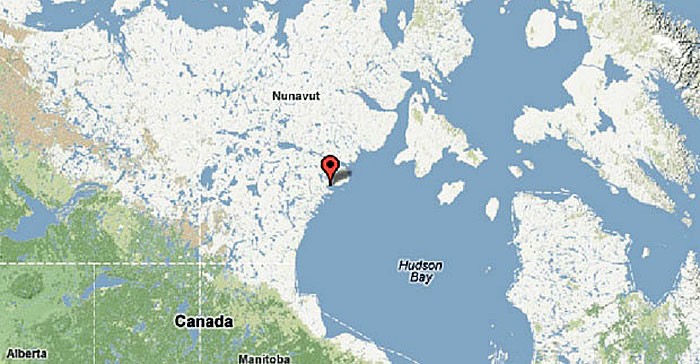
Operation Nanook has taken place each year since 2007; this year it runs from August 14 to 25 across the Yukon, the Northwest Territories and Nunavut, making it the largest military presence in Canada's North.
Being an Arctic nation, Canada holds full rights and legal power over its Northern territories. The Canadian Armed Forces (CAF) play a key role in this guarding Canada’s sovereignty and defending the country against threats in the region.
forces.gc.ca
Being an Arctic nation, Canada holds full rights and legal power over its Northern territories. The Canadian Armed Forces (CAF) play a key role in this guarding Canada’s sovereignty and defending the country against threats in the region.
forces.gc.ca

From: Phil Smith, Exmouth, Devon
Subject: Latest Brief.
Hi Tony,
Well done regarding the latest brief; I think it's your best yet. The way we can manoeuvre from one page/picture to another is very impressive. Also, the brief introduction regarding Mad Mitch was terrific.
I followed the link to the YouTube video that I had not seen before, and watched it transfixed. There could not have been many RAF blokes who visited and patrolled Crater after the 1st Battalion the Argyll and Sutherland Highlanders had invaded. I was probably the only one.
Roger Whittington, a guy I knew at Lyneham 43 years ago, contacted me to say how interested he was with my memories of Aden. We will keep in touch in the future.
Cheers.
Phil.
Subject: Latest Brief.
Hi Tony,
Well done regarding the latest brief; I think it's your best yet. The way we can manoeuvre from one page/picture to another is very impressive. Also, the brief introduction regarding Mad Mitch was terrific.
I followed the link to the YouTube video that I had not seen before, and watched it transfixed. There could not have been many RAF blokes who visited and patrolled Crater after the 1st Battalion the Argyll and Sutherland Highlanders had invaded. I was probably the only one.
Roger Whittington, a guy I knew at Lyneham 43 years ago, contacted me to say how interested he was with my memories of Aden. We will keep in touch in the future.
Cheers.
Phil.

From: David Forsyth, 85370 Le Langon
Subject: CL44 ~plus~ Out of The Blue (OOTB)
Subject: CL44 ~plus~ Out of The Blue (OOTB)
Mowgli got us into this - or - The Italian Job
For some reason which I never established, it was the designated Supply and Movements Officer at RAF Detachment Majunga who, before leaving, had to attend the Projectionist’s Course at Hendon. It transpired that he would have the additional task of being responsible for receiving 3 or 4 16 mm films from each incoming fortnightly resupply flight which staged through Muharraq and returning them on the next flight, thereby ensuring the Services’ Kinema Corporation’s supply chain was unbroken. Films were more of a morale booster than readers today might now imagine.
Once in Madagascar, I found that this arduous Secondary Duty extended to operating the Projector for film shows in the Officers’ “Mess” and ensuring that throughout the 2 weeks each film rotated (pardon the pun) through the Airmen’s camp, the NCOs’ accommodation and the Officers’ “Mess”. The last named was on the first floor of a large block - which did not deter dozens of young Malagasy kids from climbing on the petrol pumps of the Filling Station opposite to boo and cheer very loudly the little bit of action they glimpsed through the open windows.
What has all this to do with a Movements tale, you ask? Hang in there and you will see.
The Detachment Commander during my time there, Wing Commander Doug Cooke, liked to entertain local “Personalities” to drinks and the film in the Officers’ Mess. Jungle Book was very popular and he had invited to a viewing the local Manager of the AGIP Oil Exploration Company. Two charming Italian gentlemen and spouses enjoyed our hospitality and Mowgli. After the film, the good Wing Commander asked me to join him in chatting to the Italians who, as well as being charming, had, I now realise with the benefit of hindsight, clearly worked out how to achieve a specific aim. It transpired that they had an Exploration Drilling Rig on a platform in the Mozambique Straits off Majunga. It needed refurbishment. They had planned to fly refurbishment equipment and materiel using a “Britannia” into Tananarive, about 12-18 hours trucking time from Majunga, with question marks over the ability of some bridges to take the weight.
“Ingratiating” Wing Commander, “I think we might be able to help you there”.
“Naïve” Flying Officer, “We should be able to help but we would need an indemnity signed in case of accidents and a significant contribution to the Airmen’s’ Amenities Fund”. The response in Italian-accented English came at the speed of light “Issa no problem”.
Once in Madagascar, I found that this arduous Secondary Duty extended to operating the Projector for film shows in the Officers’ “Mess” and ensuring that throughout the 2 weeks each film rotated (pardon the pun) through the Airmen’s camp, the NCOs’ accommodation and the Officers’ “Mess”. The last named was on the first floor of a large block - which did not deter dozens of young Malagasy kids from climbing on the petrol pumps of the Filling Station opposite to boo and cheer very loudly the little bit of action they glimpsed through the open windows.
What has all this to do with a Movements tale, you ask? Hang in there and you will see.
The Detachment Commander during my time there, Wing Commander Doug Cooke, liked to entertain local “Personalities” to drinks and the film in the Officers’ Mess. Jungle Book was very popular and he had invited to a viewing the local Manager of the AGIP Oil Exploration Company. Two charming Italian gentlemen and spouses enjoyed our hospitality and Mowgli. After the film, the good Wing Commander asked me to join him in chatting to the Italians who, as well as being charming, had, I now realise with the benefit of hindsight, clearly worked out how to achieve a specific aim. It transpired that they had an Exploration Drilling Rig on a platform in the Mozambique Straits off Majunga. It needed refurbishment. They had planned to fly refurbishment equipment and materiel using a “Britannia” into Tananarive, about 12-18 hours trucking time from Majunga, with question marks over the ability of some bridges to take the weight.
“Ingratiating” Wing Commander, “I think we might be able to help you there”.
“Naïve” Flying Officer, “We should be able to help but we would need an indemnity signed in case of accidents and a significant contribution to the Airmen’s’ Amenities Fund”. The response in Italian-accented English came at the speed of light “Issa no problem”.
Some were small if heavy but could be relatively easily manhandled. Others were very large and very heavy. They were sitting on the aircraft floor without any load spreading or rollers underneath so it was extremely difficult to prise them off the floor to get anything underneath in order to shift them.
But the biggest and most immediate challenge was a piece of perforated steel decking which was about 15 inches deep, about 25 feet long and so wide that it just fitted within the shape of the curved aircraft ceiling as it lay on top of everything else at a height of about 5 feet. It was also extremely heavy. It had clearly been put in last using a powerful fork-lift truck- not something we had at our disposal. It had to come out first before we could move the stuff under it. But how?
But the biggest and most immediate challenge was a piece of perforated steel decking which was about 15 inches deep, about 25 feet long and so wide that it just fitted within the shape of the curved aircraft ceiling as it lay on top of everything else at a height of about 5 feet. It was also extremely heavy. It had clearly been put in last using a powerful fork-lift truck- not something we had at our disposal. It had to come out first before we could move the stuff under it. But how?
On the day, we watched a Brit appear on a very, very long finals approach with three engines smoking and one prop feathered. As it taxied in we could see it was a Transmeridian CL44. For those who have not come across them, this Britannia variant had a swing tail unit which could open through 90 degrees allowing access from the rear to the freight/passenger hold. Off came 3 or 4 aircrew, one recognized by a Detachment Shackleton pilot as having been thrown off his Cranwell course for some misdemeanor a few years previously. They were accompanied by half a dozen black ladies who were introduced as "Stewardesses" on familiarization training. (It later transpired these ladies had been embarked at Nairobi on the way in and I heard that they certainly knew how to be familiar, in exchange for a consideration).
The aircraft was abandoned to our tender mercies. The BFLP just fitted into the space when the swing rear door was open – and my heart sank. The hold was full front-to-back and top-to-bottom with huge pieces of steel bits to refurbish the Oil Rig.
The aircraft was abandoned to our tender mercies. The BFLP just fitted into the space when the swing rear door was open – and my heart sank. The hold was full front-to-back and top-to-bottom with huge pieces of steel bits to refurbish the Oil Rig.
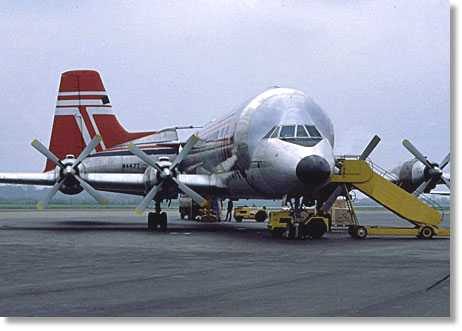
Why had I said yes? Well, we were accustomed to the RAF Britannia on the fortnightly resupply flight and we had a Britannia Freight Lift Platform (BFLP). Mind you that was all we had. No fork-lift truck or other handling aid apart from a couple of sack-trucks. The Movements Team was myself, trained but inexperienced, a Movements-trained Corporal, a Supply SAC and any other tradesman that did not move fast enough when Corporal Stevens was “Press-ganging”. That said, in fairness, we always had plenty of volunteers who enjoyed the chance to do something different – from Flight Sergeants to SACs.
We tied lashing tape around the outermost end and looped that around the big cast knuckle which locked the swing tail in place when closed. With several taking the strain with the tape to pull the decking upwards a little and others pulling it, all whilst standing on the BFLP and others pushing at the innermost end, we shifted it outwards a few inches. Reposition the tape through another perforation and move it again. This was repeated several times with masses of pulling, shoving and sweating in the tropical temperature until we had it very near the point of moment sitting on the rearmost edge of the stuff below it.
Conscious that another inch or two would tip the outer end down and the inner end up into the aircraft ceiling only inches above, we decided to get as many as possible on the BFLP to keep the bloody thing level with some again holding the tape around the knuckle as a precaution. Precaution against what I am not now sure. But then disaster struck. It was just too heavy, the outer end dipped, the inner end rose and it slid down and out until the bottom crashed on the ground. The top was lying at an angle against the platform of the BFLP 15 feet or so in the air. I heard a shout of pain behind me on the BFLP and looked round to see Sergeant Cameron, the MT fitter, lying with the frame apparently on his leg.
Conscious that another inch or two would tip the outer end down and the inner end up into the aircraft ceiling only inches above, we decided to get as many as possible on the BFLP to keep the bloody thing level with some again holding the tape around the knuckle as a precaution. Precaution against what I am not now sure. But then disaster struck. It was just too heavy, the outer end dipped, the inner end rose and it slid down and out until the bottom crashed on the ground. The top was lying at an angle against the platform of the BFLP 15 feet or so in the air. I heard a shout of pain behind me on the BFLP and looked round to see Sergeant Cameron, the MT fitter, lying with the frame apparently on his leg.
Naïve – yes. Stupid – yes. Rewarding – yes to be loyally supported by a team of excellent guys. Rewarding – yes again; the proceeds funded an outboard motor for water-skiing. Character forming – yes. Good for morale and the esteem in which the Supply and Movements team were held – yes. To be repeated - absolutely no bloody way!
But the god of naïve Movers was on one of my shoulders. He was accompanied on the other shoulder by the god of Movers who can “hack” it. The inner end had indeed risen but had just touched the ceiling, scratching it but doing no damage as it slid out. Sergeant Cameron’s leg was bruised but not broken.
We eventually got the rest off, shut the aircraft and went off to replace, with appropriate liquid, the gallons of sweat we had lost over 4 or 5 hours grappling with this monstrous load. Interestingly the OC Detachment was nowhere to be seen during the effort though I did receive moral support from the presence of the Adjutant/Interpreter.
Next morning the aircraft took off on 3 smoky engines, all crew of all “Trades” were accounted for and on board. We were the toast of the Detachment as several thousand Francs Malgaches (FMG, known irreverently as French Machine Guns) found their way into the Amenities Fund. (Thankfully the ladies with Transmeridien had indeed left by then so did not feature as part of the Amenities).
We eventually got the rest off, shut the aircraft and went off to replace, with appropriate liquid, the gallons of sweat we had lost over 4 or 5 hours grappling with this monstrous load. Interestingly the OC Detachment was nowhere to be seen during the effort though I did receive moral support from the presence of the Adjutant/Interpreter.
Next morning the aircraft took off on 3 smoky engines, all crew of all “Trades” were accounted for and on board. We were the toast of the Detachment as several thousand Francs Malgaches (FMG, known irreverently as French Machine Guns) found their way into the Amenities Fund. (Thankfully the ladies with Transmeridien had indeed left by then so did not feature as part of the Amenities).
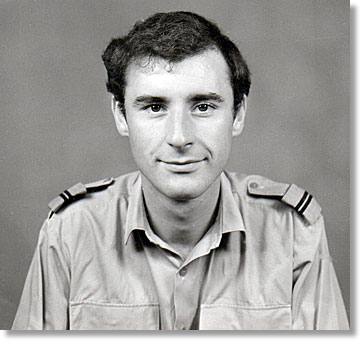
Tony, I include a note which I have penned for the last OOTB book (Out of The Blue) which is going to be used as the Press Release. You are getting it first. I’d be grateful if you could share it as widely as you can. There is a Movers’ Tale in "The Final Landing".
Best Wishes
David
Best Wishes
David
From Rosé to Champagne
Out of the Blue Readers Donate £60k to Service Charities but, …"The Final Landing" looms.
An exchange of yarns around a pool in Chris Long’s home in Toulouse in 2009 about their time flying in the RAF had Chris, Dim Jones and Ian Cowie laughing loudly and long into the night – no doubt in part fuelled by a generous intake of rosé. The three had been flight cadets at the RAF College, Cranwell in the mid to late 1960s and they had remained great friends ever since. Flying experiences had differed greatly since those early days with only one staying on for a full RAF career, in fighters. By 2009 both Chris and Dim were contributing articles to Halldale’s magazines on civil and military aviation topics, respectively – and that writing experience convinced them that these funny but scary stories, many little known, should be committed to book form for others to share before they were forgotten. They also determined that their approach should be to ensure costs were covered by sponsorship so that all revenue, not simply profits, should go to Armed Forces’ Charities.
Two years later saw the launch of Out of the Blue (OOTB) published by Halldale for whom this was a single foray into book publishing. Extensive trawling of networks including Cranwell chums had generated sufficient material for a collection of 98 stories – all in a short, easy to read format. Printing costs were covered by sponsorship by BAe Systems and CAE. The book met with considerable acclaim from past and present military and civilian aircrew and from non-fliers alike across the world.
Perceived wisdom by pundits concerning sales of military aviation books was that 1000 is success and 3000 is “Champagne”. Sales through the RAF Benevolent Fund, Help for Heroes, and later Amazon, were already in excess of 3500 and they continue.
To meet the frequent requests for another collection, the trio produced a second collection of 100 stories, Out of the Blue Too (OOTB2), in 2014. This collection again met with considerable acclaim, particularly visible through Amazon readers’ Reviews. Amazon now sells both paperback and Kindle versions of the first two, albeit with lower dividends for the Service Charities. Income has grown steadily. To date, donations to the three Service Charities exceed £60 thousand – not bad for a rosé-inspired dream.
Two years later saw the launch of Out of the Blue (OOTB) published by Halldale for whom this was a single foray into book publishing. Extensive trawling of networks including Cranwell chums had generated sufficient material for a collection of 98 stories – all in a short, easy to read format. Printing costs were covered by sponsorship by BAe Systems and CAE. The book met with considerable acclaim from past and present military and civilian aircrew and from non-fliers alike across the world.
Perceived wisdom by pundits concerning sales of military aviation books was that 1000 is success and 3000 is “Champagne”. Sales through the RAF Benevolent Fund, Help for Heroes, and later Amazon, were already in excess of 3500 and they continue.
To meet the frequent requests for another collection, the trio produced a second collection of 100 stories, Out of the Blue Too (OOTB2), in 2014. This collection again met with considerable acclaim, particularly visible through Amazon readers’ Reviews. Amazon now sells both paperback and Kindle versions of the first two, albeit with lower dividends for the Service Charities. Income has grown steadily. To date, donations to the three Service Charities exceed £60 thousand – not bad for a rosé-inspired dream.
Much learning was achieved on the way by the three book-writing tyros: some hard-won, about editing and choosing material, proof-reading, software standards and cohesion, image management, ISBN registration, printing, distributing, logistics and managing the whole process and the finances, particularly as they sought to avoid or reduce all possible costs so as to maximise the benefits for the Charities. They have been grateful for pro-bono support by a commercial lawyer, by Flostream for distribution and by too many other individuals and organisations to list.
The generous reviews of OOTB2 and an influx of new stories from the University Air Squadrons’ Association and from other contributors, some new, some pre-existing, encouraged the team to create one more collection, which will be the last element of what has developed into a trilogy.
Out of the Blue: the Final Landing consists of 110 stories about RAF flying or support to RAF flying ranging from WW2 to the second Gulf War. The “Champagne-quoting” pundits have it that second sequels sell less well than the original and the first sequel. The team is determined to show once more that the pundits are not always correct by achieving excellent sales for the Final Landing. It will be on sale from the RAF Benevolent Fund Website priced £9.99 from 9 September 2017.
As for the previous collections, the Foreword is by well-known Spitfire display pilot, Air Marshal Cliff Spink, another friend from that Cranwell flight cadet group of the 1960s.
Funding for the printing has been assured and all revenue will be shared with:
The Royal Navy and Royal Marines Charity
The Army Benevolent Fund: the Soldiers’ Charity
The Royal Air Force Benevolent Fund.
Anyone with an interest in any of these three Charities, directly or indirectly, will find The Final Landing to be an excellent read, comfortable in the additional knowledge that the money spent will find its way to the three charities.
David Forsyth
The generous reviews of OOTB2 and an influx of new stories from the University Air Squadrons’ Association and from other contributors, some new, some pre-existing, encouraged the team to create one more collection, which will be the last element of what has developed into a trilogy.
Out of the Blue: the Final Landing consists of 110 stories about RAF flying or support to RAF flying ranging from WW2 to the second Gulf War. The “Champagne-quoting” pundits have it that second sequels sell less well than the original and the first sequel. The team is determined to show once more that the pundits are not always correct by achieving excellent sales for the Final Landing. It will be on sale from the RAF Benevolent Fund Website priced £9.99 from 9 September 2017.
As for the previous collections, the Foreword is by well-known Spitfire display pilot, Air Marshal Cliff Spink, another friend from that Cranwell flight cadet group of the 1960s.
Funding for the printing has been assured and all revenue will be shared with:
The Royal Navy and Royal Marines Charity
The Army Benevolent Fund: the Soldiers’ Charity
The Royal Air Force Benevolent Fund.
Anyone with an interest in any of these three Charities, directly or indirectly, will find The Final Landing to be an excellent read, comfortable in the additional knowledge that the money spent will find its way to the three charities.
David Forsyth
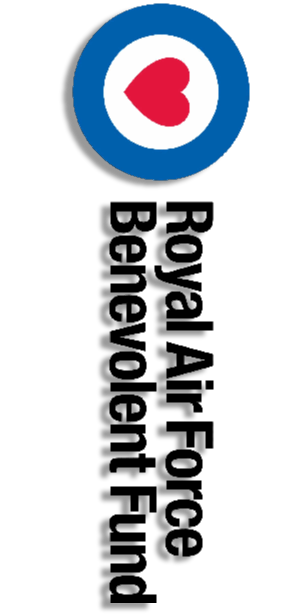

From: Jerry Allen, Cheltenham, Glos
Subject: Re: UKMAMS OBA OBB #072817
Hi Tony,
What a great edition of the newsletter. The accounts from Aden were so good. I am constantly amazed at the number and quality of the photographs that Charles Collier can produce. He must have such a library. He was also very lucky to be in many of the shots himself. I am a keen photographer but looking at my library the notable absence is always me! I liked your section at the end of the newsletter with pictures of old friends in 'relaxed' mode. In the same spirit, I offer the attached picture of Kim and I.
Subject: Re: UKMAMS OBA OBB #072817
Hi Tony,
What a great edition of the newsletter. The accounts from Aden were so good. I am constantly amazed at the number and quality of the photographs that Charles Collier can produce. He must have such a library. He was also very lucky to be in many of the shots himself. I am a keen photographer but looking at my library the notable absence is always me! I liked your section at the end of the newsletter with pictures of old friends in 'relaxed' mode. In the same spirit, I offer the attached picture of Kim and I.
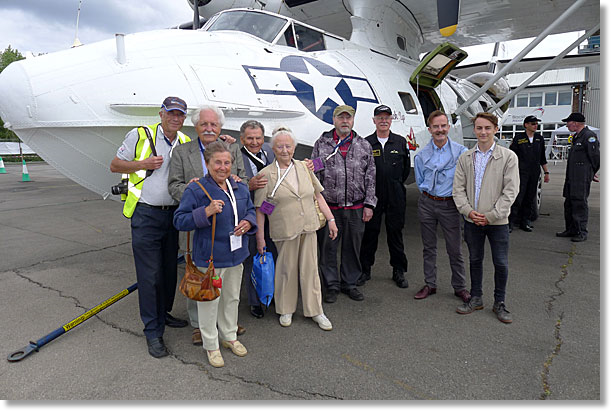
I have also attached a shot from the recent Blackbushe Airport 75th Anniversary - Festival of Flight where I was fortunate enough to be the Event Controller. The photo shows a group of Polish citizens who had been evacuated to England, via Blackbushe at the commencement of WW2. Their return reunion was celebrated with a flight in this magnificent Catalina.
At the event, I also met up again with the irrepressible George Bacon who may be known to some of the readers especially if you served in BATUS or Calgary in the 80s or are a keen airshow visitor. I first met George at Calgary in Ian Russel's (RAF Det Cdr YYC) office in 1983 (ish). He was an AAC Beaver pilot in those days working out of Suffield and Wainwright. He was good friends with Ian and popped down routinely to YYC to drink Ian's coffee and steal a few of the British papers from the VC10s. George famously rigged his Beaver with one of the original Walkmans and speakers and treated his passengers to full-volume 'Flight of the Valkyries' on approach to dodgy locations. Since leaving the Army, George flies regularly with the Army vintage display teams and is a regular commentator at airshows including every year at RIAT.
Wishing you and yours a wonderful summer.
Jerry
At the event, I also met up again with the irrepressible George Bacon who may be known to some of the readers especially if you served in BATUS or Calgary in the 80s or are a keen airshow visitor. I first met George at Calgary in Ian Russel's (RAF Det Cdr YYC) office in 1983 (ish). He was an AAC Beaver pilot in those days working out of Suffield and Wainwright. He was good friends with Ian and popped down routinely to YYC to drink Ian's coffee and steal a few of the British papers from the VC10s. George famously rigged his Beaver with one of the original Walkmans and speakers and treated his passengers to full-volume 'Flight of the Valkyries' on approach to dodgy locations. Since leaving the Army, George flies regularly with the Army vintage display teams and is a regular commentator at airshows including every year at RIAT.
Wishing you and yours a wonderful summer.
Jerry

From: Gerry Davis, Bedmister, Somerset
Subject: The oil lift
Subject: The oil lift
Events leading up to the Oil Lift
3 December 1965 - 29 Squadron RAF (Gloster Javelin) deploys from Akrotiri to Ndola in Zambia to provide air defence for that country following the announcement of a Unilateral Declaration of Independence by the Rhodesian government. Air defence radars and ancillary equipment were flown into Zambia by 114 and 267 Squadrons (Armstrong Whitworth Argosy). 29 Squadron returned to Akrotiri in August 1966.
Unfortunately British Pathe never used the below video as a news bulletin, and so there is no dialogue - but a picture says a thousand words!
Unfortunately British Pathe never used the below video as a news bulletin, and so there is no dialogue - but a picture says a thousand words!
Subsequently on 19 December 1965, following the announcement of a Unilateral Declaration of Independence, the United Kingdom imposes sanctions on Rhodesia. To support neighbouring Zambia, which depended upon a railway link from Mozambique through Rhodesia for the carriage of vital supplies, the United Kingdom and Canada mounted an oil airlift from Dar-es-Salaam and Leopoldville to supplement Zambia's stocks.
RAF Transport Command's participation included the Bristol Britannias of 99 and 511 Squadrons and the Handley Page Hastings of 36 Squadron. By the end of the airlift on 31 October 1966, over 3.5 million gallons of oil had been flown into Zambia.
RAF Transport Command's participation included the Bristol Britannias of 99 and 511 Squadrons and the Handley Page Hastings of 36 Squadron. By the end of the airlift on 31 October 1966, over 3.5 million gallons of oil had been flown into Zambia.

From: Allan Walker, Burnley, Lancs
Subject: Memories of MAMS Training
Subject: Memories of MAMS Training
Memories of MAMS Training
Having had a Team for a year I took over as Training Officer in early 1969. Every Team went through training twice a year, spending a week refreshing on each type of equipment used to load the aircraft of the day. The equipments covered were:
The Condec. At this time the Condec was a Movements vehicle and training and authorisation to drive was given by the Training Officer. Later on this was brought under MT control.
The Massey Ferguson Rough Terrain Fork Lift Truck (RTFLT). Training and authorisation was controlled by MT but Team members had to master the art of reversing with a trailer.
The Anthony Allen Dock. Lightweight and fairly easy to erect. Used mainly for loading the Argosy. Not practical for aircraft with a high sill.
The Britannia Freight Lift Platform. A nightmare to assemble and very heavy and bulky. Used mainly with the Britannia Aircraft and designed to be flown into a “Bare” airfield.
Helicopter Underslung Loads. At this time UKMAMS were responsible for helicopter underslung loads and we practiced this regularly. We were occasionally allowed to carry out a rope descent and on one occasion I was demonstrating the technique. While telling every member how easy it was and that there was no problem reaching the ground I was surprised at one stage, when nearing the end of the rope, that the ground still seemed a long, long, way away. Unbeknown to me the Team had agreed with the aircraft Captain and Loadmaster that they would gently increase their hover as soon as I was nearing the end. All was well in the end and no damage done -except to my pride!
On a Wednesday, during the training, Teams set up a UKMAMS HQ at RAF Weston on the Green (a remote airfield used mainly for para drop training) and stayed overnight. They were visited by myself and Mike Slade to ensure that all was well. The evening included having to partake in a cooked “Compo” meal which was invariably stew and dumplings. There were however a few variations but the journey home was always quite eventful as the meal sat heavily on our stomachs.
The Condec. At this time the Condec was a Movements vehicle and training and authorisation to drive was given by the Training Officer. Later on this was brought under MT control.
The Massey Ferguson Rough Terrain Fork Lift Truck (RTFLT). Training and authorisation was controlled by MT but Team members had to master the art of reversing with a trailer.
The Anthony Allen Dock. Lightweight and fairly easy to erect. Used mainly for loading the Argosy. Not practical for aircraft with a high sill.
The Britannia Freight Lift Platform. A nightmare to assemble and very heavy and bulky. Used mainly with the Britannia Aircraft and designed to be flown into a “Bare” airfield.
Helicopter Underslung Loads. At this time UKMAMS were responsible for helicopter underslung loads and we practiced this regularly. We were occasionally allowed to carry out a rope descent and on one occasion I was demonstrating the technique. While telling every member how easy it was and that there was no problem reaching the ground I was surprised at one stage, when nearing the end of the rope, that the ground still seemed a long, long, way away. Unbeknown to me the Team had agreed with the aircraft Captain and Loadmaster that they would gently increase their hover as soon as I was nearing the end. All was well in the end and no damage done -except to my pride!
On a Wednesday, during the training, Teams set up a UKMAMS HQ at RAF Weston on the Green (a remote airfield used mainly for para drop training) and stayed overnight. They were visited by myself and Mike Slade to ensure that all was well. The evening included having to partake in a cooked “Compo” meal which was invariably stew and dumplings. There were however a few variations but the journey home was always quite eventful as the meal sat heavily on our stomachs.
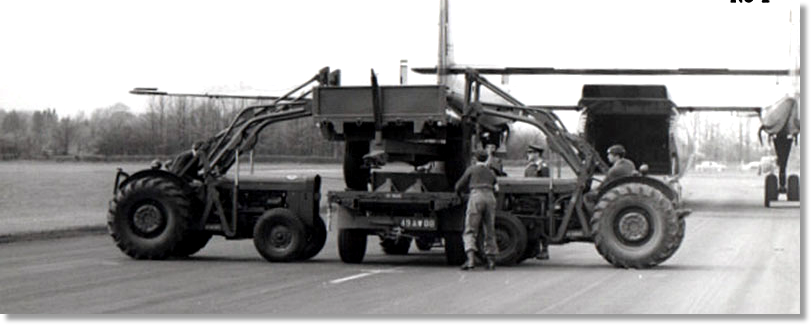
Two Massey Fergusson RTFLTs loading a trailer atop another trailer with
F/O Tony Willis - Alan "Boot" Pratt is driving the vehicle on the right
F/O Tony Willis - Alan "Boot" Pratt is driving the vehicle on the right

Anthony Allen Dock and Condec with F/L Brian Shorter
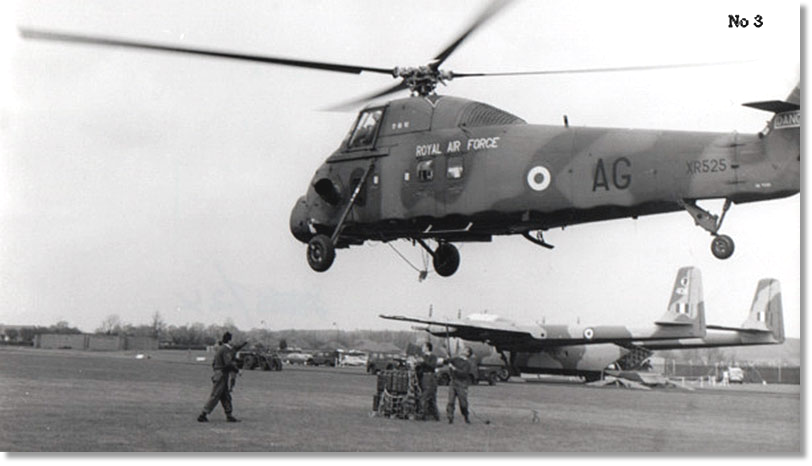
Preparing to attach an underslung load to a Wessex helicopter

Condec with F/L Brian Shorter. Can you also spot the BFLP in the background?
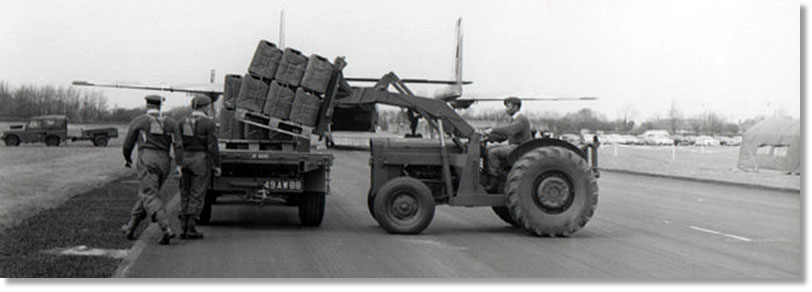
Massey Fergusson RTFLT with F/L Norrie Radcliffe, F/S Ken Browne and Sgt Ivan Gervais
Condec at rear of Argosy
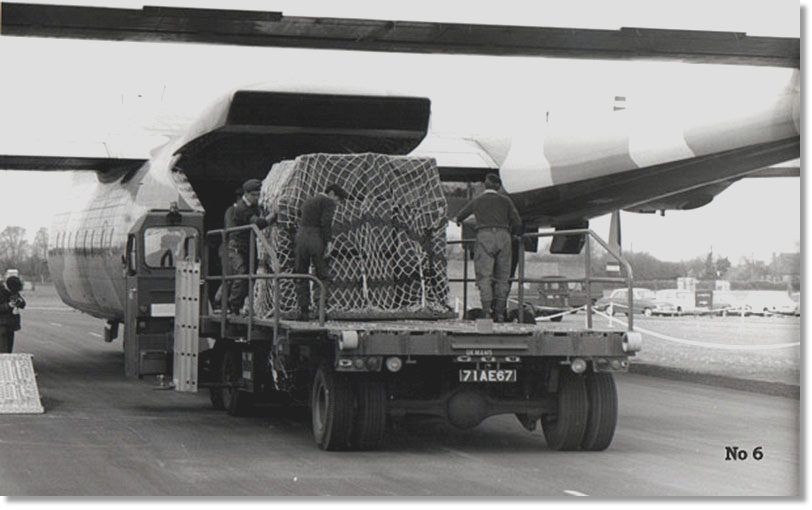

Click on me
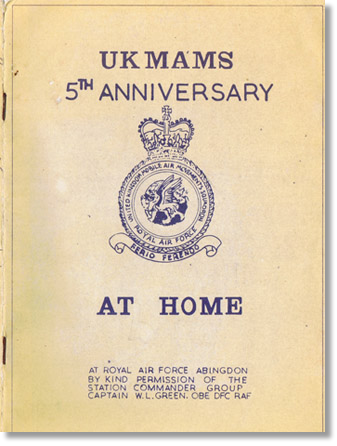
To see a detailed description of the At Home Day - have a shuftee at
UKMAMS OBA OBB #070111
Yours Aye, Allan Walker
UKMAMS OBA OBB #070111
Yours Aye, Allan Walker
To celebrate our 5th Anniversay an “At Home “ was held on Friday 30th April, 1971, and all Teams put into practice what they had learned through their Training Sessions.

From: Chris Goss, Marlow, Bucks
Subject: Memories of MAMS Training
Tony,
Three things stick out which I remember from MAMS training (the Mobile Course):
Subject: Memories of MAMS Training
Tony,
Three things stick out which I remember from MAMS training (the Mobile Course):

1. A Fg Off (who shall remain nameless but he was the one that managed to get a Fiat Spider back in bits from the USA and was the only member of Mobile who did not respond when TACEVAL Pt 1 was called on a Monday afternoon) arguing with WO Derek Coles about the way to do things. Suffice to say he did not win and had a face-to-face with OC MAMF to remind him of his place.
2. Doing Kevin Timms' cadet assault course somewhere in the woods near Chippenham and having to wash my combats 3 times to get them clean.
3. Dick Page and myself "coasting" in the fitness test at the start of the course and then going for it at the one at the end and both of us being congratulated how much fitter we had become in the four weeks!
Regards, Chris
2. Doing Kevin Timms' cadet assault course somewhere in the woods near Chippenham and having to wash my combats 3 times to get them clean.
3. Dick Page and myself "coasting" in the fitness test at the start of the course and then going for it at the one at the end and both of us being congratulated how much fitter we had become in the four weeks!
Regards, Chris

From: James Durkin, Stafford, Staffs
Subject: MAMS Training - or lack of!
Hi Tony,
Thank you again for all your great work with our news.
Sorry I have to offer two negatives in reply. Sadly I never had MAMS training. I did the old 'all in' Movements course at Kidbrook and later the Advanced Air Movements Course at Abingdon. In practice I learnt my loading, lashing and trim sheets at AMS Abingdon hands on (just in time to not be involved too much with the old weight and balance sheets in use prior to trim sheets), but we did a few before they died out.
My MAMS experience came in 1963 as a Refor, again hands on, at Labuan where I was teamed up twice with Les Charlseworth of FEAF MAMS for a couple of specials. Apart from that I had a very busy tour and was sometimes the only one of the base team to be 'mobile' which I enjoyed as it got me off the island and onto the mainland. I enjoyed working with the army as the lone RAF rep to document and move them on to Labuan for transshipment.
Sadly my second negative is that in 34 years service in the best airline in the world (I was told this several times by civilian passengers) I never even got to stage through Cyprus. My eldest son with 9 years service mainly spent on POL duties was Re-forced to RAF Nicosia for about three months. He tells me he had a super working holiday! Hows that for 'somebodies law'?
With my very best regards and my apology too (twice!)
Jimmie
Subject: MAMS Training - or lack of!
Hi Tony,
Thank you again for all your great work with our news.
Sorry I have to offer two negatives in reply. Sadly I never had MAMS training. I did the old 'all in' Movements course at Kidbrook and later the Advanced Air Movements Course at Abingdon. In practice I learnt my loading, lashing and trim sheets at AMS Abingdon hands on (just in time to not be involved too much with the old weight and balance sheets in use prior to trim sheets), but we did a few before they died out.
My MAMS experience came in 1963 as a Refor, again hands on, at Labuan where I was teamed up twice with Les Charlseworth of FEAF MAMS for a couple of specials. Apart from that I had a very busy tour and was sometimes the only one of the base team to be 'mobile' which I enjoyed as it got me off the island and onto the mainland. I enjoyed working with the army as the lone RAF rep to document and move them on to Labuan for transshipment.
Sadly my second negative is that in 34 years service in the best airline in the world (I was told this several times by civilian passengers) I never even got to stage through Cyprus. My eldest son with 9 years service mainly spent on POL duties was Re-forced to RAF Nicosia for about three months. He tells me he had a super working holiday! Hows that for 'somebodies law'?
With my very best regards and my apology too (twice!)
Jimmie

From: David Stevens, Bangor
Subject: Memories of MAMS Training ~ plus ~ Pet Hates
Hi Tony, I have a very straight forward contribution this month; no MAMS training as such.
I was Movements qualified when I completed my Basic Supply training course at Kirton-in-Lindsey in 1962. The air and sea training element comprising a Valetta 'shell' in the hangar and securing a few boxes; sea movements was pure (limited) theory.
My first posting after Kirton-in-Lindsey was RAF Sharjah as O i/c Movements! Talk about in at the deep end - but it did bring home one thing very early on in my 23 year career - thank goodness for capable and long suffering Warrant Officers. I remember his name to this day - Mr Edwards.
Pet hates? None really but with the usual exception - hairs in the plug hole!
Best wishes, David
Subject: Memories of MAMS Training ~ plus ~ Pet Hates
Hi Tony, I have a very straight forward contribution this month; no MAMS training as such.
I was Movements qualified when I completed my Basic Supply training course at Kirton-in-Lindsey in 1962. The air and sea training element comprising a Valetta 'shell' in the hangar and securing a few boxes; sea movements was pure (limited) theory.
My first posting after Kirton-in-Lindsey was RAF Sharjah as O i/c Movements! Talk about in at the deep end - but it did bring home one thing very early on in my 23 year career - thank goodness for capable and long suffering Warrant Officers. I remember his name to this day - Mr Edwards.
Pet hates? None really but with the usual exception - hairs in the plug hole!
Best wishes, David

From: David Moss, Sorbie, Dumfries and Galloway
Subject: Pet Hates
Hi Tony,
Subject: Pet Hates
Hi Tony,
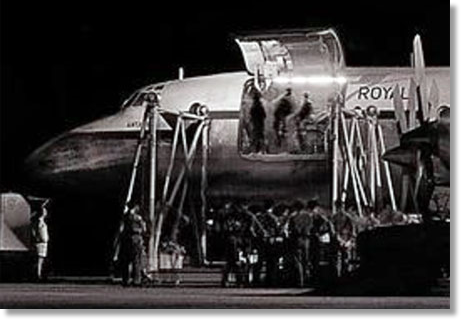
I think that almost anybody who completed the movements course, be it junior or senior, will remember that universally hated piece of equipment known as the BFLP. For those who are not that ancient and have only loaded aircraft by Condec or fork lift, that dreadful acronym means Britannia Freight Lift Platform.
That piece of kit that took almost as long to assemble as it could take to hand-bomb a load on board, and if the required generator decided to break down when the platform was part way up, the words of that nursery rhyme "The Grand Old Duke of York" about being neither up nor down were proved to be very true. At least the Duke's men could be marched back down, but until that generator was either fixed or replaced, the bloody BFLP stayed right where it was.
Keep up the good work Tony!
David
That piece of kit that took almost as long to assemble as it could take to hand-bomb a load on board, and if the required generator decided to break down when the platform was part way up, the words of that nursery rhyme "The Grand Old Duke of York" about being neither up nor down were proved to be very true. At least the Duke's men could be marched back down, but until that generator was either fixed or replaced, the bloody BFLP stayed right where it was.
Keep up the good work Tony!
David

From: David Powell, Princess Risborough
Subject: MAMS Training and Pet Hates
Hi Tony,
MAMS training? When I was allowed to cross over from the Movements Squadron at RAF Abingdon to take over F team in 1967, the idea, as far as I can remember, was that all personnel would have had at least one movements posting and be fully up to speed on all the basic aircraft types and ACHE on arrival. You were expected to hit the ground running. However, new team leaders weren’t allowed out of the country until you had successfully (in the eyes of the team) completed a West Raynham RAF Bloodhound load.
There was a system by which the teams rotated a week at a time as the standby team on short notice readiness to deploy, notionally against a V force commitment, but more usually the next panic. It was expected that standby teams could engage in some training. Except during my time on the Squadron we were usually so heavily tasked that I can’t remember any formal training!
Subject: MAMS Training and Pet Hates
Hi Tony,
MAMS training? When I was allowed to cross over from the Movements Squadron at RAF Abingdon to take over F team in 1967, the idea, as far as I can remember, was that all personnel would have had at least one movements posting and be fully up to speed on all the basic aircraft types and ACHE on arrival. You were expected to hit the ground running. However, new team leaders weren’t allowed out of the country until you had successfully (in the eyes of the team) completed a West Raynham RAF Bloodhound load.
There was a system by which the teams rotated a week at a time as the standby team on short notice readiness to deploy, notionally against a V force commitment, but more usually the next panic. It was expected that standby teams could engage in some training. Except during my time on the Squadron we were usually so heavily tasked that I can’t remember any formal training!
For some tasks, quite a lot of time was spent on preparation, especially if it involved trial loadings. Or, as in the case of the Concord 002’s intakes which we moved from Filton to Toulouse by Beverley, liaison with the manufacturer to work on the cradle and load/offload protocols. In the event of a new item of kit arriving, if it had wheels and a motor, Bob Turner played with it and would then tell us how it worked.
The nearest we ever got to field training was during the summer fruit picking season, when the unwritten rule was officers would avoid working in the same fields as the lads! But we did have practice erecting tents, usually overseas on deployments.
Pet Hates? Easy, our pet Spaniel Bronte hates going for walks in the rain!
Stay safe
David Powell
F Team UKMAMS 1967-69.
The nearest we ever got to field training was during the summer fruit picking season, when the unwritten rule was officers would avoid working in the same fields as the lads! But we did have practice erecting tents, usually overseas on deployments.
Pet Hates? Easy, our pet Spaniel Bronte hates going for walks in the rain!
Stay safe
David Powell
F Team UKMAMS 1967-69.
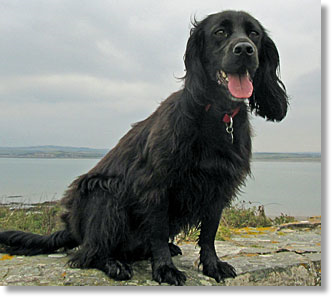
From: Tony Street, Buffalo, NY
Subject: My Pre-MAMs Op
Subject: My Pre-MAMs Op
The Newfie Airlift*
*(To the best of my recollection with some names changed to protect the guilty.)
Early in my Air Movements career, I was sent on temporary duty to Harmon AFB near Stephenville, Newfoundland, to take part in an airlift operation involving the Canadian army and RCAF Boxcars (C119’s). (This was long before the MAMs concept). I believe there were eight of us, whose names I disremember, from all over the country. We were split into two teams that would work 12 hour shifts. I made the 1900-0700 shift, lucky me.
The operation was to see about 50 Canadian Airborne Regiment troops put ashore in small boats (the Bad Guys) compliments of our Navy. They were to try to capture the south side of the base. The north side was out-of-bounds, big-time, as it housed a Strategic Airlift Command facility that serviced transiting B52 nuclear-armed bombers.
To counter the Bad Guys, the RCAF was to fly in an Army regiment (the Good Guys), of about 300 plus their equipment from the mainland, capture the Bad Guys and save the day. All is well in the planning.
Our team was on the first C119 to arrive. We set up shop in a nice office in the front corner of the huge SAC hangar. We then unloaded the next two or three aircraft (a/c), arriving with servicing bods and their equipment. With this done, we repaired to the club for refreshments, noticing the weather was turning. The Operation was to start the next day.
While we were setting up, the Bad Guys had not been idle. Their insertion onto the island was successful, but they were not “following the Op order.” Instead of camping in the woods and freezing around small fires with little cans to boil tea, they had taken matters into their own hands. As there were several Newfies in the group, deviousness came into play. They moved surreptitiously through the woods and arrived as close as possible to the back door of a pub near the tree line, whereupon the Newfies gave their weapons to the others and took off their armbands that identified them as Bad Guys.
These chaps went into the pub and were met with open arms and Newfoundland hospitality. After a few rounds and games of darts they revealed their true reason for being there. The Newfies loved it (“Bleedin’ Mainlanders and Yanks takin’ over da world! Well, not ‘ere, eh, lads?”), and before long all the Bad Guys were “warmin’ demselves” in the pub’s basement.
The operation was to see about 50 Canadian Airborne Regiment troops put ashore in small boats (the Bad Guys) compliments of our Navy. They were to try to capture the south side of the base. The north side was out-of-bounds, big-time, as it housed a Strategic Airlift Command facility that serviced transiting B52 nuclear-armed bombers.
To counter the Bad Guys, the RCAF was to fly in an Army regiment (the Good Guys), of about 300 plus their equipment from the mainland, capture the Bad Guys and save the day. All is well in the planning.
Our team was on the first C119 to arrive. We set up shop in a nice office in the front corner of the huge SAC hangar. We then unloaded the next two or three aircraft (a/c), arriving with servicing bods and their equipment. With this done, we repaired to the club for refreshments, noticing the weather was turning. The Operation was to start the next day.
While we were setting up, the Bad Guys had not been idle. Their insertion onto the island was successful, but they were not “following the Op order.” Instead of camping in the woods and freezing around small fires with little cans to boil tea, they had taken matters into their own hands. As there were several Newfies in the group, deviousness came into play. They moved surreptitiously through the woods and arrived as close as possible to the back door of a pub near the tree line, whereupon the Newfies gave their weapons to the others and took off their armbands that identified them as Bad Guys.
These chaps went into the pub and were met with open arms and Newfoundland hospitality. After a few rounds and games of darts they revealed their true reason for being there. The Newfies loved it (“Bleedin’ Mainlanders and Yanks takin’ over da world! Well, not ‘ere, eh, lads?”), and before long all the Bad Guys were “warmin’ demselves” in the pub’s basement.
It came to pass that some of the local Newfies worked on Harmon AFB in the messes, clubs and the Motor Pool. Therefore, it should not be surprising that the next day the Newfs entered the base to report for work, they had an advance party of as many Bad Guys as could be stuffed into the trunks of their cars. These guys quickly stole a jeep (more on this later), from behind the hangar and cut a hole in the fence allowing entrance to the rest of the Bad Guys.
Meanwhile, our operation had started. The Boxcars were arriving at three hour intervals in steadily deteriorating weather. By the time our shift reported to work things were going to hell in a hand basket. The winds were fierce, driving the snow horizontally and stinging exposed skin. It was impossible to see anything without the protection of goggles.
When the first C119s arrived they had the clam-shell doors installed, however the wind became so strong that it was impossible to open them without damage or injury. It also was becoming increasingly dangerous to taxi the a/c into the marshalling area.
The portable gas driven hangar line lighting units were being blown around like match sticks. One of the Air Movers, seeing a lighting unit being blown towards a C119’s running engine, rammed it into a snow bank with his vehicle. It was time for “a reassessment of the operational requirements vis-à-vis conditions on the ground!” (Read: New Plan).
The Army’s original plan was to house all the vehicles and supplies in the hangar. The troops would erect a pleasant, roomy campground for themselves behind the hangar.
To this end, under a blaze of our portable lighting units, a Lt. showed up behind the hangar and told the CSM to start erecting tents. “I don’t think that’s a good idea, Sir, considering the weather.”
“Nonsense insisted the Lt. “There’s no problem; I’ve been camping before in weather like this,” as he wrestled with a large rolled up tent. “I’ll align the first one with the Ops plan and the men can carry on down the line,” he said as he reached for the rope that secured the tent.
“I wouldn’t do that, Sir.” cautioned the CSM.
“I know what I’m doing, CSM, I’ve been camping a time or two” said the Lt. With that he gave the rope a manly tug that activated the quick-release knot. It was wonderful to watch Father Nature at work! The wind immediately caught the tent, unrolled it, and with a loud crack, opened it to its full size and shape just before it was carried off through the cone of snow-swept light, into the black hole of night.
“Apparently not.” said the RSM. (I heard later that it was recovered in downtown Stephenville and hidden in the pub’s basement until we went away).
Meanwhile, our operation had started. The Boxcars were arriving at three hour intervals in steadily deteriorating weather. By the time our shift reported to work things were going to hell in a hand basket. The winds were fierce, driving the snow horizontally and stinging exposed skin. It was impossible to see anything without the protection of goggles.
When the first C119s arrived they had the clam-shell doors installed, however the wind became so strong that it was impossible to open them without damage or injury. It also was becoming increasingly dangerous to taxi the a/c into the marshalling area.
The portable gas driven hangar line lighting units were being blown around like match sticks. One of the Air Movers, seeing a lighting unit being blown towards a C119’s running engine, rammed it into a snow bank with his vehicle. It was time for “a reassessment of the operational requirements vis-à-vis conditions on the ground!” (Read: New Plan).
The Army’s original plan was to house all the vehicles and supplies in the hangar. The troops would erect a pleasant, roomy campground for themselves behind the hangar.
To this end, under a blaze of our portable lighting units, a Lt. showed up behind the hangar and told the CSM to start erecting tents. “I don’t think that’s a good idea, Sir, considering the weather.”
“Nonsense insisted the Lt. “There’s no problem; I’ve been camping before in weather like this,” as he wrestled with a large rolled up tent. “I’ll align the first one with the Ops plan and the men can carry on down the line,” he said as he reached for the rope that secured the tent.
“I wouldn’t do that, Sir.” cautioned the CSM.
“I know what I’m doing, CSM, I’ve been camping a time or two” said the Lt. With that he gave the rope a manly tug that activated the quick-release knot. It was wonderful to watch Father Nature at work! The wind immediately caught the tent, unrolled it, and with a loud crack, opened it to its full size and shape just before it was carried off through the cone of snow-swept light, into the black hole of night.
“Apparently not.” said the RSM. (I heard later that it was recovered in downtown Stephenville and hidden in the pub’s basement until we went away).
This changed the “reassessment of the operational requirements vis-à-vis conditions on the ground!” (Plan B), Now, the vehicles were to be positioned outside in the lee of the hangar and the troops inside.
Meanwhile, back on the flight line, the situation had become untenable; it was now unsafe to marshal the empty and lighter a/c as side winds could blow them over. A meeting was held (what else!?). It appeared that this was a very important tri-service exercise (Navy involved in re-deployment), and was to set an example for future ops. Besides, “We’re here now, eh, pity to waste the opportunity, Yanks won’t let us back in.”
Our Ops HQ on the mainland was called and the following procedure agreed upon. The 119’s would fly without the clam-shell doors. As the wind was directly down the runway in a direction that favoured this, the a/c would land on the numbers and taxi into the wind and stop at the intersection of the taxiway to our hangar, a short distance away. The pilot would maintain his position using power and brakes. We would then unload the a/c using standard procedures. It worked!
Now all the pilot had to do to get airborne with his empty a/c was to release the brakes and add a few knots.
The vehicles, troops and equipment thus unloaded went directly to the hangar. The vehicles would be unloaded and parked outside behind the hangar (This is where the Bad Guys got their jeep). The troops would roll out their fart sacks in one of the increasingly long rows growing on the hangar floor, eventually to number 300! The hangar was pleasant enough; we had heat and light, although the arc lights did nothing for one’s skin tone.
In spite of all this, the operation was going swimmingly (from the Army’s standpoint). They sent out regular patrols seeking Bad Guys with no results. “I hope they’re not frozen in the woods,” remarked a Lt.
I should explain our office set-up here. As you know, we had a nice corner office into which we had brought all our goodies (nothing like the flyaway MAMS kits of the future). We had several standard USAF issue chairs and desks (2).
The Army inhabited the adjoining office, one of many running down the side of the hangar. They had a 10’ conference table and chairs and a desk on the other side of the wall from ours. We shared a phone, which pissed off the Colonel (and everybody else, for that matter).
The phone was sitting on a little metal tray on the end of a two foot long arm that swung through a hole in the wall. (Ring: “Ops hangar, airman Street, here, Sir.” May I speak to “Colonel Canada,” airman Street?” Swing: “It’s for you.” This got me a visit from the RSM).
Meanwhile, back on the flight line, the situation had become untenable; it was now unsafe to marshal the empty and lighter a/c as side winds could blow them over. A meeting was held (what else!?). It appeared that this was a very important tri-service exercise (Navy involved in re-deployment), and was to set an example for future ops. Besides, “We’re here now, eh, pity to waste the opportunity, Yanks won’t let us back in.”
Our Ops HQ on the mainland was called and the following procedure agreed upon. The 119’s would fly without the clam-shell doors. As the wind was directly down the runway in a direction that favoured this, the a/c would land on the numbers and taxi into the wind and stop at the intersection of the taxiway to our hangar, a short distance away. The pilot would maintain his position using power and brakes. We would then unload the a/c using standard procedures. It worked!
Now all the pilot had to do to get airborne with his empty a/c was to release the brakes and add a few knots.
The vehicles, troops and equipment thus unloaded went directly to the hangar. The vehicles would be unloaded and parked outside behind the hangar (This is where the Bad Guys got their jeep). The troops would roll out their fart sacks in one of the increasingly long rows growing on the hangar floor, eventually to number 300! The hangar was pleasant enough; we had heat and light, although the arc lights did nothing for one’s skin tone.
In spite of all this, the operation was going swimmingly (from the Army’s standpoint). They sent out regular patrols seeking Bad Guys with no results. “I hope they’re not frozen in the woods,” remarked a Lt.
I should explain our office set-up here. As you know, we had a nice corner office into which we had brought all our goodies (nothing like the flyaway MAMS kits of the future). We had several standard USAF issue chairs and desks (2).
The Army inhabited the adjoining office, one of many running down the side of the hangar. They had a 10’ conference table and chairs and a desk on the other side of the wall from ours. We shared a phone, which pissed off the Colonel (and everybody else, for that matter).
The phone was sitting on a little metal tray on the end of a two foot long arm that swung through a hole in the wall. (Ring: “Ops hangar, airman Street, here, Sir.” May I speak to “Colonel Canada,” airman Street?” Swing: “It’s for you.” This got me a visit from the RSM).
I remember overhearing a briefing at the “Big Table,” as the army referred to it. LtCol, to Lt. “I want you to find the insurgents, so take a jeep and a squad and proceed to coordinates, 1234 and 4321 on the map here.”
The Lt., after referring to his Binder, map, Junior Officer Leadership, Khaki, Field Ops Kit, replied, “I can’t find it here, sir”
The LtCol banging on the map on the Big Table with his forefinger, “Look, HERE! At the coordinates, man, can you not see 1234/4321? It’s right here, at the fork in the road!”
“Yes Sir!” Was the weak reply, “But, Sir, I don’t have that map in my binder, Sir!”
“Well then, just take the squad to the base dump and look around, it’s right at the fork in the road,”
The exercise went on merrily without any Bad Guys being seen, the patrols went out regularly after the morning and evening briefing around the Big Table but came back empty handed. Boredom was setting in, until things took a turn for the worse or the better, depending upon who you were.
Remember, the SAC side of the field was sacrosanct, as was the runway. But wouldn’t you just know it, the USAF air traffic controller looked out his window and saw four happy Bad Guys screaming down their 10,000 foot runway in the stolen jeep waving their black arm bands in the wind! Upon reaching the midpoint, they tossed out a rucksack full of rocks with a label on it saying “Boom! I’m a bomb. You now have two 5000 foot runways! (The message was also written in Canada’s second language, but I suppose the extra effort was wasted on the Yanks). Phones rang both here and on the mainland.
Messages were flashed across all available means to let all and sundry know we had been out of bounds! Any further incursion to SAC Land would be met by a surgical nuclear strike against Come By Chance, a pleasant little town in Newfoundland (somewhere).
The Bad Guys had thought that blowing up the runway into two segments would, technically, halt the airlift. Not so, although the winds had abated some they were still high enough to land the C119s in 5000 feet. “Rats! Well, there’s always tomorrow.”
The next day was a repeat of the day before; instead, we now had four 2,500 foot long runways! This time Ottawa got involved.
These two days were the only indications that the Good Guys were on the island (no one had noticed the two missing jeeps in the tangle of snow drifted vehicles behind the hangar). This was soon to change.
The Lt., after referring to his Binder, map, Junior Officer Leadership, Khaki, Field Ops Kit, replied, “I can’t find it here, sir”
The LtCol banging on the map on the Big Table with his forefinger, “Look, HERE! At the coordinates, man, can you not see 1234/4321? It’s right here, at the fork in the road!”
“Yes Sir!” Was the weak reply, “But, Sir, I don’t have that map in my binder, Sir!”
“Well then, just take the squad to the base dump and look around, it’s right at the fork in the road,”
The exercise went on merrily without any Bad Guys being seen, the patrols went out regularly after the morning and evening briefing around the Big Table but came back empty handed. Boredom was setting in, until things took a turn for the worse or the better, depending upon who you were.
Remember, the SAC side of the field was sacrosanct, as was the runway. But wouldn’t you just know it, the USAF air traffic controller looked out his window and saw four happy Bad Guys screaming down their 10,000 foot runway in the stolen jeep waving their black arm bands in the wind! Upon reaching the midpoint, they tossed out a rucksack full of rocks with a label on it saying “Boom! I’m a bomb. You now have two 5000 foot runways! (The message was also written in Canada’s second language, but I suppose the extra effort was wasted on the Yanks). Phones rang both here and on the mainland.
Messages were flashed across all available means to let all and sundry know we had been out of bounds! Any further incursion to SAC Land would be met by a surgical nuclear strike against Come By Chance, a pleasant little town in Newfoundland (somewhere).
The Bad Guys had thought that blowing up the runway into two segments would, technically, halt the airlift. Not so, although the winds had abated some they were still high enough to land the C119s in 5000 feet. “Rats! Well, there’s always tomorrow.”
The next day was a repeat of the day before; instead, we now had four 2,500 foot long runways! This time Ottawa got involved.
These two days were the only indications that the Good Guys were on the island (no one had noticed the two missing jeeps in the tangle of snow drifted vehicles behind the hangar). This was soon to change.
Activities in the hangar had fallen into some kind of routine. The incoming vehicles from the a/c now had to approach the hangar door and tootle a daily changing code on their horns. The DD (Duty Doorman) would press the button(s) that would open the door, the vehicle would enter etc. I’m glad I was there to witness what occurred that night.
Everything was motoring along smoothly; we had rotated through the meal hour and were settling down for a long boring night as we would only have two more arrivals.
All of a sudden the lights and heat went out. It was later determined that the Bad Guys had sabotaged the systems outside behind the hangar.
The RSM, not forgetting years of training, immediately shouted,” Someone, turn on a flashlight!”
CLICK: On came 300 Torches, Electric, Two Cell, Plastic, Clear Lens (90* Neck). It was as bright as the surface of the sun!
The CSM countermanded his last order, “Turn the bloody things off!”
CLICK: Bang! It was blacker than the inside of a cow (except for the little balls of light ricocheting about on the surfaces of our retinas).
The CSM, having re-considered his position, asked, “Can I have just a few flashlights on?”
Not knowing who should turn their flashlights on, there were many subdued CLICKS as the lighting moved in tiny increments slowly toward solar level.
The CSM pointed, “You there, in the front row… what’s your name?”
“Collins,” was the reply.
“Good man, Collins, keep your flashlight on and the remainder of you, OFF FLASHLIGHTS!”
One could see by Collin’s light… but no so much.
“The two men on either side of Collins, FLASHLIGHTS ON!” requested the CSM. CLICK: The CSM (to himself), “F**kin’ A.”
Everything was motoring along smoothly; we had rotated through the meal hour and were settling down for a long boring night as we would only have two more arrivals.
All of a sudden the lights and heat went out. It was later determined that the Bad Guys had sabotaged the systems outside behind the hangar.
The RSM, not forgetting years of training, immediately shouted,” Someone, turn on a flashlight!”
CLICK: On came 300 Torches, Electric, Two Cell, Plastic, Clear Lens (90* Neck). It was as bright as the surface of the sun!
The CSM countermanded his last order, “Turn the bloody things off!”
CLICK: Bang! It was blacker than the inside of a cow (except for the little balls of light ricocheting about on the surfaces of our retinas).
The CSM, having re-considered his position, asked, “Can I have just a few flashlights on?”
Not knowing who should turn their flashlights on, there were many subdued CLICKS as the lighting moved in tiny increments slowly toward solar level.
The CSM pointed, “You there, in the front row… what’s your name?”
“Collins,” was the reply.
“Good man, Collins, keep your flashlight on and the remainder of you, OFF FLASHLIGHTS!”
One could see by Collin’s light… but no so much.
“The two men on either side of Collins, FLASHLIGHTS ON!” requested the CSM. CLICK: The CSM (to himself), “F**kin’ A.”
The Good Guys had to break into the supplies stacked in the rear of the hangar to retrieve the Coleman lanterns they didn’t expect to use as they were not camping. Even with the heat generated by the many lanterns, with the icy wind swirling and moaning around the hangar and seeking entrance, it got cold.
The next day dawned nice and clear, the wind was negligible. Vehicles were dug out and a domestic day was had. All the nitnoy things that remained undone due to the weather were put right. The routine patrols went out and jobs were found for all. The Good Guys were even talking about a BBQ for dins. In spite of the four 2500 foot runway situation, it was chosen to ignore it completely. “Why, as we weren’t supposed to be there, we weren’t, so it didn’t happen… Right, gentlemen? Carry on!”
As the deployment was over, we on the night shift, had the night off. We spent it in the pleasant surroundings of the NCO Club and had a nice sleep-in next morning. We were to work that night as there were a couple of VIP arrivals. I’m glad we did.
The VIP a/c landed within 20 minutes of each other. The VIPs were the regimental commander plus staff and some senior Army fellows and hangers-on from Ottawa. All were milling about in the adjoining conference room, 300 Good Guys in or on their farters reading, playing cards, whatever, when from outside there came a tootle (in the day’s code), from someone seeking admittance. The DD rose and opened the door. When it was open wide enough to admit a stolen jeep, it roared inside, in reverse gear, carrying four, count ‘em, four, grinning Bad Guys. One of them manned a mounted machine gun; the two in the rear rose up and threw two dummy flashbangs, one to each end of the hangar. They were gone as fast as they had appeared. BOOM, BOOM!
The operation was over. The base belonged to the Bad Guys as all the Good Guys were dead. Bedlam! The Colonel came unglued! He screamed at a couple of Captains standing idle, “Get on that jeep and find those b*****s. If they don’t come gently, bring ‘em anyway. GO!” He added, “If you can’t find them, don’t come back yourselves, you’re finished!” Reassuring.
In the dead of night three jeeps quickly left the hangar and sped off into the darkness. Each jeep had a Captain at the wheel and two MPs in it.
The officers left behind had an “O’ group to figure out what had happened. “They flash banged us illegally,” said one, “As we’re in a SAC hangar and SAC facilities are out of bounds, we’re safe, aren’t we?” mewled one.
“This whole base is a frikkin’ SAC facility,” replied another. The arguments went on into the wee hours.
About dawn, the jeeps returned with the miscreants, all of whom looked worse for wear. Apparently, they had “resisted arrest” and had to be “dealt with accordingly!” said the arresting MPs. There was no supporting response from the Captain.
The next day dawned nice and clear, the wind was negligible. Vehicles were dug out and a domestic day was had. All the nitnoy things that remained undone due to the weather were put right. The routine patrols went out and jobs were found for all. The Good Guys were even talking about a BBQ for dins. In spite of the four 2500 foot runway situation, it was chosen to ignore it completely. “Why, as we weren’t supposed to be there, we weren’t, so it didn’t happen… Right, gentlemen? Carry on!”
As the deployment was over, we on the night shift, had the night off. We spent it in the pleasant surroundings of the NCO Club and had a nice sleep-in next morning. We were to work that night as there were a couple of VIP arrivals. I’m glad we did.
The VIP a/c landed within 20 minutes of each other. The VIPs were the regimental commander plus staff and some senior Army fellows and hangers-on from Ottawa. All were milling about in the adjoining conference room, 300 Good Guys in or on their farters reading, playing cards, whatever, when from outside there came a tootle (in the day’s code), from someone seeking admittance. The DD rose and opened the door. When it was open wide enough to admit a stolen jeep, it roared inside, in reverse gear, carrying four, count ‘em, four, grinning Bad Guys. One of them manned a mounted machine gun; the two in the rear rose up and threw two dummy flashbangs, one to each end of the hangar. They were gone as fast as they had appeared. BOOM, BOOM!
The operation was over. The base belonged to the Bad Guys as all the Good Guys were dead. Bedlam! The Colonel came unglued! He screamed at a couple of Captains standing idle, “Get on that jeep and find those b*****s. If they don’t come gently, bring ‘em anyway. GO!” He added, “If you can’t find them, don’t come back yourselves, you’re finished!” Reassuring.
In the dead of night three jeeps quickly left the hangar and sped off into the darkness. Each jeep had a Captain at the wheel and two MPs in it.
The officers left behind had an “O’ group to figure out what had happened. “They flash banged us illegally,” said one, “As we’re in a SAC hangar and SAC facilities are out of bounds, we’re safe, aren’t we?” mewled one.
“This whole base is a frikkin’ SAC facility,” replied another. The arguments went on into the wee hours.
About dawn, the jeeps returned with the miscreants, all of whom looked worse for wear. Apparently, they had “resisted arrest” and had to be “dealt with accordingly!” said the arresting MPs. There was no supporting response from the Captain.
The Colonel, white with anger, approached the black-banded Corporal and enquired, quietly, “Just what the f***k do you think you’re doing, soldier? Don’t you read your f*****g Op orders? Don’t you know this hangar is neutral territory and out-of-bounds, you a*****e?” he concluded venomously. This scene was playing out before all.
The Corporal drew himself to his full height, smiled and replied, “War is hell, Colonel!” I think the smile did it, the nearest MP gut-punched him doubling him over. It’s to his credit he didn’t puke. It took the RSM and a couple of Captains a while to calm the 300 troops. The other Bad Guys were rounded up and the game was over.
We left shortly thereafter as the Army was to clean up and transport everything back by surface means. We spent two days decompressing in the NCO Club and then we wended our ways home to tell others of our “Grand Newfie Adventure.”
The Corporal drew himself to his full height, smiled and replied, “War is hell, Colonel!” I think the smile did it, the nearest MP gut-punched him doubling him over. It’s to his credit he didn’t puke. It took the RSM and a couple of Captains a while to calm the 300 troops. The other Bad Guys were rounded up and the game was over.
We left shortly thereafter as the Army was to clean up and transport everything back by surface means. We spent two days decompressing in the NCO Club and then we wended our ways home to tell others of our “Grand Newfie Adventure.”
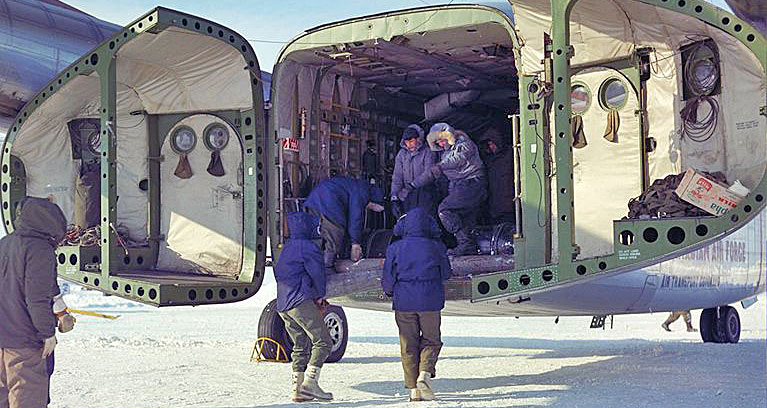

Memories of RAF Akrotiri
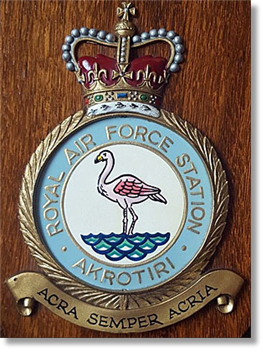

The history of RAF Akrotiri began on July 1 1955 when the first 30 personnel posted to the 'Unit' established themselves in the flat, dry, rocky scrubland on the windswept Akrotiri Peninsula. Nicosia Airport was temporarily closed as a result of terrorist activity and the handling of the island's civil aviation was diverted to Akrotiri - with a tented 'civil airport reception centre' to match. An RAF Regiment Light Anti-Aircraft Wing was also brought in. By the end of August 1956 Station strength had reached 260 officers and 2864 other ranks: a massive increase in 12 months. It brought with it 1430 personnel on the daily sick-parade, mainly a result of the over crowding and unsanitary conditions, as construction lagged behind the unforeseen demand for accommodation. From its rough beginnings with caravans and mud tracks, the Station was laid out, roads made, hangars and some permanent buildings constructed. Three new barrack blocks were opened allowing another 32 families onto the Station into formerly misappropriated married quarters.
Other intended married quarters were still in use as billets, Station Sick Quarters, the Education Centre, the Hospital and the NAAFI. A bank had opened for business and 4 wooden shacks served as shops. A small theatre club was in existence and out along Ladies' Mile, the Sailing Club had been formed. In its first 12 months as a functioning operational airfield, RAF Akrotiri had not only survived but had expanded and flourished. Although continuously affected by the EOKA troubles in one way or another and with more than a quarter of the year spent on a full war footing for the Suez Crisis, morale was high and the pioneer spirit was still strong...
For more history, visit http://www.rafakrotiri.co.uk/history.html
For more history, visit http://www.rafakrotiri.co.uk/history.html
From: Brian Gibson, Paralimni
Subject: Memories of RAF Akrotiri
Dear Tony,
Having started a tour in Gibraltar and then being promoted, I was posted to Akrotiri in 1973. I was thoroughly enjoying Cyprus and spent many nights sipping Brandy sours with friends at BBQs.
Then in 1974 it all ended with a coup and invasion. As we were living in a hiring in Limassol, my family was evacuated to RAF Melksham in the UK.
Meanwhile I and the rest of the squadron were hit with a workload that we hadn't expected on that sunny jewel of an island. I spent six months living in a tent that we set up on the waste ground next to the terminal pan, between the Cargo Hangars and Load Control.
In the two tents that we had set up, "C" shift were self contained - we slept in one and the second was our mess tent. I had brought my fridge and gas cooker from my hiring and we scrounged food from various sources, mainly rations from inbound aircraft. We even dined the Station Commander there to prove we were happy and organized because we were being pressured to move into a block, which we didn't want.
I am including a brochure which was compiled about the workload we handled during that period. Hoping you can make use of this.
Best wishes
Brian.
Subject: Memories of RAF Akrotiri
Dear Tony,
Having started a tour in Gibraltar and then being promoted, I was posted to Akrotiri in 1973. I was thoroughly enjoying Cyprus and spent many nights sipping Brandy sours with friends at BBQs.
Then in 1974 it all ended with a coup and invasion. As we were living in a hiring in Limassol, my family was evacuated to RAF Melksham in the UK.
Meanwhile I and the rest of the squadron were hit with a workload that we hadn't expected on that sunny jewel of an island. I spent six months living in a tent that we set up on the waste ground next to the terminal pan, between the Cargo Hangars and Load Control.
In the two tents that we had set up, "C" shift were self contained - we slept in one and the second was our mess tent. I had brought my fridge and gas cooker from my hiring and we scrounged food from various sources, mainly rations from inbound aircraft. We even dined the Station Commander there to prove we were happy and organized because we were being pressured to move into a block, which we didn't want.
I am including a brochure which was compiled about the workload we handled during that period. Hoping you can make use of this.
Best wishes
Brian.
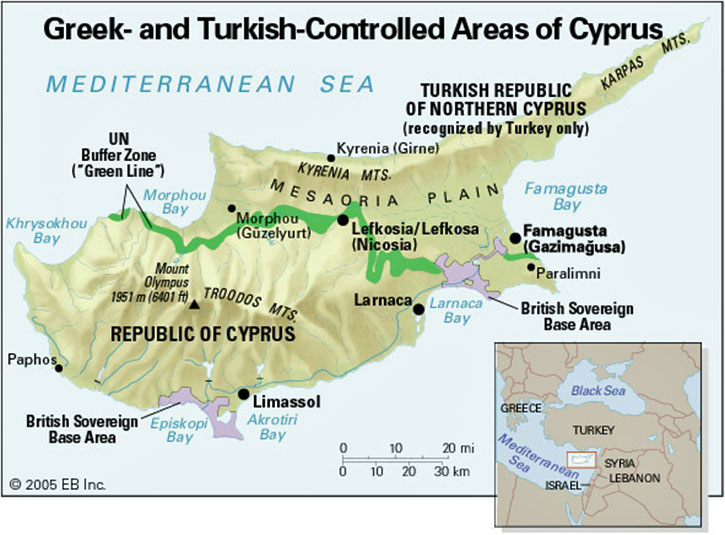
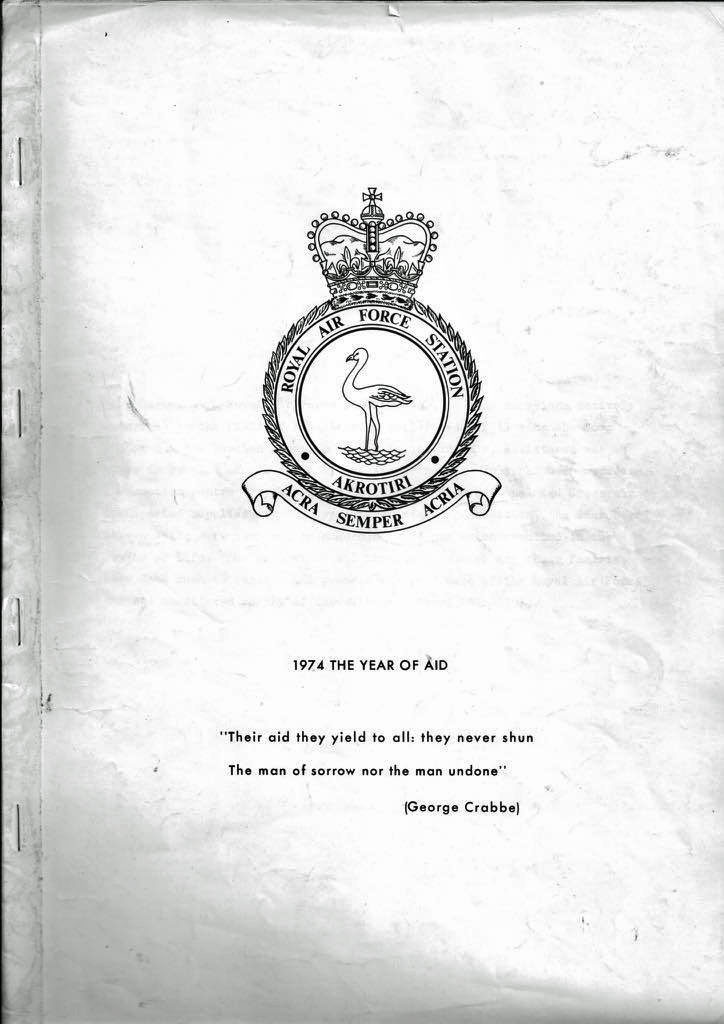

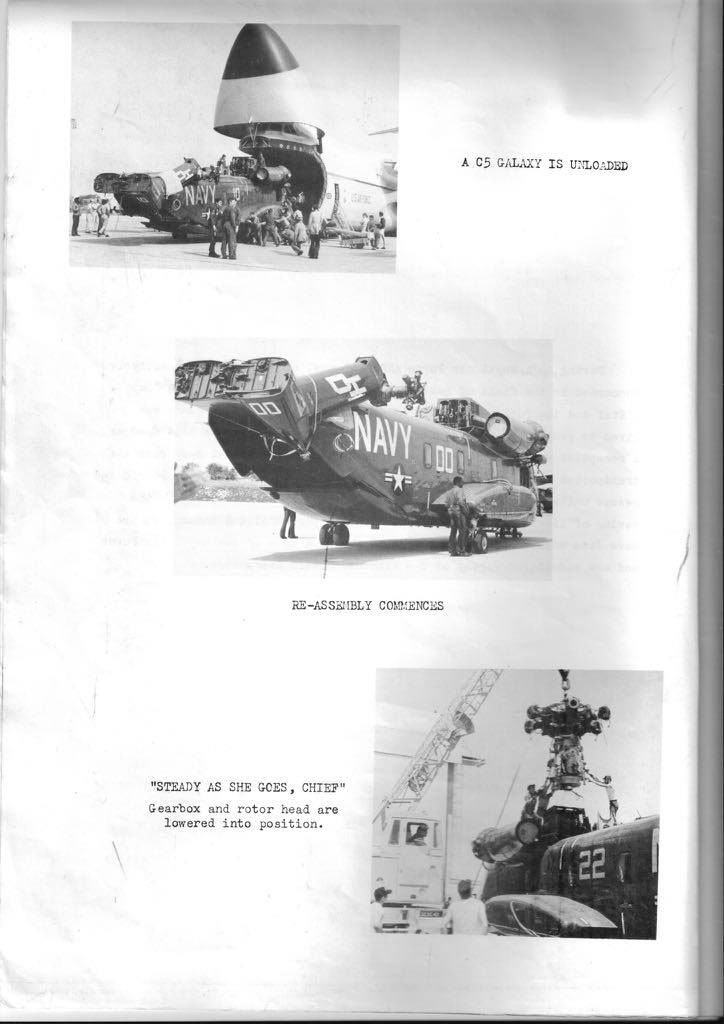
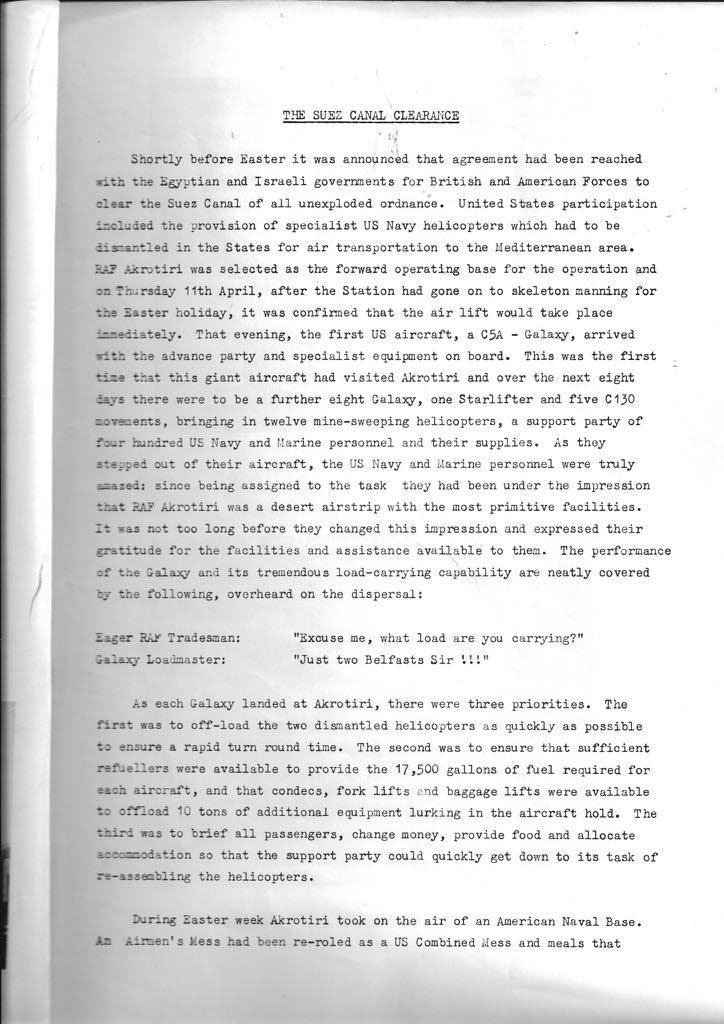
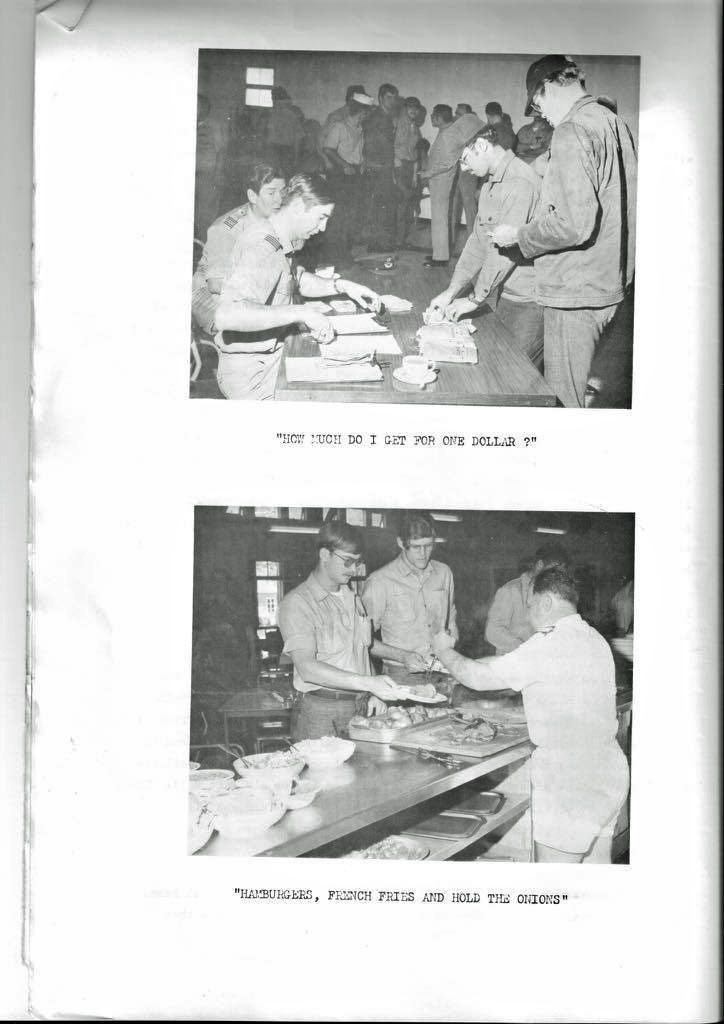
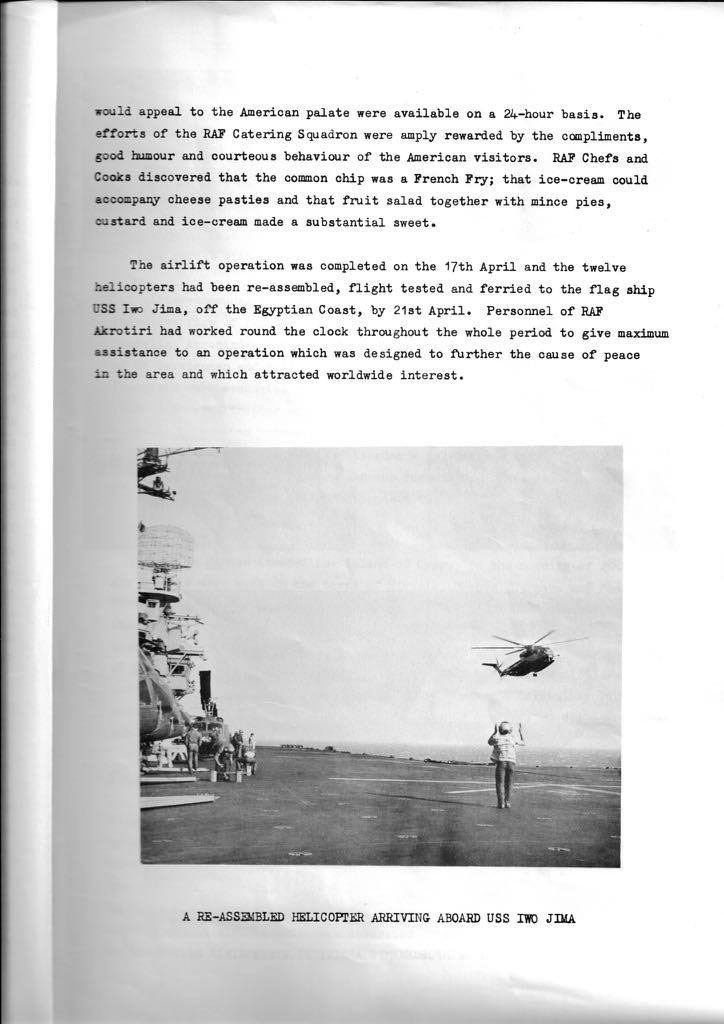
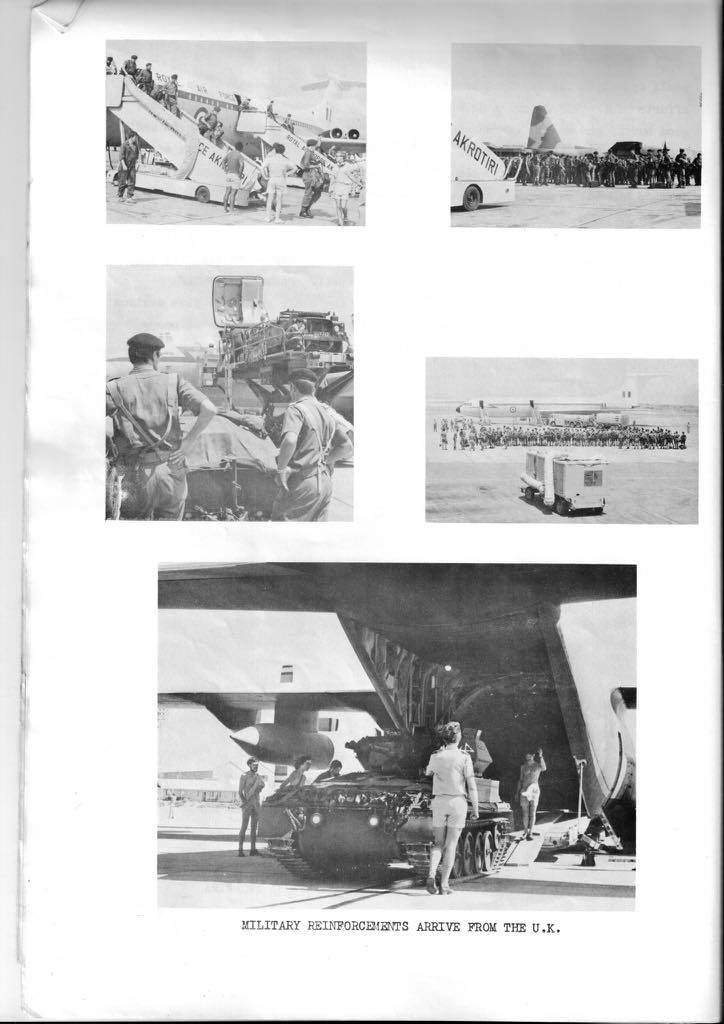
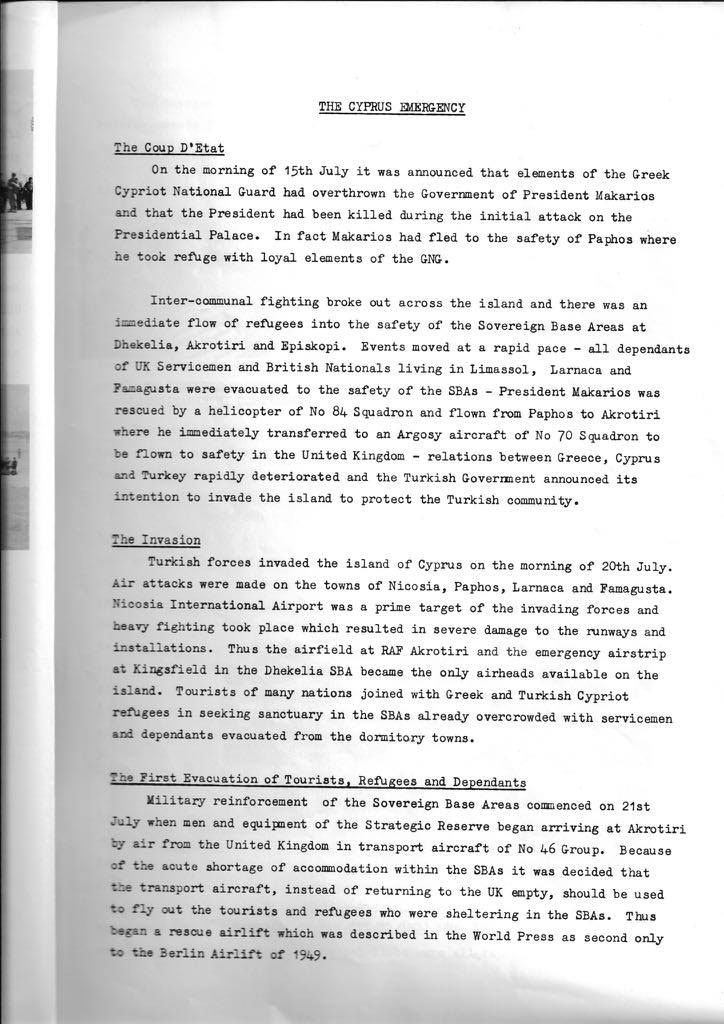
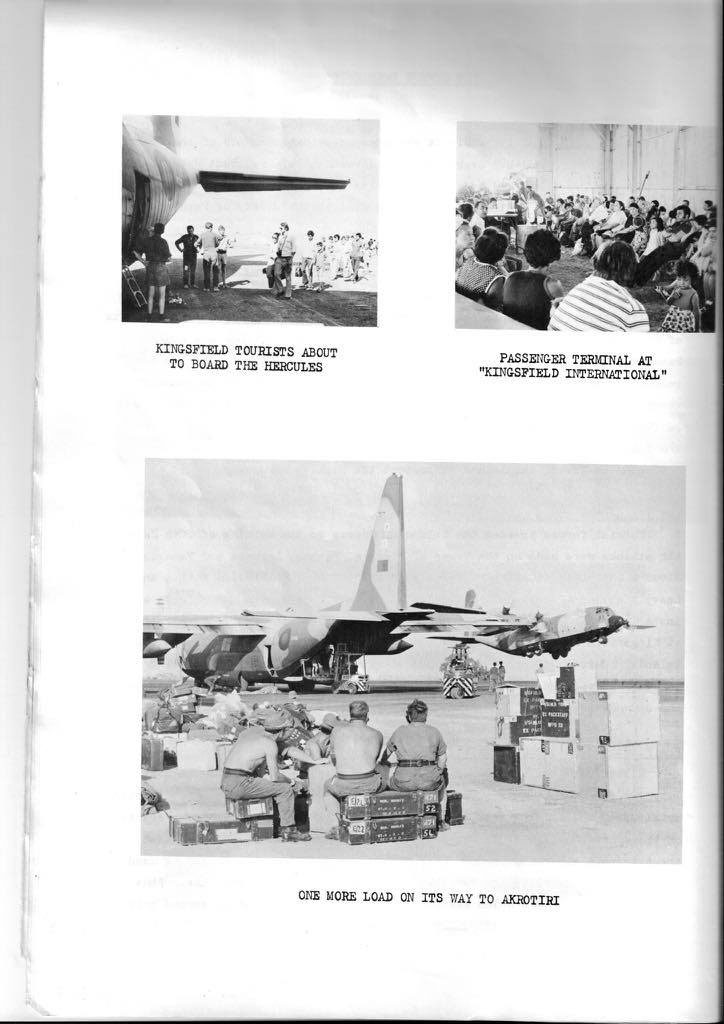
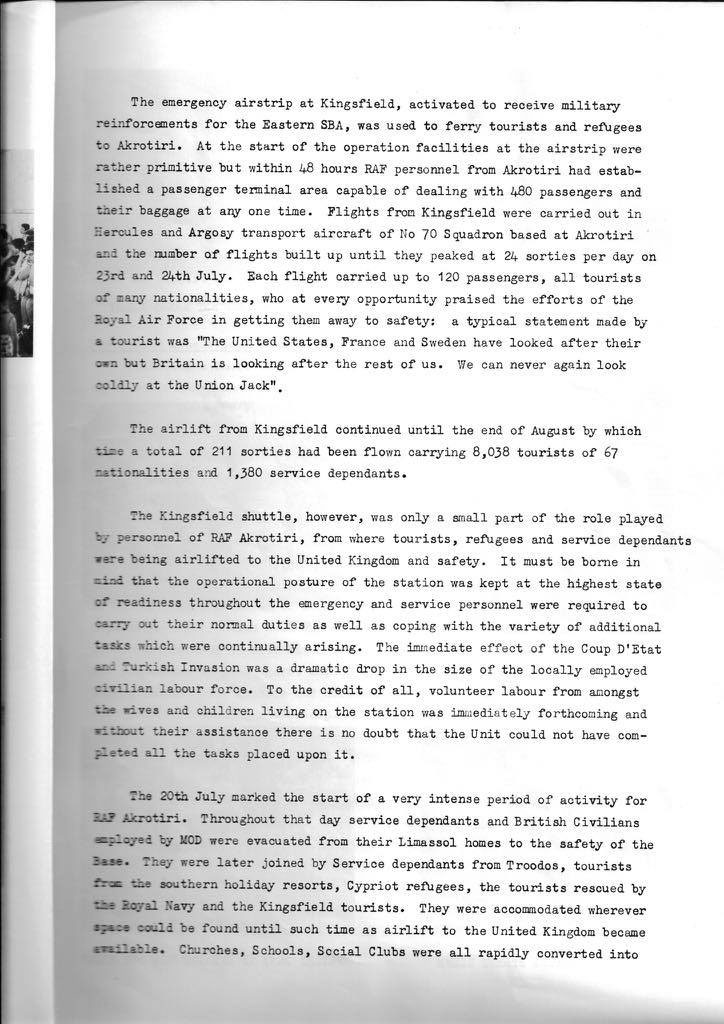
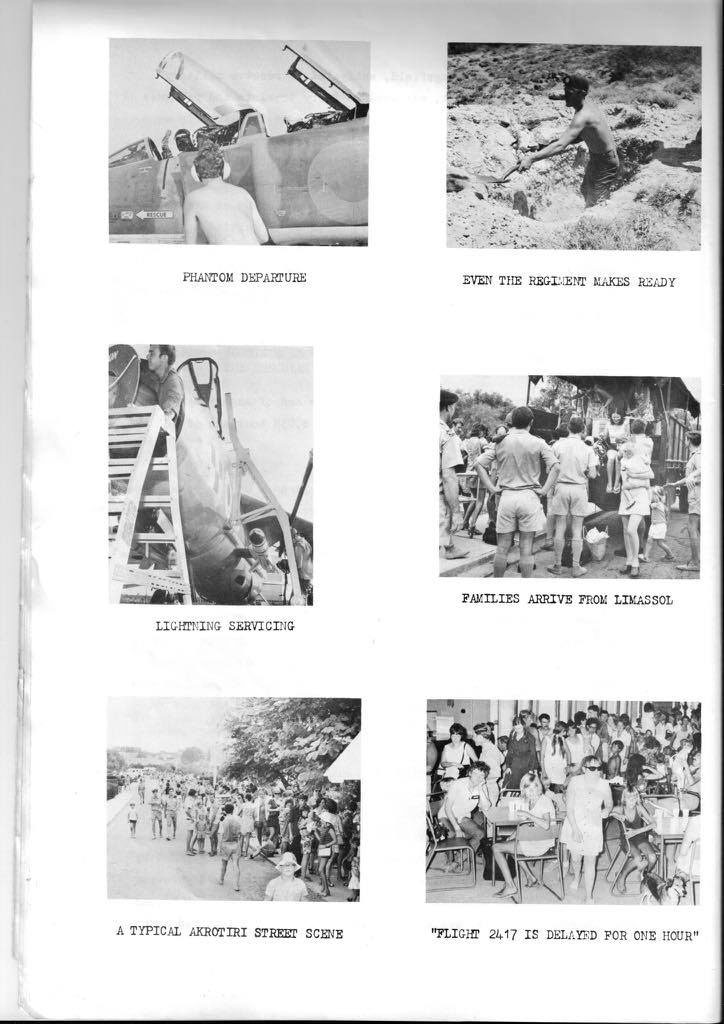
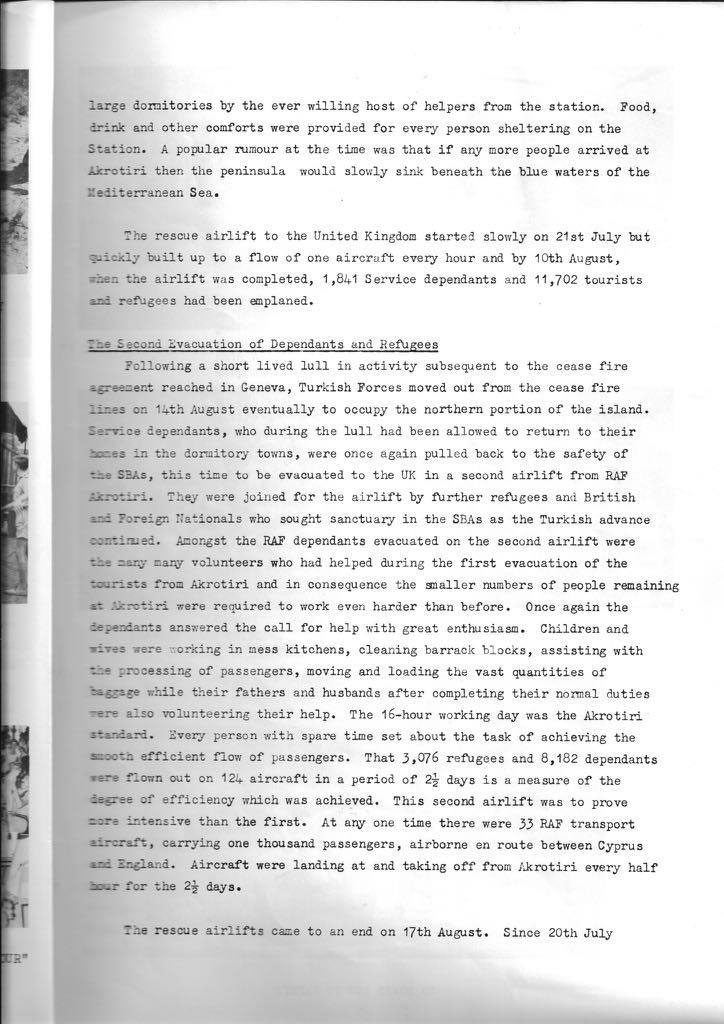
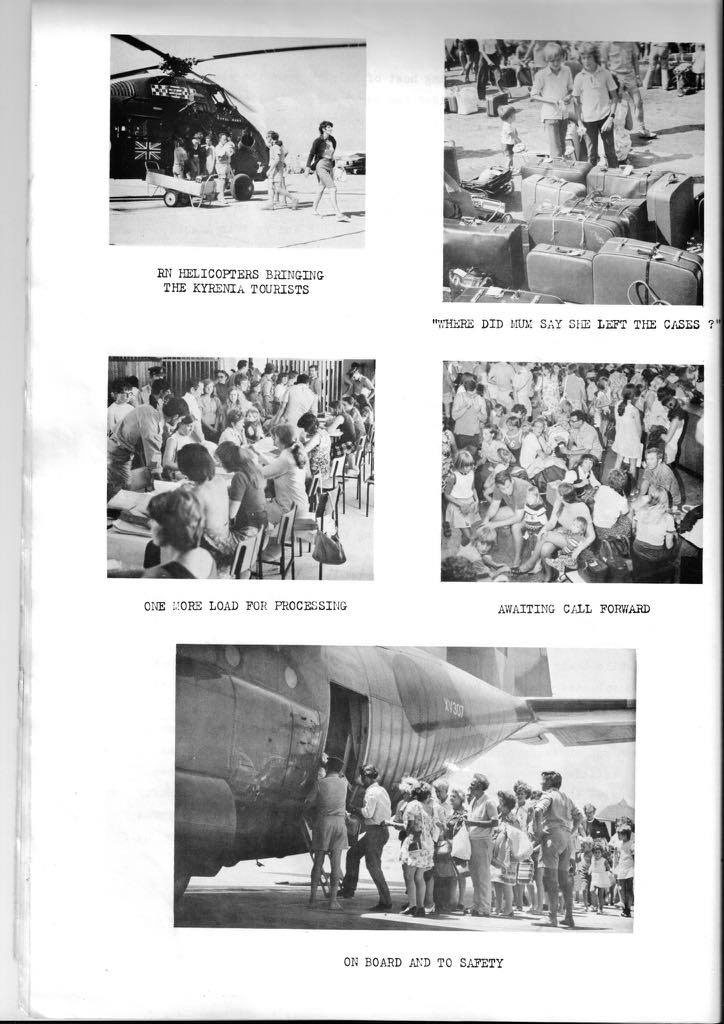

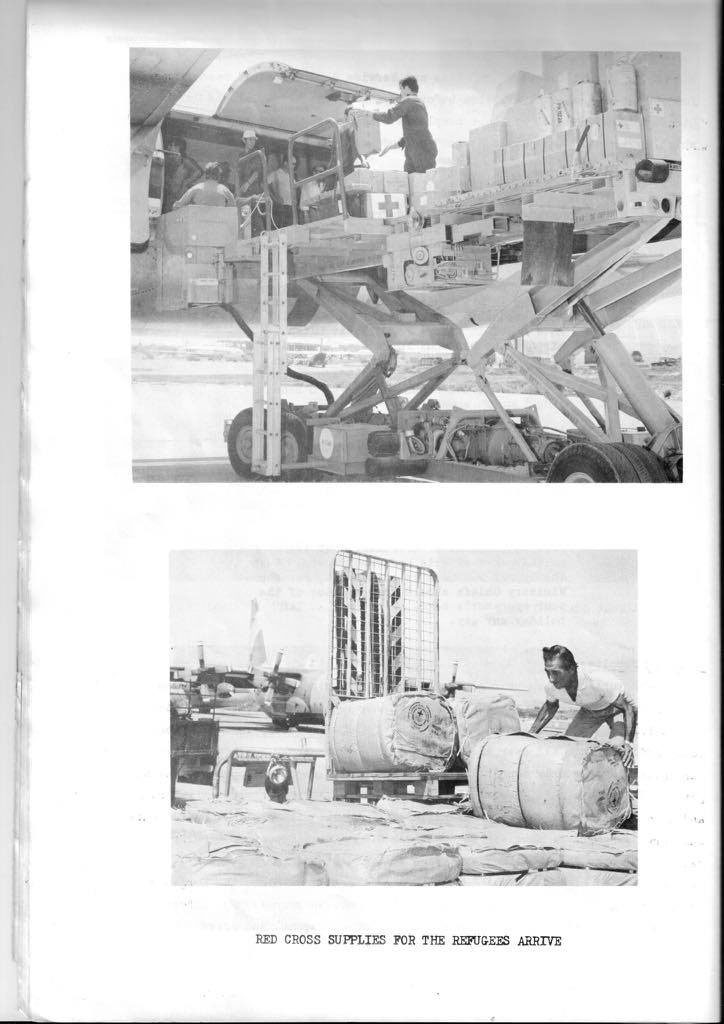
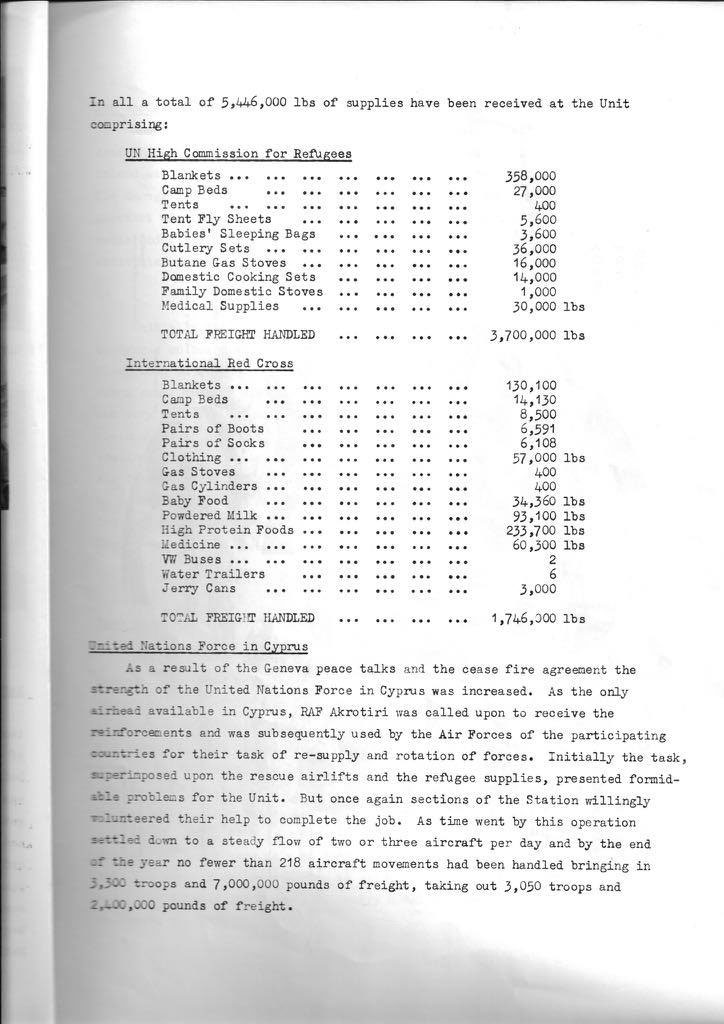
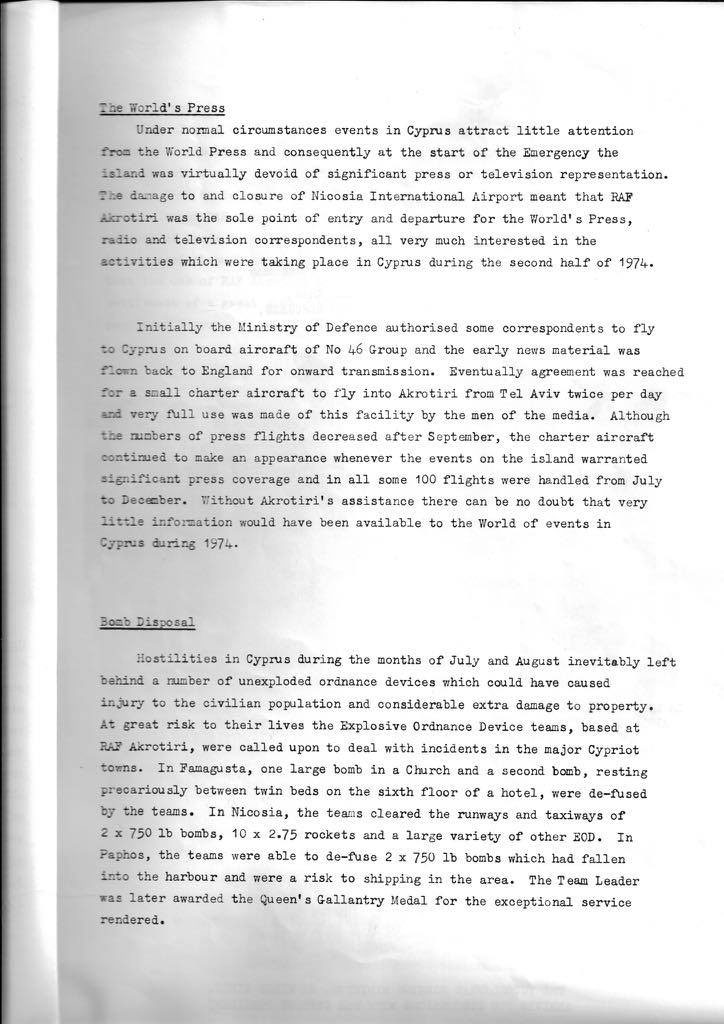
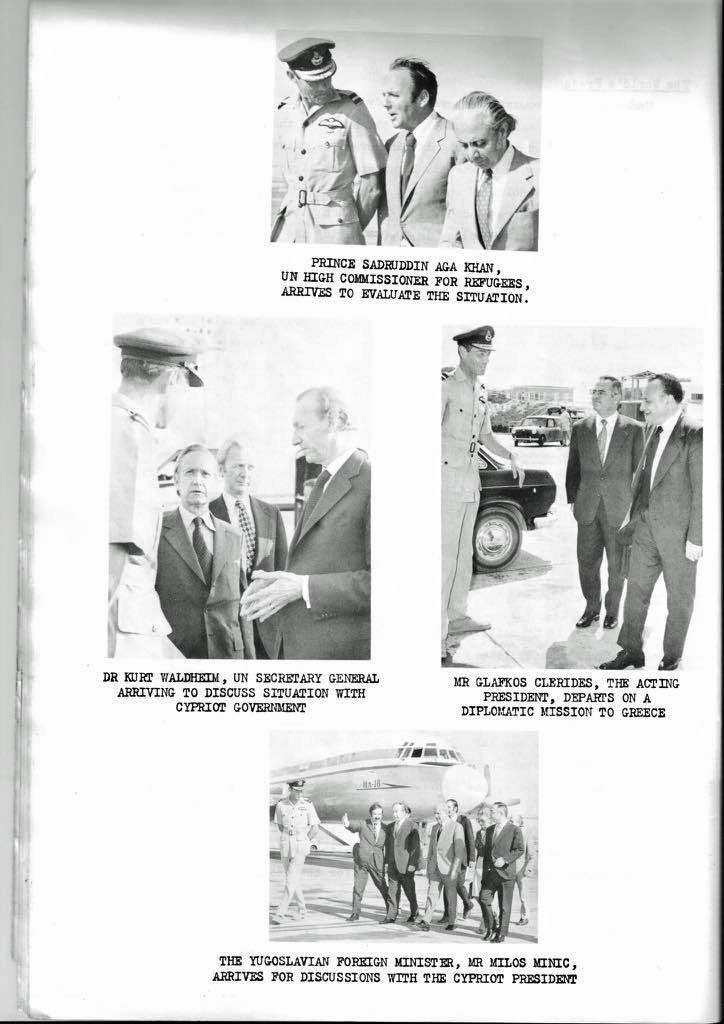
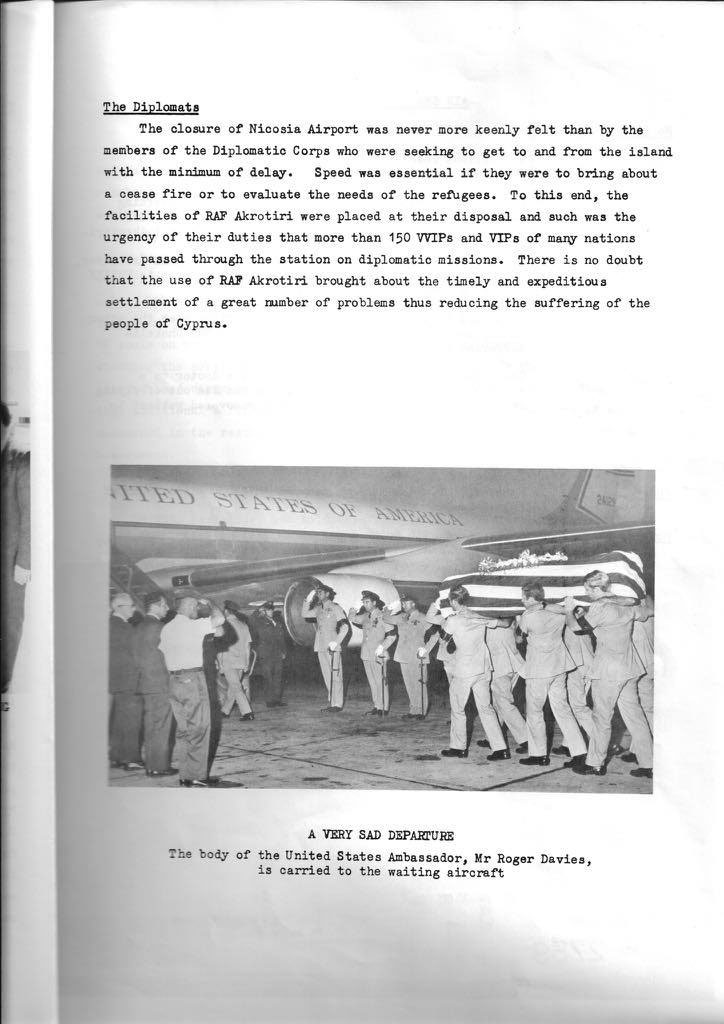
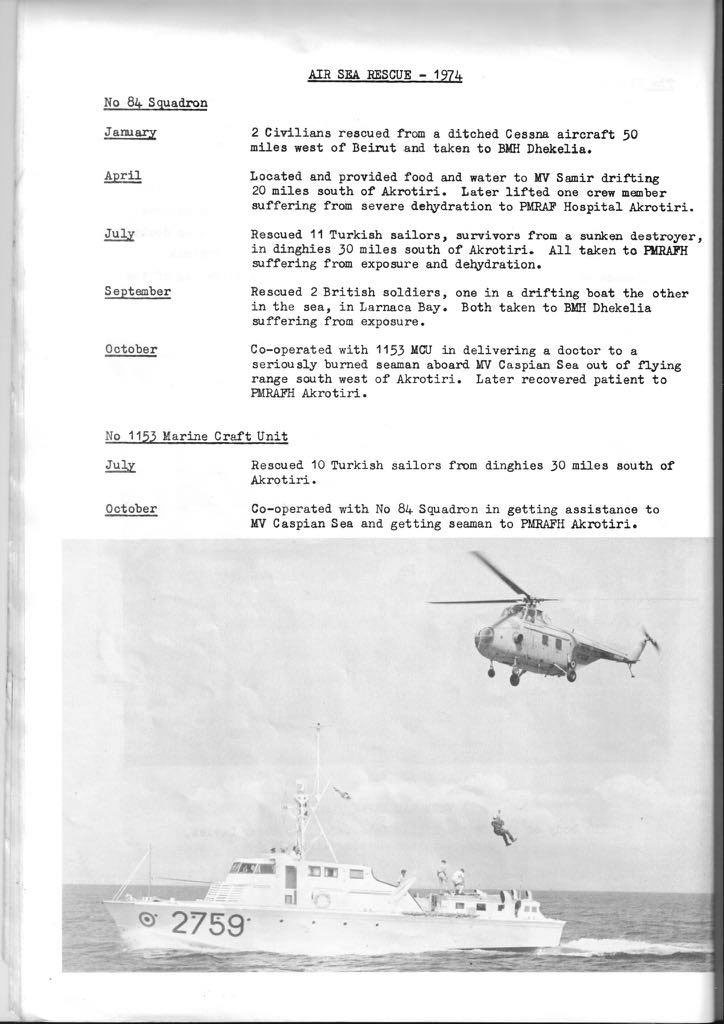
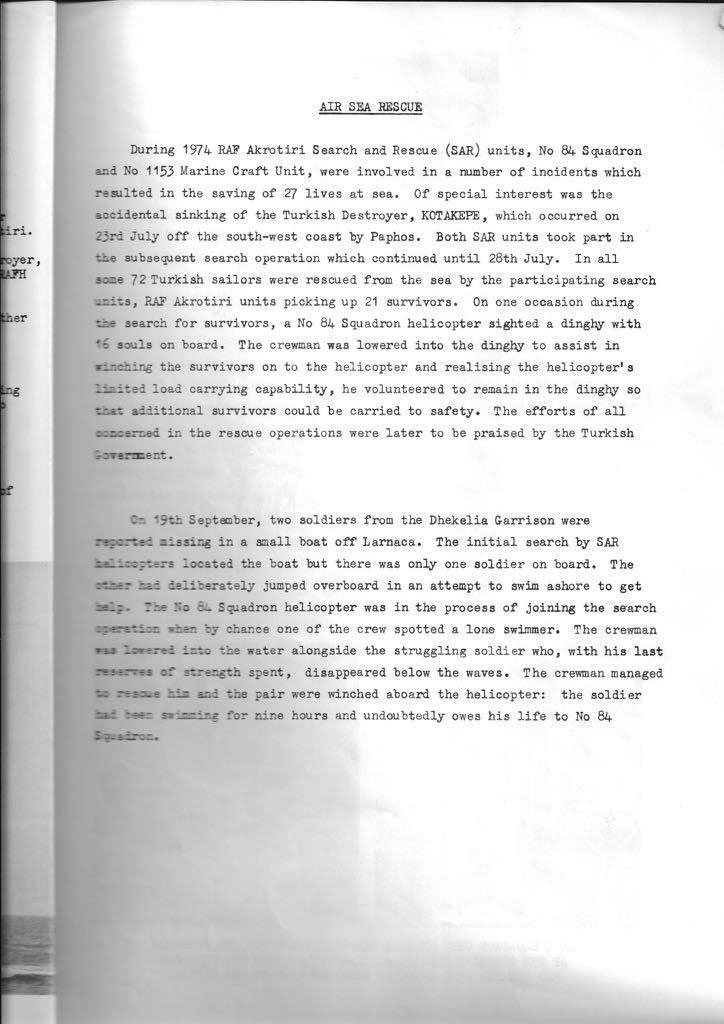
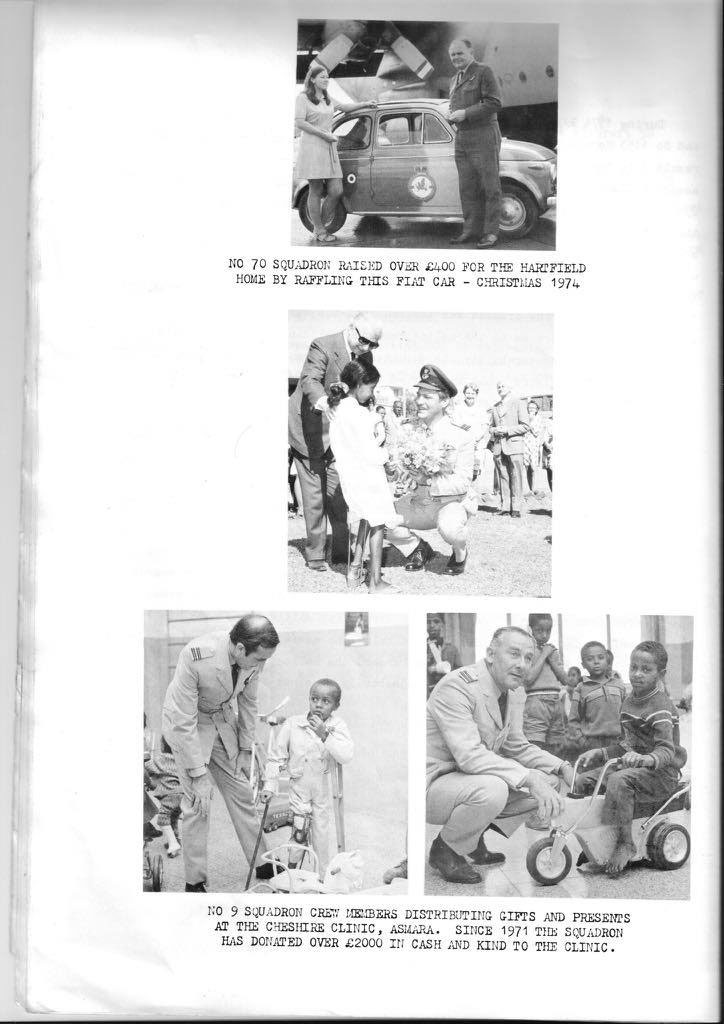
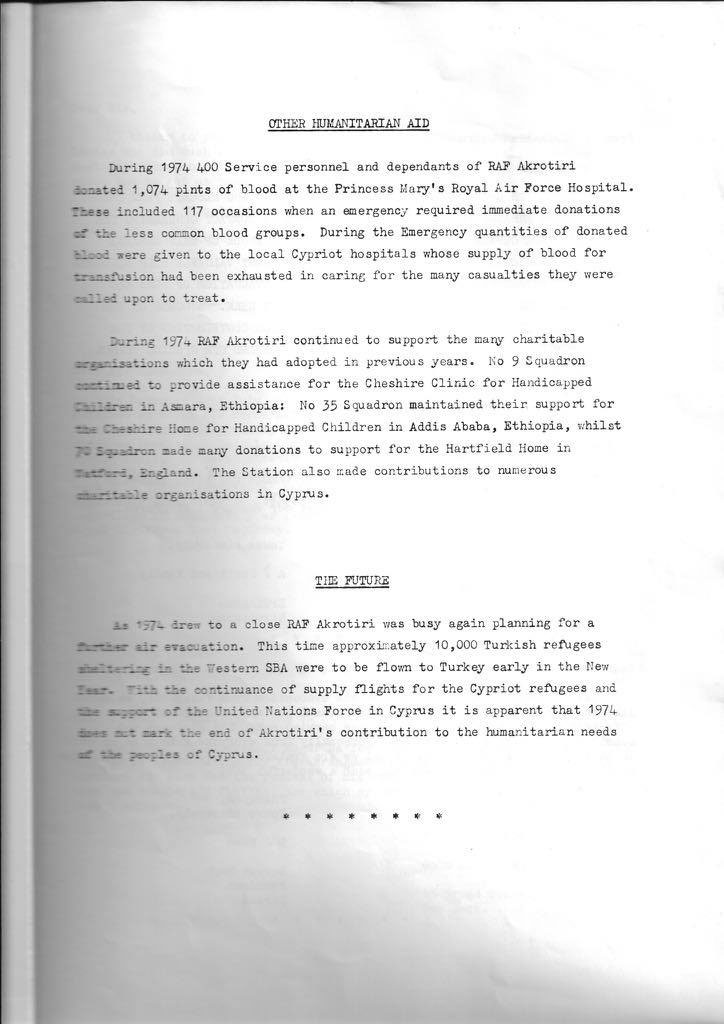

From: Michael Cocker, Swindon, Wilts
Subject: Memories of RAF Akrotiri
Hi Tony,
I have been warned by a former colleague and friend not to mention too much of what happened during our dull and uneventful tour from 1989-92, so I'll concentrate on how lucky I was to be there at the same time as the finest bunch of people you could hope to work with.
Starting at the top with Sqn Ldr Phil Britton, a boss who knew what you were going to get up to at the weekend before you knew yourself (and sometimes wanted a chat with you on Monday morning about it). WO Dave Wall, replaced by Ray Hedinburgh, FS John Billingsley, replaced by Sam Borland. Sgt's Martyn Turner and Paddy Power. Cpl's Scouse Armitage, Derek Read, Duncan Metcalfe, Tony McCabe, and myself. Then there was FS Ade Smith and Cpl Chris James down at the port in Limassol. The list is endless and I apologise now as I know that I have missed people out. All the SAC's were a great bunch of guys; too numerous to mention.
Subject: Memories of RAF Akrotiri
Hi Tony,
I have been warned by a former colleague and friend not to mention too much of what happened during our dull and uneventful tour from 1989-92, so I'll concentrate on how lucky I was to be there at the same time as the finest bunch of people you could hope to work with.
Starting at the top with Sqn Ldr Phil Britton, a boss who knew what you were going to get up to at the weekend before you knew yourself (and sometimes wanted a chat with you on Monday morning about it). WO Dave Wall, replaced by Ray Hedinburgh, FS John Billingsley, replaced by Sam Borland. Sgt's Martyn Turner and Paddy Power. Cpl's Scouse Armitage, Derek Read, Duncan Metcalfe, Tony McCabe, and myself. Then there was FS Ade Smith and Cpl Chris James down at the port in Limassol. The list is endless and I apologise now as I know that I have missed people out. All the SAC's were a great bunch of guys; too numerous to mention.
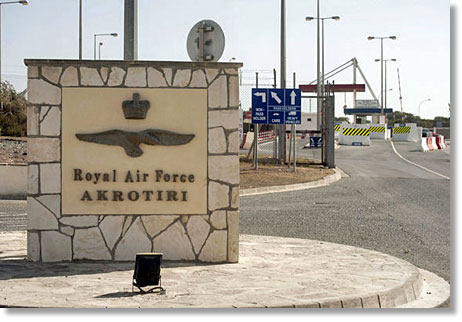
Op Granby started halfway through my tour, which upped the work tempo considerably, but despite this it was still a great place to get up in the morning (or afternoon) and go to work. There has always been speculation that reforce was requested in Akrotiri to allow the AKT based personnel to go on leave.... a bit of sour grapes I think, as know many, including myself, whose leave was cancelled or denied for the duration of the Op. I got my first leave since the Op started in May 91, after 10 months. I will say that our reforce guys were always great to work with as well, and they could have had plenty to moan about. The transit accomodation they were put in was never great and the allowances were poor. I only hope they felt we did enough to make life a little more comfortable for them.
I lived in Limassol for the latter half of my tour, in amongst the locals. This was a fantastic opportunity to integrate into local life. We were lucky to be embraced by the community and became part of it. Although 3 hairy Movers (myself, Chris James and Russ Knight) moving into a flat in Zakaki, on the outskirts of town, could have seriousy affected local house prices.
I lived in Limassol for the latter half of my tour, in amongst the locals. This was a fantastic opportunity to integrate into local life. We were lucky to be embraced by the community and became part of it. Although 3 hairy Movers (myself, Chris James and Russ Knight) moving into a flat in Zakaki, on the outskirts of town, could have seriousy affected local house prices.
But soon little old ladies were feeling sorry for us and bringing us pots of food (apparently men shouldn't cook for themselves after a days work), however priests would cross themselves when they walked past the flat. Mind you the local clergymen soon got wind that we had built a bar in the living room and would stop by for a Keo or Anglais en route to evensong.
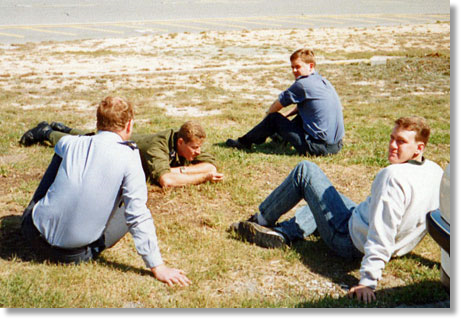
Outside exports hangar- Nev Whitham, Myke Wood, Dave Sapsford & Dave Holley
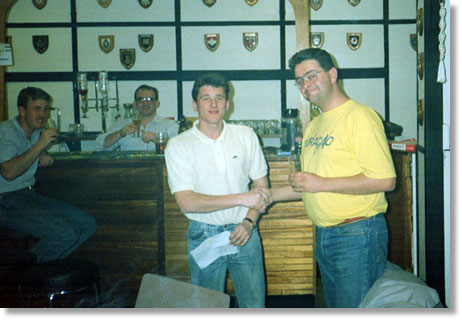
Lash Inn - Dave Holley, Paul Dunn, Paul Austin & Russ Knight
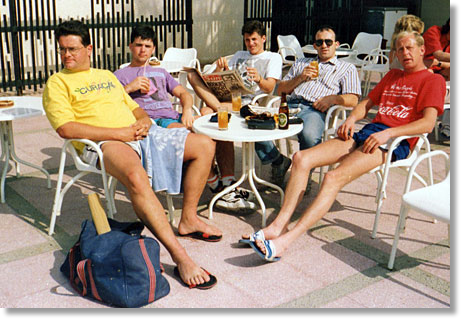
Ayia Napa - Russ Knight, Paul Woodley, Paul Austin, Paul Dunn & Myself
In hindsight I/we did some pretty daft things, particularly whilst under the influence - fast cars, large motorbikes, and I even had a boat of dubious seaworthyness, which we would take out in any weather filled to the gunwhales with Carlsberg and fishing tackle. We never caught any fish but always had fun and games getting the boat back on the trailer.
My Toyota Celica would regularly have a little dip in Ladies Mile when my Carlsberg consumption had exceeded my common sense and the waves were dragging the trailer back into the sea.
My Toyota Celica would regularly have a little dip in Ladies Mile when my Carlsberg consumption had exceeded my common sense and the waves were dragging the trailer back into the sea.
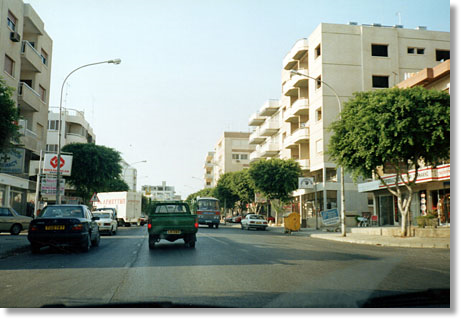
Makarios Avenue, Limassol
The three of us were stopped on Chris's motorbike one evening, heading into town a little worse for wear following an afternoon session, and rather than suggesting going home, not drinking anymore or perhaps wearing something more appropriate than T- shirt, shorts and flip flops, the very nice policeman told us to stop singing as the noise was terrible, and let us continue on our way to drink more - silently.
In 1991 Chris James and I took a trip up to Athens on the MV Seawave, the same vessel Michael Palin had used during his Pole to Pole trip. We ran into a storm on the way to Rhodes and made no headway for about 8 hours.
We were sat in the bar, and discovered we were drinking with the Captain (who I thought may have been a bit keener to keep his rusting hulk above water). When the barman (a Sri Lankan called Gurta) wanted to close up, the Captain told him to give me and Chris the keys, and we were to let him know what we'd drunk the next day. I can't for the life of me remember what we told Gurta the following morning, but I'd like to think we were fairly honest about our consumption.
In 1991 Chris James and I took a trip up to Athens on the MV Seawave, the same vessel Michael Palin had used during his Pole to Pole trip. We ran into a storm on the way to Rhodes and made no headway for about 8 hours.
We were sat in the bar, and discovered we were drinking with the Captain (who I thought may have been a bit keener to keep his rusting hulk above water). When the barman (a Sri Lankan called Gurta) wanted to close up, the Captain told him to give me and Chris the keys, and we were to let him know what we'd drunk the next day. I can't for the life of me remember what we told Gurta the following morning, but I'd like to think we were fairly honest about our consumption.
The three years flew past and it was a real wrench to leave, but I was going native so needed to get back to reality. I often toyed with doing another tour there if the opportunity arose, but I don't think I could ever repeat the fun and experiences of that time. I think it's as much the people you are with as well as the place, and it would have been impossible to be out there for a second time with the same bunch of guys.
Regards
Mick
Regards
Mick
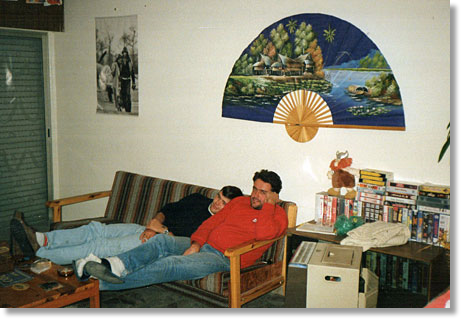
A domestic scene in our Limassol flat - Chris James & Russ Knight - surprisingly sober
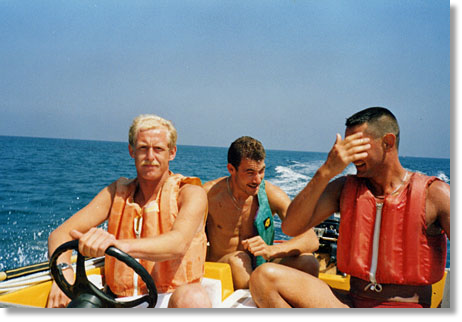
Me at the wheel with 2 Techies, names I can't recall
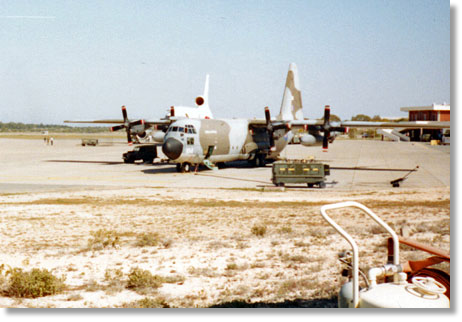
Bravo dispersal
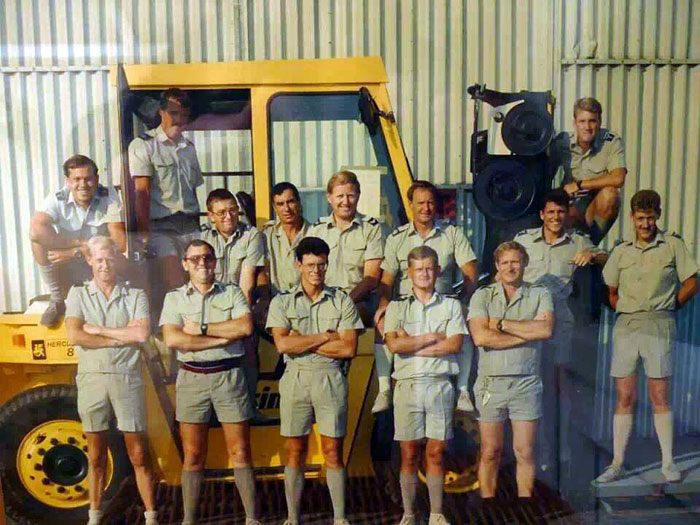
The Traffic/Cargo team just Pre Op Granby about July 1990
Back Row - Andy Cookson, Martyn Turner, Colin Ward, Johnny, Nev Whitham, John Billingsley, Paul Austin, Dave Holley, Myke Wood.
Front Row - Mick Cocker, Les Packham, Derek Read, Dave Sapsford, Freddy.
Front Row - Mick Cocker, Les Packham, Derek Read, Dave Sapsford, Freddy.

From: Dennis Wood, Swindon, Wilts
Subject: Memories of Akrotiri
This is my recollection of my experiences when stationed in RAF Akrotiri 1969 -71. I was in the Supply Trade, MT Supplier, and didn't change trades to Air Movements until after my tour had finished, when I was posted to Brize Norton (I was on the first Air Movements’ course at Brize).
When in Cyprus, I was a member of the Near East Air Force Mountain Rescue and was able to travel all over the island. My one claim to fame is that I walked from Episkopi Bay, over Mount Olympus and down to the Turkish side at Morphou Bay. It took us just over 16 hours. Moments to remember of the walk, when coming down from the Troodos Mountains, a local bus stopped to offer us a lift down the rest of the mountain. We declined the offer, much to the amusement of the local Cypriots who could not, by their gestures, understand why we didn't accept a lift.
When we were passing through Troodos Village, it was very tempting to stop for a Keo beer; having just climbed the mountain we were extremely thirsty - but one beer would have led to another, then another...
On the social side I wonder if Ali's Bar is still there, always a great place to go for a drink at any time. Hero’s Square where all the night clubs were like the Green Rock. Then there was the By-Pass where all the kebab restaurants and bars were. Mountain Rescue had our own bar called the Peg Inn, so we never had too far to go for a drink. I do wonder if it is still there?
Once a year we had to do the back up for the Golden Horseshoe walk around Cyprus. The participants were all the Service Children in Cyprus, of which there were quite a few. They had to walk carrying their overnight packs to various check points on route for four days. It was just a coincidence that their parents just happened to be passing and gave the children a lift to just before their check-point, booked in then a lift again to the next check-point. Our part was to walk the route to pick up any stragglers or kids who may have got lost. It was a week off work in the hot sun every day, what a life and I thoroughly enjoyed it!
Once a year there was a Wine Festival in Limassol and I never drank so much unpleasant wine in my life! Well, I could not resist a free sample. I still enjoy a few glasses of Cyprus Pantolime wine, Keo beer and brandy sours. Kebabs then were a four-course meal with free horrible wine. If you order a kebab now it is just a one course meal, how times have changed.
When my two and a half year tour came to an end, I came back to the UK by surface means; a passenger ship to Italy then trains overland via Rome, Venice, Austria, Munich and Paris. I caught the ferry from France across the English Channel to the White Cliffs of Dover and it is true that the White Cliffs were a wonderful sight to see - welcoming me back to the UK.
Subject: Memories of Akrotiri
This is my recollection of my experiences when stationed in RAF Akrotiri 1969 -71. I was in the Supply Trade, MT Supplier, and didn't change trades to Air Movements until after my tour had finished, when I was posted to Brize Norton (I was on the first Air Movements’ course at Brize).
When in Cyprus, I was a member of the Near East Air Force Mountain Rescue and was able to travel all over the island. My one claim to fame is that I walked from Episkopi Bay, over Mount Olympus and down to the Turkish side at Morphou Bay. It took us just over 16 hours. Moments to remember of the walk, when coming down from the Troodos Mountains, a local bus stopped to offer us a lift down the rest of the mountain. We declined the offer, much to the amusement of the local Cypriots who could not, by their gestures, understand why we didn't accept a lift.
When we were passing through Troodos Village, it was very tempting to stop for a Keo beer; having just climbed the mountain we were extremely thirsty - but one beer would have led to another, then another...
On the social side I wonder if Ali's Bar is still there, always a great place to go for a drink at any time. Hero’s Square where all the night clubs were like the Green Rock. Then there was the By-Pass where all the kebab restaurants and bars were. Mountain Rescue had our own bar called the Peg Inn, so we never had too far to go for a drink. I do wonder if it is still there?
Once a year we had to do the back up for the Golden Horseshoe walk around Cyprus. The participants were all the Service Children in Cyprus, of which there were quite a few. They had to walk carrying their overnight packs to various check points on route for four days. It was just a coincidence that their parents just happened to be passing and gave the children a lift to just before their check-point, booked in then a lift again to the next check-point. Our part was to walk the route to pick up any stragglers or kids who may have got lost. It was a week off work in the hot sun every day, what a life and I thoroughly enjoyed it!
Once a year there was a Wine Festival in Limassol and I never drank so much unpleasant wine in my life! Well, I could not resist a free sample. I still enjoy a few glasses of Cyprus Pantolime wine, Keo beer and brandy sours. Kebabs then were a four-course meal with free horrible wine. If you order a kebab now it is just a one course meal, how times have changed.
When my two and a half year tour came to an end, I came back to the UK by surface means; a passenger ship to Italy then trains overland via Rome, Venice, Austria, Munich and Paris. I caught the ferry from France across the English Channel to the White Cliffs of Dover and it is true that the White Cliffs were a wonderful sight to see - welcoming me back to the UK.
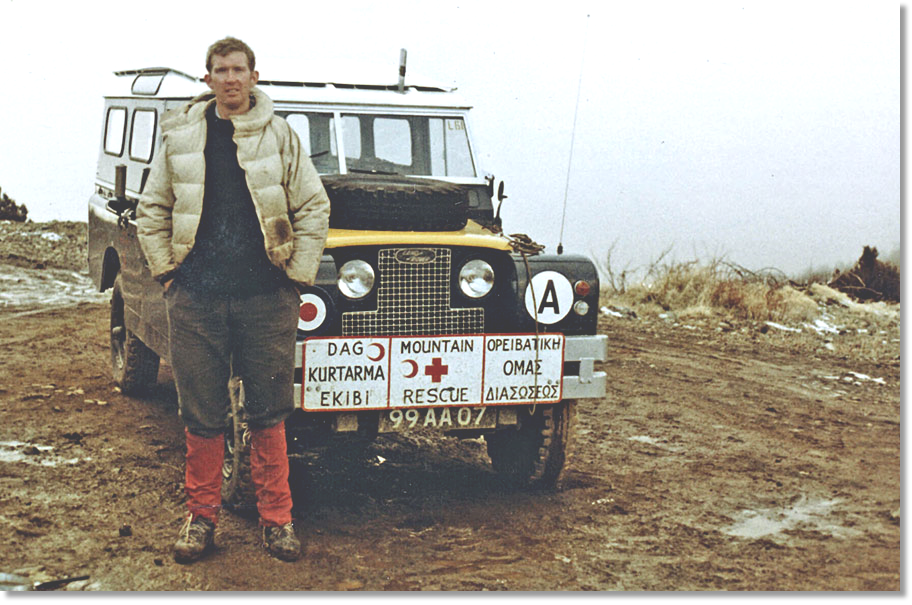
That's me, posing by the Mountain Rescue Landrover on top of Mount Olympus during the Winter
My walking route across the breadth of Cyprus. Episkopi over Mount Olympus to Morphou Bay
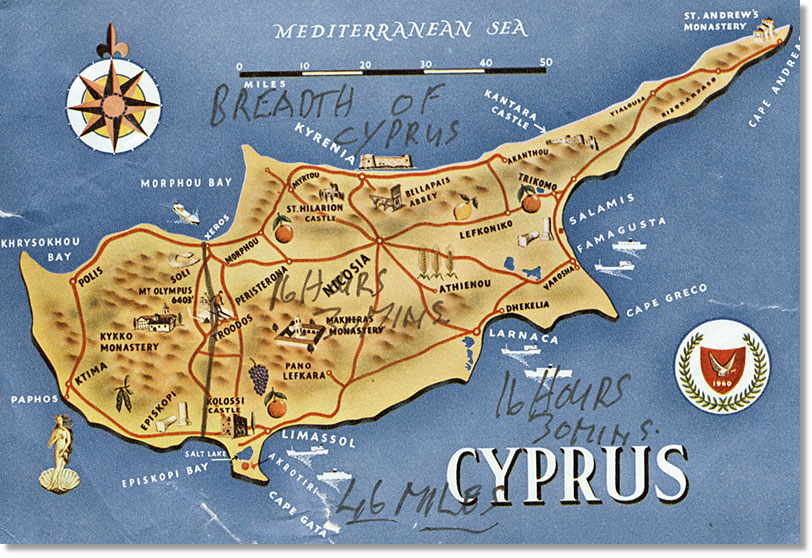

From: Arthur Taylor, Newcastle under Lyme, Staffs
Subject: Memories of RAF Akrotiri
Hi Tony,
The Island of Cyprus featured many times in my service career. Firstly in 1953, I went to RAF Nicosia from RAF Kasfareet to attend the GDT Course for Cpls, a nice break from the Canal Zone. 1955/60 whilst an AQM, I staged RAF Nicosia in both Valletta and Beverley Aircraft, and you have heard of one such task. 1956, was AQM on the Suez Operation flying out of RAF Nicosia to El Gamil, Port Said on Valetta aircraft of 30 Squadron. Again, out of the comfort zone, but I shall never forget it.
An admission, I was never on Movements at Akrotiri, however, I did a tour there 1964/67, but as a Supplier, working in R&D Receipts. In that role, I had a decent rapport with the Movements staff, also the Passenger Terminal was close to R&D, so that was our supply of cold drinks from the coolers in the Terminal.
My thanks went out to the Movements staff in that Terminal when my brother (yes, the one who had been on the Oronsay), now working for the NAAFI and was enroute to Singapore to join his ship. My wife, son and I were allowed into the Transit Lounge to have the turn-round time with my him. Also on that flight was Frankie Howard with the CSE Show, so there was a bit of banter there, and my brother and I got through a couple of Keo bottles!
Again, there was assistance from the Movements staff in getting my car home on a Britannia aircraft to Lyneham. I had bought a Ford Taurus whilst in Cyprus. Back in those days there was a raffle to get your car flown home, I was one of the lucky ones. My car was loaded on the Tuesday, and we flew home on the Saturday.
I have many memories of that tour, firstly at RAF Nicosia, then was posted across to Akrotiri We had a hiring in Limassol, and eventually a Married Quarters on Akrotiri which was just by the Saddle Club. No I didn't join the club and not having much garden didn't need the horse manure, but I did hear there was plenty of it.
With the family, we did tour the Island, although at that time there were the troubles (which still go on today). We were very restricted at Nicosia, living off base was sometimes frightening when there was fighting just down the road. However, with the move to Akrotiri, life was less strained; even more so when we got the Married Quarter on camp.
In my time on UKMAMS, I staged Akrotiri many times both solo and with a team enroute to Kai Tak or Kathmandu. The night stops were different each time. Sometimes, as a team, we would all go down the road to the bar (I can't remember the name of it). Other times it was a night in the bar of the Sgts Mess, and one particular night stands out. Baz Shatford and I were in the bar, when who should walk in was Taff Thomas with a couple more MAMS teams. What a night that turned out to be! Taff got on the piano, and very soon the bar was packed. What a great night! The golden oldies.
Rgds Arthur.
Subject: Memories of RAF Akrotiri
Hi Tony,
The Island of Cyprus featured many times in my service career. Firstly in 1953, I went to RAF Nicosia from RAF Kasfareet to attend the GDT Course for Cpls, a nice break from the Canal Zone. 1955/60 whilst an AQM, I staged RAF Nicosia in both Valletta and Beverley Aircraft, and you have heard of one such task. 1956, was AQM on the Suez Operation flying out of RAF Nicosia to El Gamil, Port Said on Valetta aircraft of 30 Squadron. Again, out of the comfort zone, but I shall never forget it.
An admission, I was never on Movements at Akrotiri, however, I did a tour there 1964/67, but as a Supplier, working in R&D Receipts. In that role, I had a decent rapport with the Movements staff, also the Passenger Terminal was close to R&D, so that was our supply of cold drinks from the coolers in the Terminal.
My thanks went out to the Movements staff in that Terminal when my brother (yes, the one who had been on the Oronsay), now working for the NAAFI and was enroute to Singapore to join his ship. My wife, son and I were allowed into the Transit Lounge to have the turn-round time with my him. Also on that flight was Frankie Howard with the CSE Show, so there was a bit of banter there, and my brother and I got through a couple of Keo bottles!
Again, there was assistance from the Movements staff in getting my car home on a Britannia aircraft to Lyneham. I had bought a Ford Taurus whilst in Cyprus. Back in those days there was a raffle to get your car flown home, I was one of the lucky ones. My car was loaded on the Tuesday, and we flew home on the Saturday.
I have many memories of that tour, firstly at RAF Nicosia, then was posted across to Akrotiri We had a hiring in Limassol, and eventually a Married Quarters on Akrotiri which was just by the Saddle Club. No I didn't join the club and not having much garden didn't need the horse manure, but I did hear there was plenty of it.
With the family, we did tour the Island, although at that time there were the troubles (which still go on today). We were very restricted at Nicosia, living off base was sometimes frightening when there was fighting just down the road. However, with the move to Akrotiri, life was less strained; even more so when we got the Married Quarter on camp.
In my time on UKMAMS, I staged Akrotiri many times both solo and with a team enroute to Kai Tak or Kathmandu. The night stops were different each time. Sometimes, as a team, we would all go down the road to the bar (I can't remember the name of it). Other times it was a night in the bar of the Sgts Mess, and one particular night stands out. Baz Shatford and I were in the bar, when who should walk in was Taff Thomas with a couple more MAMS teams. What a night that turned out to be! Taff got on the piano, and very soon the bar was packed. What a great night! The golden oldies.
Rgds Arthur.

From: Don Mackenzie, Pictou Landing, NS
Subject: Memories of RAF Akrotiri
Tony and all Movers,
Wow, what fond memories I have of Cyprus! I was part of a team for Operation Snow Goose and we were housed in Nicosia. My old Mover friend was my SNCO, Reg Shipmann. We had some very hot days, however, working one day on and one off made it bearable.
Subject: Memories of RAF Akrotiri
Tony and all Movers,
Wow, what fond memories I have of Cyprus! I was part of a team for Operation Snow Goose and we were housed in Nicosia. My old Mover friend was my SNCO, Reg Shipmann. We had some very hot days, however, working one day on and one off made it bearable.
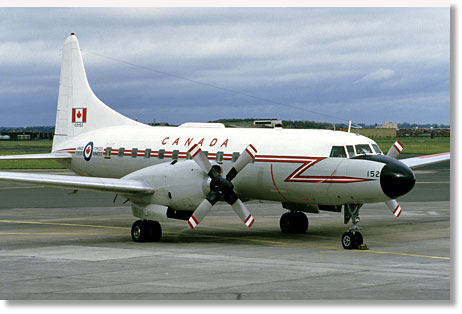
We only made it to the RAF Base in Akrotiri on one occasion - what a beautiful spot. I can say the RAF lads treated us well.
To make a long story short, Customs were being very un-accommodating with us while I tried to clear my paperwork. I was a CC109 Cosmopolitan Loadmaster at the time. Some of the older Movers think a LM on the Cosmo was not a real job, however I will never forget those great years.
Back to my Customs tale - I didn't have an official stamp on my paperwork. We had a departure slot time. Aircraft Commander looked at me and said, "Fix it!"
In those days we used to collect $5.00 for every meal. I had a stamp that said PAID, also with a date on it and applied this to the paperwork. I went back on board the plane brought a copy to Customs. We had our VIP departure on time. Now to me that is a Mover in training!
To make a long story short, Customs were being very un-accommodating with us while I tried to clear my paperwork. I was a CC109 Cosmopolitan Loadmaster at the time. Some of the older Movers think a LM on the Cosmo was not a real job, however I will never forget those great years.
Back to my Customs tale - I didn't have an official stamp on my paperwork. We had a departure slot time. Aircraft Commander looked at me and said, "Fix it!"
In those days we used to collect $5.00 for every meal. I had a stamp that said PAID, also with a date on it and applied this to the paperwork. I went back on board the plane brought a copy to Customs. We had our VIP departure on time. Now to me that is a Mover in training!
I really enjoy some of the Far East stories - we, as Movers can be proud of our endeavours. Cheers to Movers!
Doc MacKenzie
Doc MacKenzie

From: Peter Orton, Camberley, Surrey
Subject: Memories of Akrotiri
Hi Tony,
So there I was gathering my thoughts about MAMS training, and in particular the short sea survival course that enthused and aimed me at my final 29 years with BA. You changed destination at short notice, ever flexible I have taken a re-role and remember Akrotiri with equal fondness.
My first encounter with Kokinelli, Kebabs, and Hero's Square was during No 2 Movements Controller's Course. Sadly our route trip on a Britannia was extended as the dear aeroplane went poorly sick for 3 or 4 days :)
A little later I had applied for UKMAMS, having a soft spot for Abingdon. I was asked to take a day to consider NEAF MAMS instead as they had a vacancy (and Akrotiri started with an A as well). I generously gave the RAF 23 hours 59 minutes and 59 seconds back of the offered day of consideration, and signed up the paperwork in the General Office within a few minutes.
I was a little chuffed, as 80% of my experience was on passenger section, so the roughy-toughy world of a Ramp Tramp would round out my trade experience.
I was delighted to renew friendships with Pete Cowan, Dougie Lister, Neil Middleton, Keith Parker and a rather changed Pat South. I rapidly got to know co-SACs Pete Herring and Dick Bullimore Cpls Sammy (Colin) Allen and Gordon Black. Hank Middleton was my Chiefy, and FO Team Leaders Frank Holmes, and Roger (?) were the original establishment.
Subject: Memories of Akrotiri
Hi Tony,
So there I was gathering my thoughts about MAMS training, and in particular the short sea survival course that enthused and aimed me at my final 29 years with BA. You changed destination at short notice, ever flexible I have taken a re-role and remember Akrotiri with equal fondness.
My first encounter with Kokinelli, Kebabs, and Hero's Square was during No 2 Movements Controller's Course. Sadly our route trip on a Britannia was extended as the dear aeroplane went poorly sick for 3 or 4 days :)
A little later I had applied for UKMAMS, having a soft spot for Abingdon. I was asked to take a day to consider NEAF MAMS instead as they had a vacancy (and Akrotiri started with an A as well). I generously gave the RAF 23 hours 59 minutes and 59 seconds back of the offered day of consideration, and signed up the paperwork in the General Office within a few minutes.
I was a little chuffed, as 80% of my experience was on passenger section, so the roughy-toughy world of a Ramp Tramp would round out my trade experience.
I was delighted to renew friendships with Pete Cowan, Dougie Lister, Neil Middleton, Keith Parker and a rather changed Pat South. I rapidly got to know co-SACs Pete Herring and Dick Bullimore Cpls Sammy (Colin) Allen and Gordon Black. Hank Middleton was my Chiefy, and FO Team Leaders Frank Holmes, and Roger (?) were the original establishment.
The unit was a lodger on Akrotiri administered by Episkopi, hence no boring station duties and a "get out of camp free card" for Tacevals. Truly a paradise island Cook's tour . The drive through the orange, lemon and grapefruit plantations every day from Limassol was probably the best commute in the world. It couldn't last, could it?
Signals intel, Vulcans and certain CIA interests made the station a strategically important part of the Cold War, but that all went above this SAC's head. To me life was all about booze, fags and F6663s. Sober moments were spent on the many quiet beaches, including Kyrenia and Famausta. In the winter skiing accompanied glue-vine and brandy sours.
By pure coincidence an exercise at the Kingsfield strip involving 38 Group TCW and other support units was closely followed by civil war, and the Turkish invasion, leading to a major airlift up to 15 minutes turnarounds. The Eastern SBA and garrison became home to Red and Blue teams for a couple of the summer months. The Cyprus operation is well documented elsewhere .
Due to the aforementioned incident, our families were evacuated firstly from Limassol and then the Island. It was now that we found ourselves on base at Akrotiri. Separated from our loved ones, suddenly all the WRAFs were beautiful, but many disappeared from their old roost in the Pen Club probably due to the increase in celibate male's raucous mating calls.
We finally settled in to a routine with our mates on Station Movements that involved kebabs and booze in large doses. Our work down route involved Cairo and Oman but we did get little gems like Nairobi (previous notes). Sadly The Vulcans went home with all their kit and kabudle. The other permanent units, Lightnings and Hercs (70 Squadron), departed so NEAF MAMS was no more.
I was cheated out of a full three-year tour on a most beautiful island, so sad, but wonderful memories!
Signals intel, Vulcans and certain CIA interests made the station a strategically important part of the Cold War, but that all went above this SAC's head. To me life was all about booze, fags and F6663s. Sober moments were spent on the many quiet beaches, including Kyrenia and Famausta. In the winter skiing accompanied glue-vine and brandy sours.
By pure coincidence an exercise at the Kingsfield strip involving 38 Group TCW and other support units was closely followed by civil war, and the Turkish invasion, leading to a major airlift up to 15 minutes turnarounds. The Eastern SBA and garrison became home to Red and Blue teams for a couple of the summer months. The Cyprus operation is well documented elsewhere .
Due to the aforementioned incident, our families were evacuated firstly from Limassol and then the Island. It was now that we found ourselves on base at Akrotiri. Separated from our loved ones, suddenly all the WRAFs were beautiful, but many disappeared from their old roost in the Pen Club probably due to the increase in celibate male's raucous mating calls.
We finally settled in to a routine with our mates on Station Movements that involved kebabs and booze in large doses. Our work down route involved Cairo and Oman but we did get little gems like Nairobi (previous notes). Sadly The Vulcans went home with all their kit and kabudle. The other permanent units, Lightnings and Hercs (70 Squadron), departed so NEAF MAMS was no more.
I was cheated out of a full three-year tour on a most beautiful island, so sad, but wonderful memories!
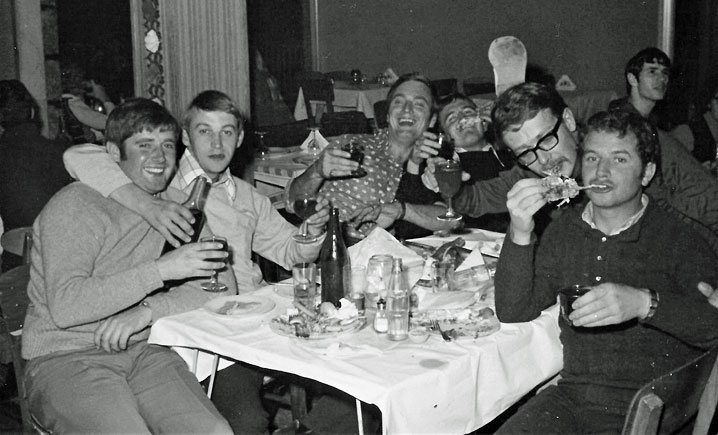
Limassol - I recognise Dick Bullimore, Stu Whitton, Dick Webb, me and Gordon Black

From: Paul Fitzpatrick, 47210 Doudrac
Subject: Memories of Akrotiri
Dear Tony,
Some thoughts of Akrotiri 1968-1970: An elderly batwoman scrubbing a pot which she thought was burnt. She had never heard of Teflon. • A young Andy Finlayson driving over the toes of an RAF Police auxiliary at the front ‘gate’. • The dread at picking up the SAMO; being invited in and being pressed into a hefty breakfast g&t with a refill at 0800. Another lost day. RIP Ron Etheridge.• Drinking Zivania at Halil’s kebab restaurant in Limassol. • Driving up Troodos and eating lunch at Trimlikini dam. • Swimming at Submarine point - using a modified string vest to dunk bottles of Keo beer to keep them cool. • Being 20 in the sun.
The erudite Cpl Jones on C shift commenting loudly in the presence of a VC10 captain who was obscenely expressing his irritation at a delay during the loading of a full casevac: ‘Where ignorance exists, vulgarity inevitably inserts itself’. The captain left the office with a red face.
FSgt Eddie Bannigan ‘liberating’ a 3-tonner load of cold and wet clothing from a mate in the army. The MOD would not scale cold and wet gear. We had frost on occasion in the winter but MOD didn’t believe it. The Sgt’s Mess really did run things.
So many more memories...
Best wishes
Paul Fitzpatrick
Subject: Memories of Akrotiri
Dear Tony,
Some thoughts of Akrotiri 1968-1970: An elderly batwoman scrubbing a pot which she thought was burnt. She had never heard of Teflon. • A young Andy Finlayson driving over the toes of an RAF Police auxiliary at the front ‘gate’. • The dread at picking up the SAMO; being invited in and being pressed into a hefty breakfast g&t with a refill at 0800. Another lost day. RIP Ron Etheridge.• Drinking Zivania at Halil’s kebab restaurant in Limassol. • Driving up Troodos and eating lunch at Trimlikini dam. • Swimming at Submarine point - using a modified string vest to dunk bottles of Keo beer to keep them cool. • Being 20 in the sun.
The erudite Cpl Jones on C shift commenting loudly in the presence of a VC10 captain who was obscenely expressing his irritation at a delay during the loading of a full casevac: ‘Where ignorance exists, vulgarity inevitably inserts itself’. The captain left the office with a red face.
FSgt Eddie Bannigan ‘liberating’ a 3-tonner load of cold and wet clothing from a mate in the army. The MOD would not scale cold and wet gear. We had frost on occasion in the winter but MOD didn’t believe it. The Sgt’s Mess really did run things.
So many more memories...
Best wishes
Paul Fitzpatrick

From: Richard Allen, Newport, Monmouthshire
Subject: Memories of RAF Akrotiri
Hi Tony,
I have great memories of Cyprus which covered my whole career. My Operator Course was the first to graduate on a live Op back in December 1979, after we were deployed to reforce the Movements squadron during Op Agila (Rhodesian Airlift). We were presented our LAC rank Bbadges on the pan by the RAF Akrotiri Station Commander, however it was the morning after the squadron Christmas Party in the Air Terminal, so the memories are pretty vague to say least!
I went back to Akrotiri as a Cpl, detached from RAF Leuchars MSF in the summer of 1986, supporting 111 Sqn APC (F4 Phantoms), and also numerous times when on the Systems Management Team based out of MoD, looking after the MMARS/SACS systems. I returned as a FS for a tour in 1999, a great time made more memorable as both my boys, Owain and Bryn, were born in The Princess Mary's Hospital, Akrotiri, whilst there.
My last trip to Akrotiri was unaccompanied in 2009 as WO FTRS for 5 months. Once again had great time and worked with some great people.
I have attached pictures of the Operator Course photo, taken from Jan 1980 RAF News, RAF Akrotiri JMS 2000 - photo from all ranks dining-in mess function, and finally our shift photo from 2009, nearly a 30 year gap between all three shots!
Thanks again for your efforts on the newsletter.
Richard (Taff)
Subject: Memories of RAF Akrotiri
Hi Tony,
I have great memories of Cyprus which covered my whole career. My Operator Course was the first to graduate on a live Op back in December 1979, after we were deployed to reforce the Movements squadron during Op Agila (Rhodesian Airlift). We were presented our LAC rank Bbadges on the pan by the RAF Akrotiri Station Commander, however it was the morning after the squadron Christmas Party in the Air Terminal, so the memories are pretty vague to say least!
I went back to Akrotiri as a Cpl, detached from RAF Leuchars MSF in the summer of 1986, supporting 111 Sqn APC (F4 Phantoms), and also numerous times when on the Systems Management Team based out of MoD, looking after the MMARS/SACS systems. I returned as a FS for a tour in 1999, a great time made more memorable as both my boys, Owain and Bryn, were born in The Princess Mary's Hospital, Akrotiri, whilst there.
My last trip to Akrotiri was unaccompanied in 2009 as WO FTRS for 5 months. Once again had great time and worked with some great people.
I have attached pictures of the Operator Course photo, taken from Jan 1980 RAF News, RAF Akrotiri JMS 2000 - photo from all ranks dining-in mess function, and finally our shift photo from 2009, nearly a 30 year gap between all three shots!
Thanks again for your efforts on the newsletter.
Richard (Taff)
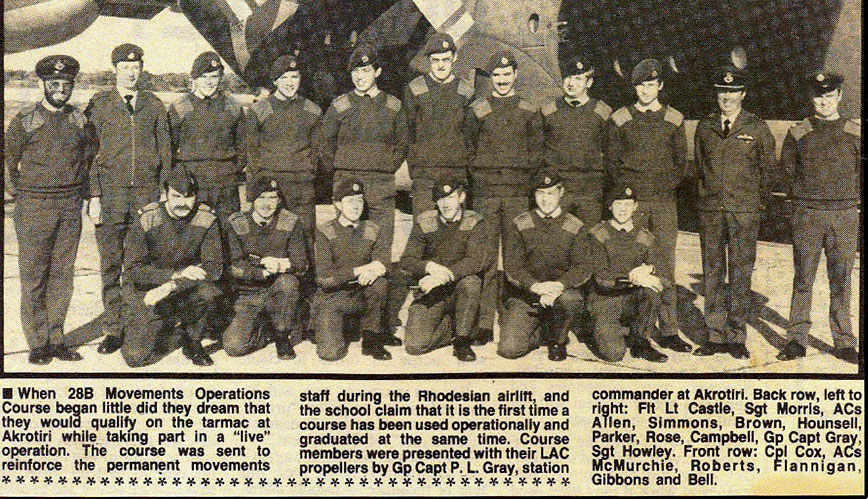
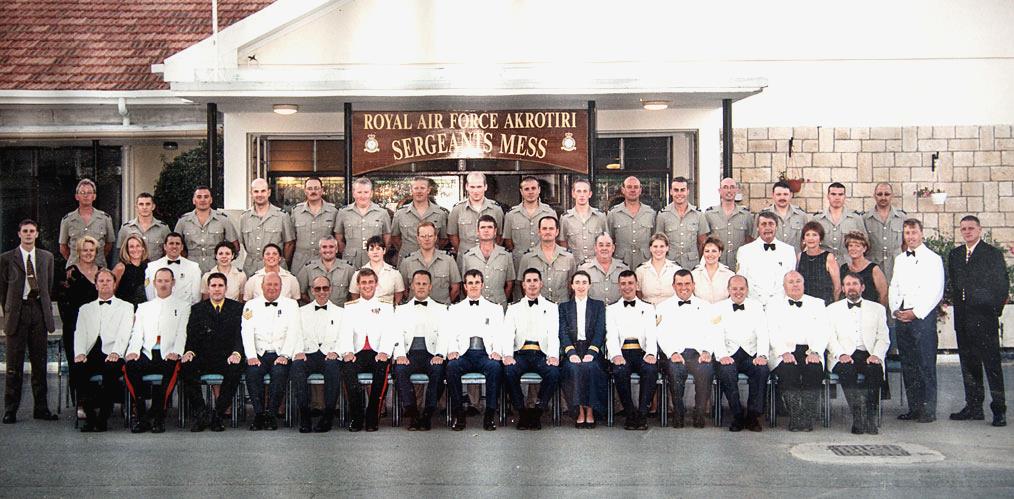
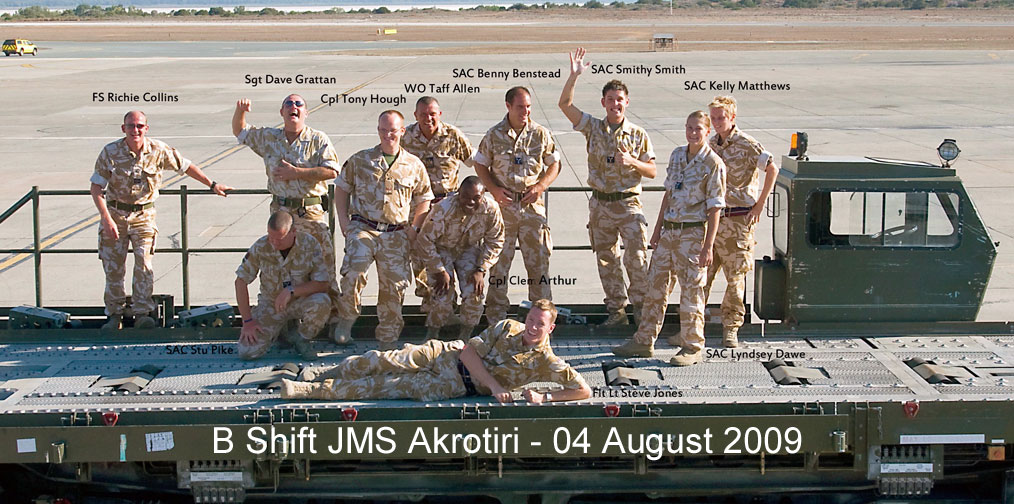

From: Jeremy Babington, Frome, Somerset
Subject: Memories of RAF Akrotiri
The Author accepts no responsibility for factual accuracy in the following account – his memory is not what it was!
My memories are separated by a space of 10 years.
First. I joined UKMAMS as a wet behind the ears officer in April 1974. I seem to recall I then underwent a period of much needed training for the next 3 months.
On Aug 14 I was sent as a reinforcement to the 4 MAMS teams already at Akrotiri assisting the Air Movs Sqn in provding 24 hour cover following the Turkish invasion of Cyprus. I was flown out in a 216 Sqn Comet as the sole passenger; all lights were extinguished 500 miles out but the landing must have been successful!
I spent the next 8 days living in a tent at the back of Load Control. The highlight was eating in the Airmen’s Mess – great food. The lowlights were:
a. Seeing the many families of Service and Civil Service personnel with no possessions being coached to the rather rudimentary Passenger Terminal, some still in their beachwear, prior to their emergency evacuation from the Island and being given blankets etc., before their flight back home, mostly by C-130.
b. Having to unload inbound C-130s from the UK and then reload onto a 70 Sqn C-130 because that was the only Sqn authorised to land at the Dhekelia dirt strip, all in a Cypriot August heat.
Second. In April 1984 I landed the dream job of S Mov O Cyprus, taking over from Richard Bond. The rather grand sounding title, as opposed to SAMO RAF Akrotiri, was because I had responsibility for the Joint Air Booking Centre (JABC) and the Joint Services Port Unit (JSPU) in Limassol as well as the Air Movements Flight. For the next 3 years I had a rather fractious relationship with an RCT Lt Col based at HQ BFC Episkopi who had somewhat avaricious aims over the “Joint” parts of my organisation. Nevertheless I had a thoroughly enjoyable tour supported throughout by a great team of dedicated, talented and industrious individuals. Well done and thank you to each and every one of them.
Subject: Memories of RAF Akrotiri
The Author accepts no responsibility for factual accuracy in the following account – his memory is not what it was!
My memories are separated by a space of 10 years.
First. I joined UKMAMS as a wet behind the ears officer in April 1974. I seem to recall I then underwent a period of much needed training for the next 3 months.
On Aug 14 I was sent as a reinforcement to the 4 MAMS teams already at Akrotiri assisting the Air Movs Sqn in provding 24 hour cover following the Turkish invasion of Cyprus. I was flown out in a 216 Sqn Comet as the sole passenger; all lights were extinguished 500 miles out but the landing must have been successful!
I spent the next 8 days living in a tent at the back of Load Control. The highlight was eating in the Airmen’s Mess – great food. The lowlights were:
a. Seeing the many families of Service and Civil Service personnel with no possessions being coached to the rather rudimentary Passenger Terminal, some still in their beachwear, prior to their emergency evacuation from the Island and being given blankets etc., before their flight back home, mostly by C-130.
b. Having to unload inbound C-130s from the UK and then reload onto a 70 Sqn C-130 because that was the only Sqn authorised to land at the Dhekelia dirt strip, all in a Cypriot August heat.
Second. In April 1984 I landed the dream job of S Mov O Cyprus, taking over from Richard Bond. The rather grand sounding title, as opposed to SAMO RAF Akrotiri, was because I had responsibility for the Joint Air Booking Centre (JABC) and the Joint Services Port Unit (JSPU) in Limassol as well as the Air Movements Flight. For the next 3 years I had a rather fractious relationship with an RCT Lt Col based at HQ BFC Episkopi who had somewhat avaricious aims over the “Joint” parts of my organisation. Nevertheless I had a thoroughly enjoyable tour supported throughout by a great team of dedicated, talented and industrious individuals. Well done and thank you to each and every one of them.
The highlights were:
• Being able to use the new Air Terminal and adapting its use for the first TriStar arrival.
• The view from my office window over the Salt Lake and up to Troodos – who wouldn’t want to go to work?
• The sight of Lightnings from Binbrook, out on Armament Practice Camp, firing up a at dusk and performing take-offs followed by a 20,000 foot vertical ascent on reheat – followed by a quick return before running out of fuel.
• Looking after too many VIPs to mention – usually greeted by Commander BFC, General Sir Desmond Langley and latterly by his successor, AVM Kenneth Hayr.
• The arrival of Delta Force direct from the USA, at night in pitch darkness in response, if memory serves me correctly, to the hijacking of the Achille Lauro in 1985.
• Being flown out in a Sikorsky Jolly Green Giant to the USS Nimitz, on operational patrol off Lebanon, to secure supplies for Delta Force. I will always remember the walk across the flight deck!
• Seeing the Red Arrows on their pre-season work-up each year – 3 displays a day for 3 weeks! Wife not too pleased with the effects of the “Smoke on - go!” on washing!
The lowlights were:
• The very sad suicide of one of my young airmen. Akrotiri, back then, when comms were so poor was counter intuitively, not a very happy posting for young single airmen, miles from home and family.
• Managing the “Car Indulgence” scheme, whereby personnel at the end of their tours could enter a “draw” each month the lucky few winners of which might just get their cherished vehicle flown home to UK on a C130 if space allowed. Much angst!
• Sunday afternoon, 3 Aug 1986 when, whilst enjoying a BBQ with my family on the MQ veranda, we were rudely interrupted by the sound of gunfire followed by the crump of mortars. Ten minutes later the station siren sounded and life at Akrotiri changed forever, particularly for 34 Sqn RAF Regt, as they subsequently constructed and manned permanent defences in the bondu on the landward side of the Station.
• Being able to use the new Air Terminal and adapting its use for the first TriStar arrival.
• The view from my office window over the Salt Lake and up to Troodos – who wouldn’t want to go to work?
• The sight of Lightnings from Binbrook, out on Armament Practice Camp, firing up a at dusk and performing take-offs followed by a 20,000 foot vertical ascent on reheat – followed by a quick return before running out of fuel.
• Looking after too many VIPs to mention – usually greeted by Commander BFC, General Sir Desmond Langley and latterly by his successor, AVM Kenneth Hayr.
• The arrival of Delta Force direct from the USA, at night in pitch darkness in response, if memory serves me correctly, to the hijacking of the Achille Lauro in 1985.
• Being flown out in a Sikorsky Jolly Green Giant to the USS Nimitz, on operational patrol off Lebanon, to secure supplies for Delta Force. I will always remember the walk across the flight deck!
• Seeing the Red Arrows on their pre-season work-up each year – 3 displays a day for 3 weeks! Wife not too pleased with the effects of the “Smoke on - go!” on washing!
The lowlights were:
• The very sad suicide of one of my young airmen. Akrotiri, back then, when comms were so poor was counter intuitively, not a very happy posting for young single airmen, miles from home and family.
• Managing the “Car Indulgence” scheme, whereby personnel at the end of their tours could enter a “draw” each month the lucky few winners of which might just get their cherished vehicle flown home to UK on a C130 if space allowed. Much angst!
• Sunday afternoon, 3 Aug 1986 when, whilst enjoying a BBQ with my family on the MQ veranda, we were rudely interrupted by the sound of gunfire followed by the crump of mortars. Ten minutes later the station siren sounded and life at Akrotiri changed forever, particularly for 34 Sqn RAF Regt, as they subsequently constructed and manned permanent defences in the bondu on the landward side of the Station.

From: Alexander Angus, Kippax near Leeds, Yorkshire
Subject: Memories of RAF Akrotiri
Although never posted to Akrotiri, I did visit on two occasions, both while on the strength of 6 Squadron. The first time, in 1973, was a NATO fire power demo where the two Phantoms destroyed the practice targets. I met up with Pete Gulliver who took me to the Limassol wine festival and barely remember getting back to their house.
Then in 1974, the squadron was back to protect the Sovereign Base Area (SBA) when the Turks invaded. We became the 641st TFRW (Tactical Fighter Reconnaissance Wing) as we had both 64 and 41 Squadron aircraft.
Stores being self running, boredom soon set in until I became o/c MT. Not content with having my own 3 tonner, I also gave a hand on the line and had the distinction of being the ground crew for Sqn Ldr Constable when he was the only one to fire at a Turkish aircraft as it encroached our airspace.
We were told we'd be there for six days and that turned out to be seven weeks! Life at the sharp end - I wouldn't change a thing!
All the best
Alex
Subject: Memories of RAF Akrotiri
Although never posted to Akrotiri, I did visit on two occasions, both while on the strength of 6 Squadron. The first time, in 1973, was a NATO fire power demo where the two Phantoms destroyed the practice targets. I met up with Pete Gulliver who took me to the Limassol wine festival and barely remember getting back to their house.
Then in 1974, the squadron was back to protect the Sovereign Base Area (SBA) when the Turks invaded. We became the 641st TFRW (Tactical Fighter Reconnaissance Wing) as we had both 64 and 41 Squadron aircraft.
Stores being self running, boredom soon set in until I became o/c MT. Not content with having my own 3 tonner, I also gave a hand on the line and had the distinction of being the ground crew for Sqn Ldr Constable when he was the only one to fire at a Turkish aircraft as it encroached our airspace.
We were told we'd be there for six days and that turned out to be seven weeks! Life at the sharp end - I wouldn't change a thing!
All the best
Alex

From: Gordon Gray, Allestree, Derby
Subject: Memories of Akrotiri - plus MAMS Training Interuptus
Hello Tony,
Memories of RAF Akrotiri from a different viewpoint between 1978-81 - there was a Flt. Lt., myself, a Sgt. and two Cpls. and we were all liiving in Married Quarters on the camp but operating in the Port Unit at Limassol, along with two Royal Corps of Transport guys. Shipping by sea was obviously our remit covering all aspects of Army unit moves of their equipment by container and a monthly RFA vessel into Limassol Port.
We also dealt with the annual RFA LSL (Sir Lancelot) bringing in various ammunitions at Akrotiri Mole with 10 Port Squadron RCT for visiting Squadrons' missile practices on the ranges. We would then back-load with numerous Indulgence cars belonging to personnel repatriated to the UK and other equipment into Marchwood. The cargo always included at least two or three Morris Minor Travellers and old Bedford buses that had been refurbished in REME's 48 Command Workshops.
We joined in the occasional Army BFT runs that a couple of us RAF volunteered to do but much interaction was with the RAF at Akrotiri, including Mess functions, RAF and Army VIP official celebrations and parades. But being separated from the Air Movements function seeing aircraft was always a comforting feature, especially during Open Days with attached Squadrons on show and when the Red Arrows were on display work-up visits. Lightnings on their near vertical climbs always attracted attention, especially at night, as well as V-Bombers providing a shattering disturbance to a quiet afternoon on the beach.
Subject: Memories of Akrotiri - plus MAMS Training Interuptus
Hello Tony,
Memories of RAF Akrotiri from a different viewpoint between 1978-81 - there was a Flt. Lt., myself, a Sgt. and two Cpls. and we were all liiving in Married Quarters on the camp but operating in the Port Unit at Limassol, along with two Royal Corps of Transport guys. Shipping by sea was obviously our remit covering all aspects of Army unit moves of their equipment by container and a monthly RFA vessel into Limassol Port.
We also dealt with the annual RFA LSL (Sir Lancelot) bringing in various ammunitions at Akrotiri Mole with 10 Port Squadron RCT for visiting Squadrons' missile practices on the ranges. We would then back-load with numerous Indulgence cars belonging to personnel repatriated to the UK and other equipment into Marchwood. The cargo always included at least two or three Morris Minor Travellers and old Bedford buses that had been refurbished in REME's 48 Command Workshops.
We joined in the occasional Army BFT runs that a couple of us RAF volunteered to do but much interaction was with the RAF at Akrotiri, including Mess functions, RAF and Army VIP official celebrations and parades. But being separated from the Air Movements function seeing aircraft was always a comforting feature, especially during Open Days with attached Squadrons on show and when the Red Arrows were on display work-up visits. Lightnings on their near vertical climbs always attracted attention, especially at night, as well as V-Bombers providing a shattering disturbance to a quiet afternoon on the beach.
You could very nearly set your clock daily with the U2 Blackbird returning from the Eastern Med over the beach clubs on Ladies Mile. When showing visitors around the Camp it would draw a chuckle when passing the American U2 guys doing their after flight checks, their comments were nearly always "Hi, you do know we're not really here?"
A sombre moment when sat in our JSPU Petsas hire VW minibus in the Port, looking skyward seeing a pall of thick black smoke at Akrotiri, then on return to camp learning that a 100 Sqdn. Canberra crashed on take off killing both crew.
During Summer months, with shorter work days, it was always a joy driving on return through the tree-lined Plantation Road then the Police Post entry to camp and see either a Herc or VC10 on the pan. There were no regrets for me then, having assimilated back to Movements from Supply when I left ESG at Luqa in 1972. (Note: Maltese Prime Minister Dom Mintoff had kicked all three Services off the Island - only to return in March that year)
Three decades later I was living in Kyrenia in the Turkish North of the Island when a friend, a retired RAF test pilot, invited me as his guest to watch and meet the Red Arrows for their working-up in 2011 and 2012.
During 2012, I accompanied some other characters among whom were an ex-30 Sqdn Herc Captain, and an Air Chief Marshal who was at one time the Wg.Cdr. OC 10 Sqdn. I always remembered the Wg.Cdr because our female Passenger Shift Officer said to me one day that the new OC 10 Sqdn was flying out and passing through and to "Be nice to him because he's going places!" Eventually he settled in South Cyprus as a lot of ex-RAF had done after postings at Akrotiri.
A sombre moment when sat in our JSPU Petsas hire VW minibus in the Port, looking skyward seeing a pall of thick black smoke at Akrotiri, then on return to camp learning that a 100 Sqdn. Canberra crashed on take off killing both crew.
During Summer months, with shorter work days, it was always a joy driving on return through the tree-lined Plantation Road then the Police Post entry to camp and see either a Herc or VC10 on the pan. There were no regrets for me then, having assimilated back to Movements from Supply when I left ESG at Luqa in 1972. (Note: Maltese Prime Minister Dom Mintoff had kicked all three Services off the Island - only to return in March that year)
Three decades later I was living in Kyrenia in the Turkish North of the Island when a friend, a retired RAF test pilot, invited me as his guest to watch and meet the Red Arrows for their working-up in 2011 and 2012.
During 2012, I accompanied some other characters among whom were an ex-30 Sqdn Herc Captain, and an Air Chief Marshal who was at one time the Wg.Cdr. OC 10 Sqdn. I always remembered the Wg.Cdr because our female Passenger Shift Officer said to me one day that the new OC 10 Sqdn was flying out and passing through and to "Be nice to him because he's going places!" Eventually he settled in South Cyprus as a lot of ex-RAF had done after postings at Akrotiri.
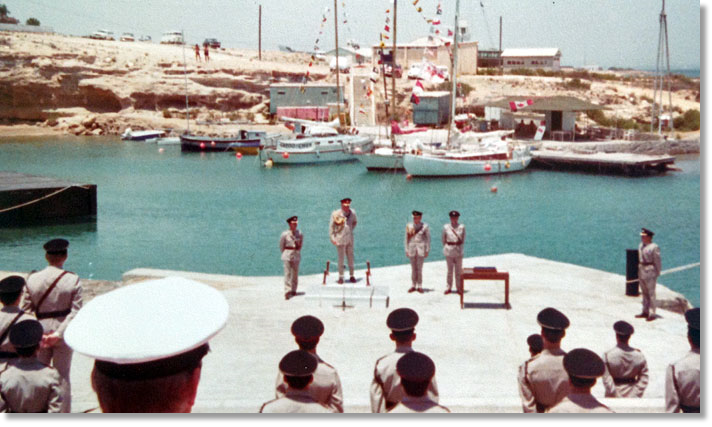
We were encouraged to participate in Army (RCT) parades by a higher authority.
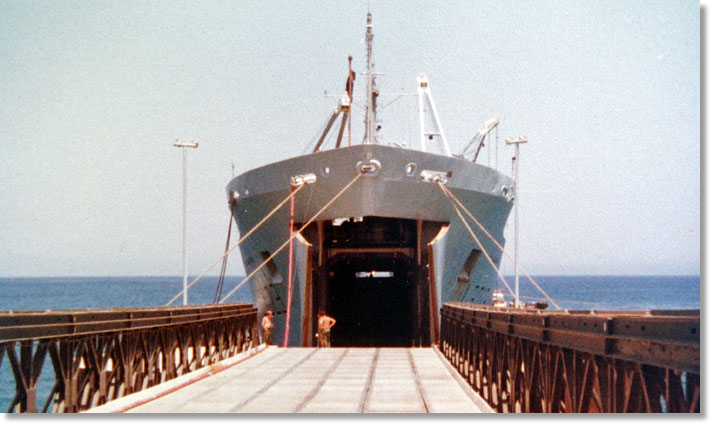
July 1981 - LSL Sir Lancelot at the Akrotiri Mole RO/RO facility waiting to backload
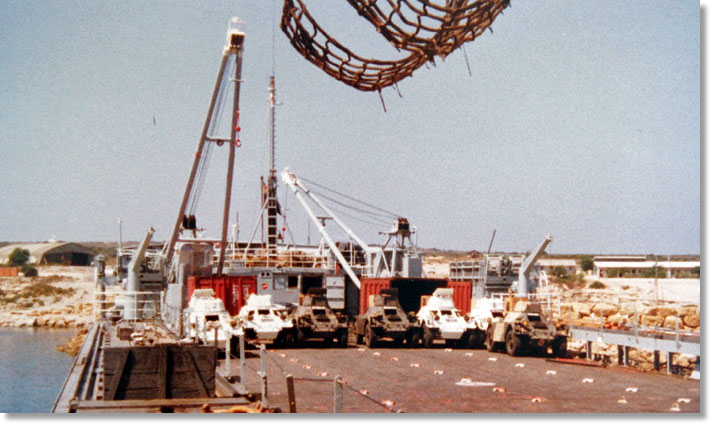
Main deck of the LSL Sir Lancelot
A few memories here, one of which was one of WO Reg Carey's favourite quips, bless him, "Keep Alert - MAMS needs Lerts!"
I never did the camping training exercise in July '77 although fully prepared with Landrover and 1-ton trailer both full to the gunnels then on the move 250 yards outside Lyneham camp gates our radio blasted, "Return to base - you're off to Wittering." That was in support of 'Operation Outwing' for 1 Squadron Harriers to Belize. We flew to Wittering and other teams joined us.
I never did the camping training exercise in July '77 although fully prepared with Landrover and 1-ton trailer both full to the gunnels then on the move 250 yards outside Lyneham camp gates our radio blasted, "Return to base - you're off to Wittering." That was in support of 'Operation Outwing' for 1 Squadron Harriers to Belize. We flew to Wittering and other teams joined us.
MAMS Training Interuptus
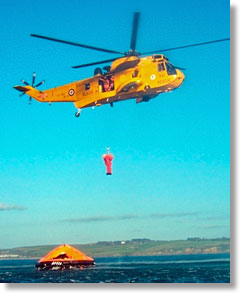
After a gap of nearly five years including tours at Brize and JSPU Cyprus, in January 1982 five of us were in a Landrover driving down to RAF Mount Batten for Sea Survival training. Past the point of no return, on the M5, an engine valve jumped its' guide causing us to crawl along, making one hell of a clatter.
Late arrival at Mount Batten was just in time to get to the MT Section for repair during our stay. A day later we jumped into rough seas from an MCU Pinnace, righted an overturned MS-26 liferaft to then climb into it with some other RAF guys vomiting but bragging they were hardened amateur sailors! One could not escape the feelings of just what it must be like for any of those poor souls who are lost at sea.
The pleasant bit before being winched up to the chopper was the tot of grog!
Kind regards, Gordon
Late arrival at Mount Batten was just in time to get to the MT Section for repair during our stay. A day later we jumped into rough seas from an MCU Pinnace, righted an overturned MS-26 liferaft to then climb into it with some other RAF guys vomiting but bragging they were hardened amateur sailors! One could not escape the feelings of just what it must be like for any of those poor souls who are lost at sea.
The pleasant bit before being winched up to the chopper was the tot of grog!
Kind regards, Gordon

From: Tony Freeman, Thornhill, Dumfries
Subject: Memories of RAF Akrotiri
I was often detached to Akrotiri to cover for the DAMO who was on leave. I was there on the occasion of the opening of the new passenger terminal building back in the day. Once all the dignitaries had assembled, someone threw a switch too many and the whole building was plunged into darkness. The situation was saved by an enterprising SAMO who fetched his car round to the end of the building and shone the headlights on to illuminate the proceedings. Flexibility being the key to air power....
Best wishes, Tony
Subject: Memories of RAF Akrotiri
I was often detached to Akrotiri to cover for the DAMO who was on leave. I was there on the occasion of the opening of the new passenger terminal building back in the day. Once all the dignitaries had assembled, someone threw a switch too many and the whole building was plunged into darkness. The situation was saved by an enterprising SAMO who fetched his car round to the end of the building and shone the headlights on to illuminate the proceedings. Flexibility being the key to air power....
Best wishes, Tony
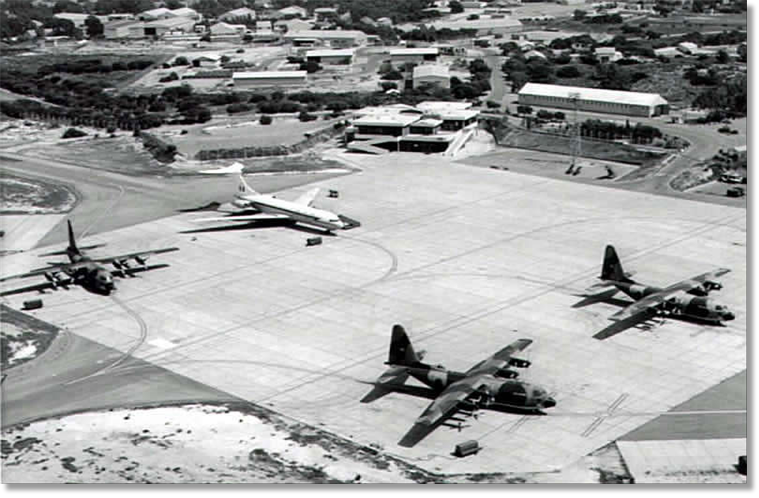
The ramp at RAF Akrotiri - the new passenger terminal is at top centre of the picture

From: Charles Gibson, Monifieth, Angus
Subject: Memories of RAF Akrotiri
Akrotiri - ah yes, remember it well! I was posted from MAMS (Abingdon) and was met by a Paddy who I had been stationed with at Lyneham. So we headed over to the General Office only to be told I was going to Supply. Well, Paddy abandoned me at this point and I ended up in SCAF ordering MT spares.
I lasted a year there and the Boss had me in and said would I like to do a split tour between Akrotiri and Luqa in Malta? When the boss says, "Would you like" he is being polite; what he means is you are going! At least I would be back on Air Movements.
Chas 43rd
Subject: Memories of RAF Akrotiri
Akrotiri - ah yes, remember it well! I was posted from MAMS (Abingdon) and was met by a Paddy who I had been stationed with at Lyneham. So we headed over to the General Office only to be told I was going to Supply. Well, Paddy abandoned me at this point and I ended up in SCAF ordering MT spares.
I lasted a year there and the Boss had me in and said would I like to do a split tour between Akrotiri and Luqa in Malta? When the boss says, "Would you like" he is being polite; what he means is you are going! At least I would be back on Air Movements.
Chas 43rd

From: Ian Place, Meanwood, West Yorks
Subject: Memories of RAF Akrotiri
It started one day after my 25th birthday - 20th July 1974. I and my team, Hotel team (the 'ugly bunch' as we were known) were wisked off to Akrotiri where 'surprise-surprise' panic had spread in like wildfire.
I remember holidaymakers in their flipflops walking off 70 Squadron Hercules and then having to reboard 24 Squadron Hercules parked on the other ramp. At the time we thought it was odd, but it was war so we assumed someone knew the greater plan.
Bristol Britannia's, which were heading down route to Changi, were turned around and sent back to Fairford (Brize was closed for re-surfacing at that time), but having to return to the ramp before take off as they did not have enough fuel!
Palletloads and flat floor loads of medical supplies flown in from all over - very hard work.
All over in 10 days during which all the landrovers ran out of fuel. We recovered on the 30th July to Fairford. Not much else can remember except that we were dry (no alcohol for 10 days) as no one had the time to go and get any
Ian
Subject: Memories of RAF Akrotiri
It started one day after my 25th birthday - 20th July 1974. I and my team, Hotel team (the 'ugly bunch' as we were known) were wisked off to Akrotiri where 'surprise-surprise' panic had spread in like wildfire.
I remember holidaymakers in their flipflops walking off 70 Squadron Hercules and then having to reboard 24 Squadron Hercules parked on the other ramp. At the time we thought it was odd, but it was war so we assumed someone knew the greater plan.
Bristol Britannia's, which were heading down route to Changi, were turned around and sent back to Fairford (Brize was closed for re-surfacing at that time), but having to return to the ramp before take off as they did not have enough fuel!
Palletloads and flat floor loads of medical supplies flown in from all over - very hard work.
All over in 10 days during which all the landrovers ran out of fuel. We recovered on the 30th July to Fairford. Not much else can remember except that we were dry (no alcohol for 10 days) as no one had the time to go and get any
Ian
Click on the banner to read the story behind the story

RAAF to transport Vietnamese peacekeepers to South Sudan
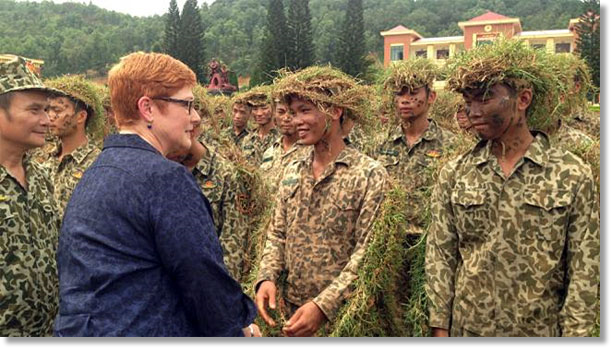
Marise Payne meets a young female sharpshooter in Hanoi
In a demonstration of increasingly close security co-operation between Canberra and Hanoi, the Australian Defence Force will help Vietnam deploy a peacekeeping contingent to South Sudan.
During a visit to Hanoi, Defence Minister Marise Payne agreed that the RAAF would transport the Vietnamese peacekeepers to the troubled African nation and provide some of their equipment.
Australian instructors in Vietnam are helping the Vietnamese prepare for the deployment, including coaching the members of a field hospital to bring their English up to the standard required by the UN for large-scale medical operations. The 70 hospital staff include doctors, nurses and support personnel.
Over the past week, Senator Payne visited Singapore, Thailand, Laos and Vietnam for talks on regional security issues. Forty-four years after Australian troops came home from Vietnam, the relationship between the nations’ defence forces has become steadily closer.
During a visit to Hanoi, Defence Minister Marise Payne agreed that the RAAF would transport the Vietnamese peacekeepers to the troubled African nation and provide some of their equipment.
Australian instructors in Vietnam are helping the Vietnamese prepare for the deployment, including coaching the members of a field hospital to bring their English up to the standard required by the UN for large-scale medical operations. The 70 hospital staff include doctors, nurses and support personnel.
Over the past week, Senator Payne visited Singapore, Thailand, Laos and Vietnam for talks on regional security issues. Forty-four years after Australian troops came home from Vietnam, the relationship between the nations’ defence forces has become steadily closer.
On this visit, Senator Payne was accompanied by ADF Special Forces commander Major General Adam Findlay, who met his counterparts in each country to discuss rising regional security threats and ways to improve co-operation in dealing with them.
Vietnam approached Australia some time ago saying it was looking for a UN mission that was not a combat role to showcase its capabilities. It sought Australian help in planning the mission.
The RAAF is likely to use some of its giant C-17 transport planes to carry the Vietnamese to South Sudan. That will happen once the contingent reaches the level of English-language competence the UN requires of medical personnel on its peacekeeping operations.
The Vietnamese aim to deploy to South Sudan within 12 months.
theaustralian.com.au
Vietnam approached Australia some time ago saying it was looking for a UN mission that was not a combat role to showcase its capabilities. It sought Australian help in planning the mission.
The RAAF is likely to use some of its giant C-17 transport planes to carry the Vietnamese to South Sudan. That will happen once the contingent reaches the level of English-language competence the UN requires of medical personnel on its peacekeeping operations.
The Vietnamese aim to deploy to South Sudan within 12 months.
theaustralian.com.au

More Relevant Stuff

From: Dale Walker, Stockport, Cheshire
Kathy and Dale Walker (RAF) at the Rewind Festival North at Capesthorne Hall near Macclesfield, Cheshire. It's an 80's music festival with some of the bands from our youth. You can Google the full line up but on the Saturday we saw Level 42, fantastic! Headliners were Sister Sledge and of all bands the Village People, and yes, everyone was drunk enough to do the action to YMCA!
Sunday it lashed down with rain but again great bands and finished off with good old fashioned head banging session to Status Quo!
Somewhere in the 5,000 plus strong crowd was Kent 'Siggy' Siggery, who after 39 years, I still work with, now at Flybe. He was with his wife Shaz but to be honest we were texting each other but we never met up, too busy drinking overpriced beer and dancing around like teenagers - it was brilliant!
Kathy and Dale Walker (RAF) at the Rewind Festival North at Capesthorne Hall near Macclesfield, Cheshire. It's an 80's music festival with some of the bands from our youth. You can Google the full line up but on the Saturday we saw Level 42, fantastic! Headliners were Sister Sledge and of all bands the Village People, and yes, everyone was drunk enough to do the action to YMCA!
Sunday it lashed down with rain but again great bands and finished off with good old fashioned head banging session to Status Quo!
Somewhere in the 5,000 plus strong crowd was Kent 'Siggy' Siggery, who after 39 years, I still work with, now at Flybe. He was with his wife Shaz but to be honest we were texting each other but we never met up, too busy drinking overpriced beer and dancing around like teenagers - it was brilliant!
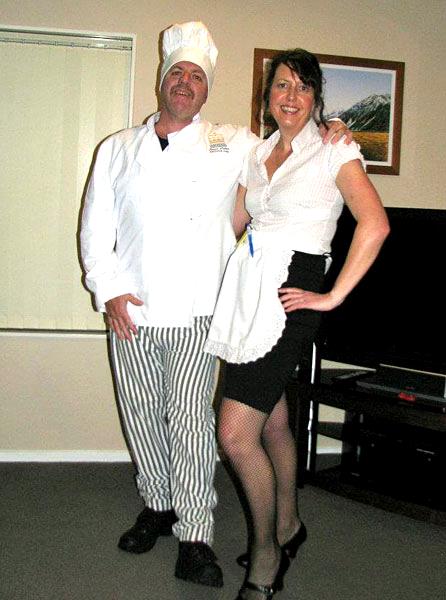
Brian and Charmaine Lay (RNZAF) playing a chef and waitress during a "Whodunit" evening in Wellington, New Zealand, recently.
Bob Dixon, Royal Wootton Bassett
This photo was taken on ‘God’s Wonderful Railway’ (aka Great Western Railway). I was going to lunch in the RAF Club in London with a very special group of men – all members of BALLS! (Benevolent Autocrats Luncheon and Leisure Society).
We meet twice a year for lunch in various London locations but mainly in the RAF Club and we normally continue the meeting in a hostelry in Shepherd’s Market afterwards. Apart from enjoying ourselves immensely we raise money for charities and have done so for over 25 years. It is a very varied group and entry is by invitation from a fellow reveller.
BALLS was first started by the RAF, taking in representatives from the Army and Navy and spread to the Security Services (have to kill you if I named them) London Fire Brigade, London Metropolitan and City Police, the Ritz Casino Security Officer, the Guards Museum and BBC Antiques Roadshow military specialists... I could go on. However, the bottom line is that about 40 of us meet for a splendid lunch, animated conversation, great and noisy jollity and huge fun. Bit like the Air Force used to be?
By the way the tie symbol is two golden dangling balls and kudos is gained by wearing it in unusual places. My contribution was to do so when taking part in formation aerobatics with the Breitling jet team in France!
This photo was taken on ‘God’s Wonderful Railway’ (aka Great Western Railway). I was going to lunch in the RAF Club in London with a very special group of men – all members of BALLS! (Benevolent Autocrats Luncheon and Leisure Society).
We meet twice a year for lunch in various London locations but mainly in the RAF Club and we normally continue the meeting in a hostelry in Shepherd’s Market afterwards. Apart from enjoying ourselves immensely we raise money for charities and have done so for over 25 years. It is a very varied group and entry is by invitation from a fellow reveller.
BALLS was first started by the RAF, taking in representatives from the Army and Navy and spread to the Security Services (have to kill you if I named them) London Fire Brigade, London Metropolitan and City Police, the Ritz Casino Security Officer, the Guards Museum and BBC Antiques Roadshow military specialists... I could go on. However, the bottom line is that about 40 of us meet for a splendid lunch, animated conversation, great and noisy jollity and huge fun. Bit like the Air Force used to be?
By the way the tie symbol is two golden dangling balls and kudos is gained by wearing it in unusual places. My contribution was to do so when taking part in formation aerobatics with the Breitling jet team in France!
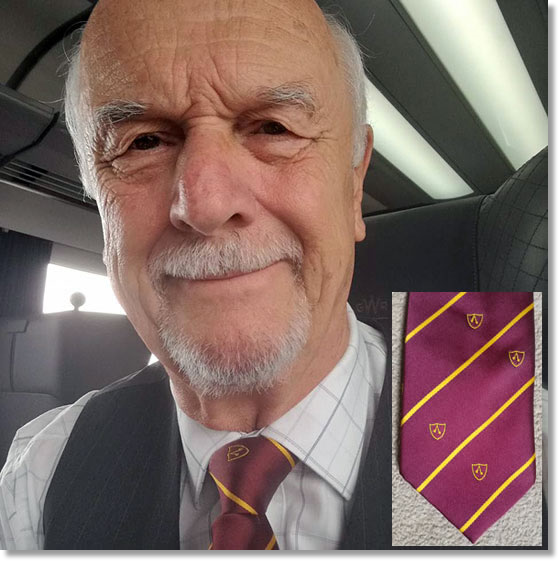
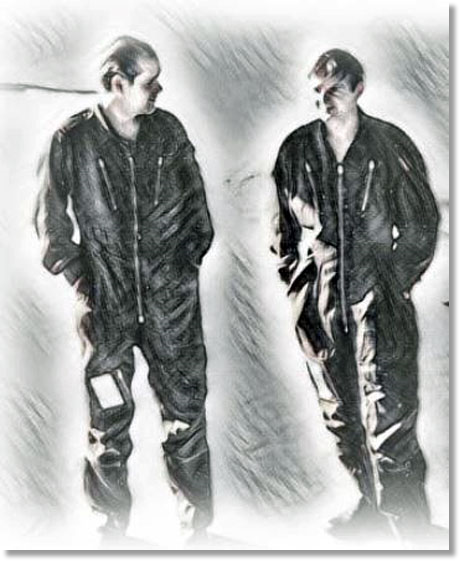
John "Troop" Smith and Tony Gale (RAF) in Adelaide, South Australia, 1971
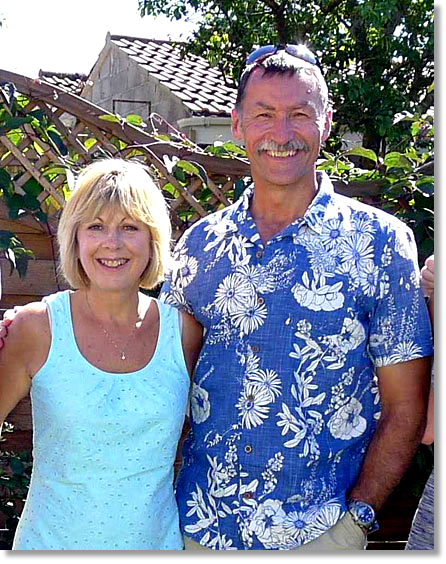
Kim and Jerry Allen (RAF) enjoying some rare sunshine in Cheltenham
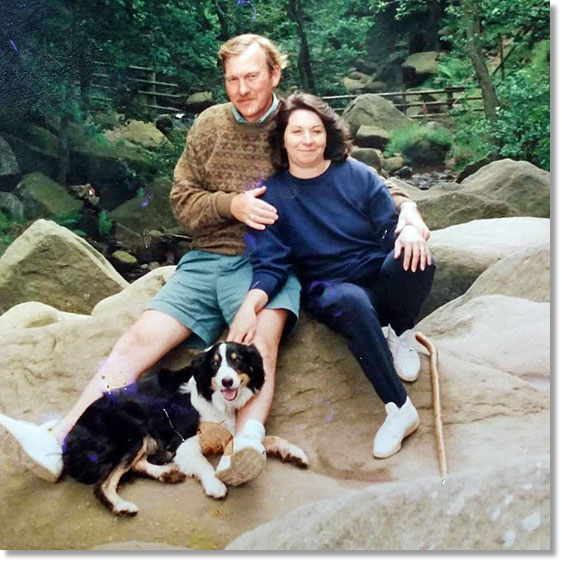
Pete, Rose and "Pompey" Herring (RAF) - Cheshire, 1980-ish
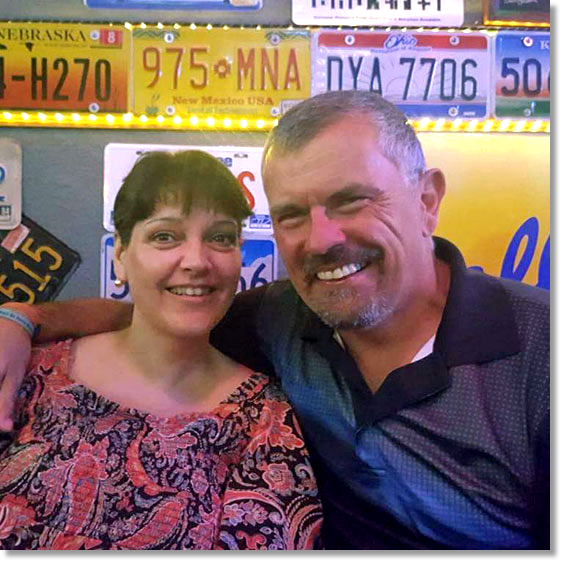
Caroline and Richard (Taff) Allen (RAF) on holiday in Davenport, Florida
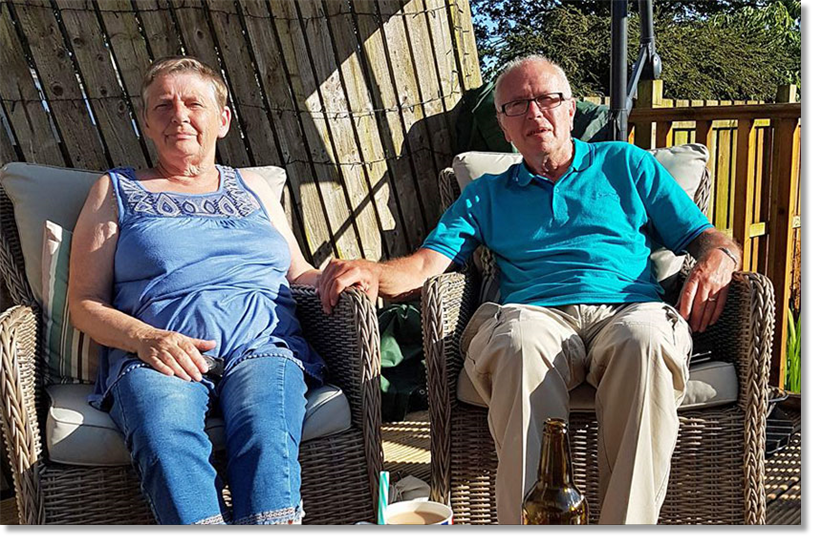
Kay and John Tudor (RAF) celebrating John's 69th birthday in Stevenston, Scotland

Tom Forster (RCAF) with Granddaughter, Kaylee, in Trenton, ON
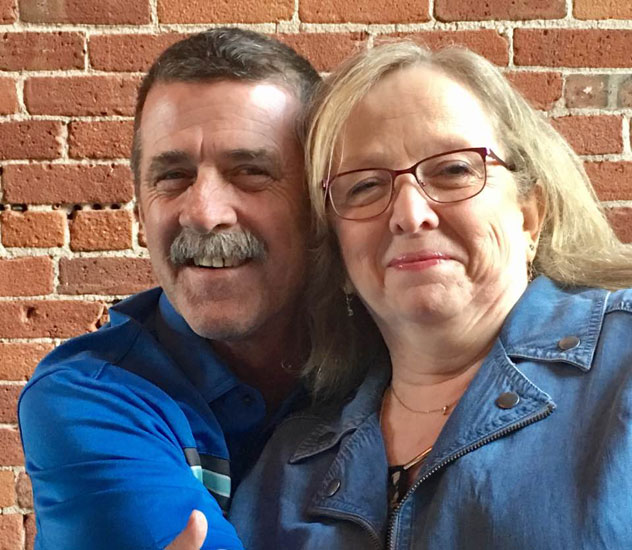
Rick Hinks (RCAF) and Sue Mills-Dumouchel. We are what we call "Lahr Brats" - grew up on Canadian Military bases in Europe. We had a Reunion in Trenton ON. Sue is an old friend from those days
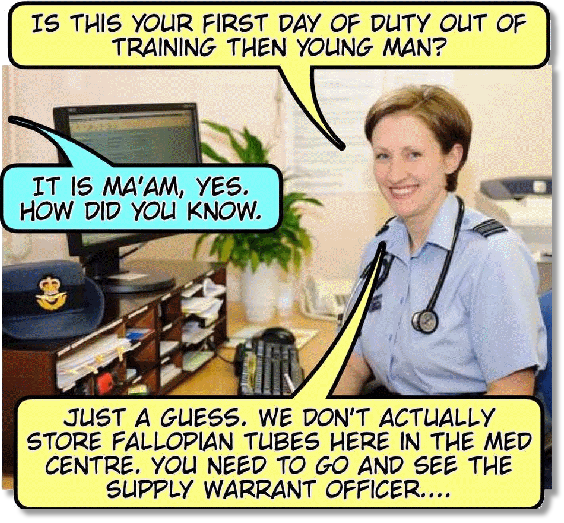

From: Tony Gale, Gatineau, QC
Subject: Memories of Akrotiri - Operation Ablaut
I recall the time I was working at MoD in Whitehall, in Movements Operations (RAF). It was during the Cyprus crisis of 1974 - we had been working for over 24 hours arranging the evacuation of British dependants when the Prime Minister (Harold Wilson) told us to double the size of the airlift! Anyway, earlier that morning, 2 or 3 o'clock, we had made the arrangements to make Archbishop Makarios "disappear" We had a helicopter bring him from Nicosia to Akrotiri where an Argosy was standing by to take him to Luqa - all the arrangements worked out just fine and he was summarily vanished, literally, into thin air.
At lunchtime that same day, I headed off to Garvey's, a favourite sandwich spot, and the newspaper boys on the corners were displaying headlines that read "Makarios Kidnapped! Whereabouts Unknown!" I had to bite my tongue - in my mind I was screaming "I know where he is!"
We had a closed circuit television connection with all of the major Ops rooms throughout MoD, and several times a day we would tune in for "Prayers". The Prime Minister was on too - only in voice though, there was no image from Number 10.
It was hilarious sometimes, as the PM would ask a question of say, the Army Ops, and they would fumble and 'ummm ummm, well, let's see, I really think that comes under the Navy or RAF management blah blah blah' - just avoiding the whole thing because they did not have an immediate answer!
We would also get SitReps over the same system - showing the different lines of battle and explaining who was shooting who etc.. My boss, Squadron Leader John Wilkinson, had a villa on Cyprus, and so he would very carefully follow the daily reports, watching the front line creep towards his villa. One morning it had happened - his home away from home was well and truly located in enemy territory - he was devastated! About an hour later, there was a report over the system that a donkey was walking down the beach with what appeared to be a grand piano on its back. Squadron Leader Wilkinson screamed "That's my bloody piano!"
All of us in the Ops room just laughed so damn hard - we all had tears in our eyes! As a footnote, I never did find out if the report of the donkey was factual or just a set-up.
As an aside, it was in this office that I saw the very first fax machine - way back in the mid '70s. There was a cylinder affair, similar in size and appearance to Thos. Edison's first phonograph recording machine. The page to be transmitted was wrapped around the cylinder, and a manual telephone connection was made. As far as I recall, there was only one other machine - at Upavon. Once we had chatted to whomever on the other end, the receiver was placed into a modem cradle, the cylinder started to spin and transmission commenced. The actual time taken for one page was in excess of five minutes - accompanied by a lot of whirring noises. This was real cutting edge technology in those days.
Tony Gale
Subject: Memories of Akrotiri - Operation Ablaut
I recall the time I was working at MoD in Whitehall, in Movements Operations (RAF). It was during the Cyprus crisis of 1974 - we had been working for over 24 hours arranging the evacuation of British dependants when the Prime Minister (Harold Wilson) told us to double the size of the airlift! Anyway, earlier that morning, 2 or 3 o'clock, we had made the arrangements to make Archbishop Makarios "disappear" We had a helicopter bring him from Nicosia to Akrotiri where an Argosy was standing by to take him to Luqa - all the arrangements worked out just fine and he was summarily vanished, literally, into thin air.
At lunchtime that same day, I headed off to Garvey's, a favourite sandwich spot, and the newspaper boys on the corners were displaying headlines that read "Makarios Kidnapped! Whereabouts Unknown!" I had to bite my tongue - in my mind I was screaming "I know where he is!"
We had a closed circuit television connection with all of the major Ops rooms throughout MoD, and several times a day we would tune in for "Prayers". The Prime Minister was on too - only in voice though, there was no image from Number 10.
It was hilarious sometimes, as the PM would ask a question of say, the Army Ops, and they would fumble and 'ummm ummm, well, let's see, I really think that comes under the Navy or RAF management blah blah blah' - just avoiding the whole thing because they did not have an immediate answer!
We would also get SitReps over the same system - showing the different lines of battle and explaining who was shooting who etc.. My boss, Squadron Leader John Wilkinson, had a villa on Cyprus, and so he would very carefully follow the daily reports, watching the front line creep towards his villa. One morning it had happened - his home away from home was well and truly located in enemy territory - he was devastated! About an hour later, there was a report over the system that a donkey was walking down the beach with what appeared to be a grand piano on its back. Squadron Leader Wilkinson screamed "That's my bloody piano!"
All of us in the Ops room just laughed so damn hard - we all had tears in our eyes! As a footnote, I never did find out if the report of the donkey was factual or just a set-up.
As an aside, it was in this office that I saw the very first fax machine - way back in the mid '70s. There was a cylinder affair, similar in size and appearance to Thos. Edison's first phonograph recording machine. The page to be transmitted was wrapped around the cylinder, and a manual telephone connection was made. As far as I recall, there was only one other machine - at Upavon. Once we had chatted to whomever on the other end, the receiver was placed into a modem cradle, the cylinder started to spin and transmission commenced. The actual time taken for one page was in excess of five minutes - accompanied by a lot of whirring noises. This was real cutting edge technology in those days.
Tony Gale
This newsletter is dedicated
To the memories of:
Andy Venning (RAF)
Chris "Spike" Maris (RAF
David Alliston (RAF)
Bob Ford (RAF)
To the memories of:
Andy Venning (RAF)
Chris "Spike" Maris (RAF
David Alliston (RAF)
Bob Ford (RAF)
Tony Gale
ukmamsoba@gmail.com
ukmamsoba@gmail.com







